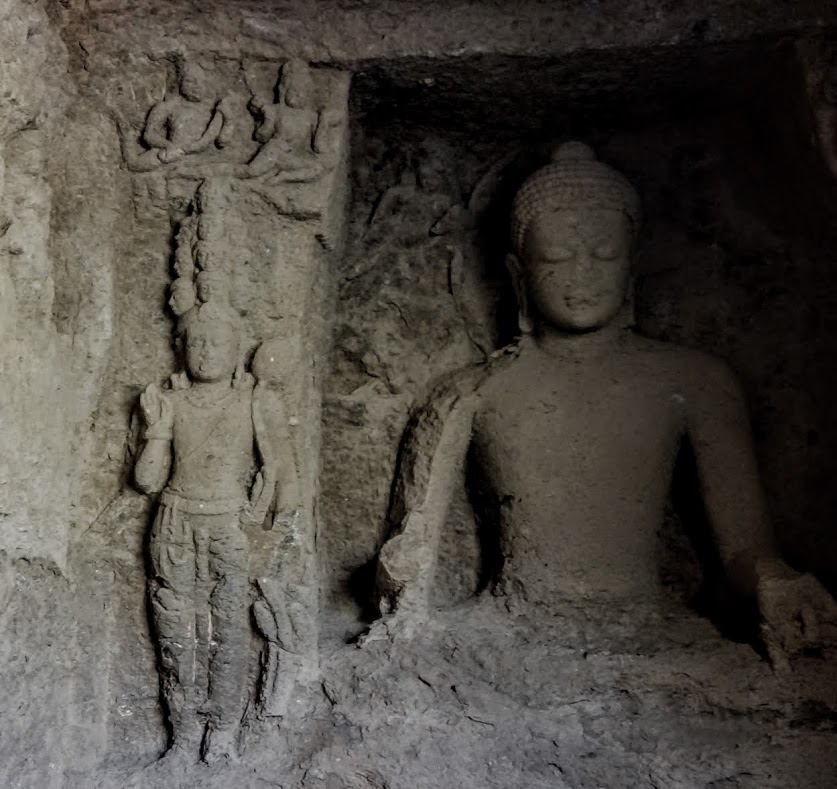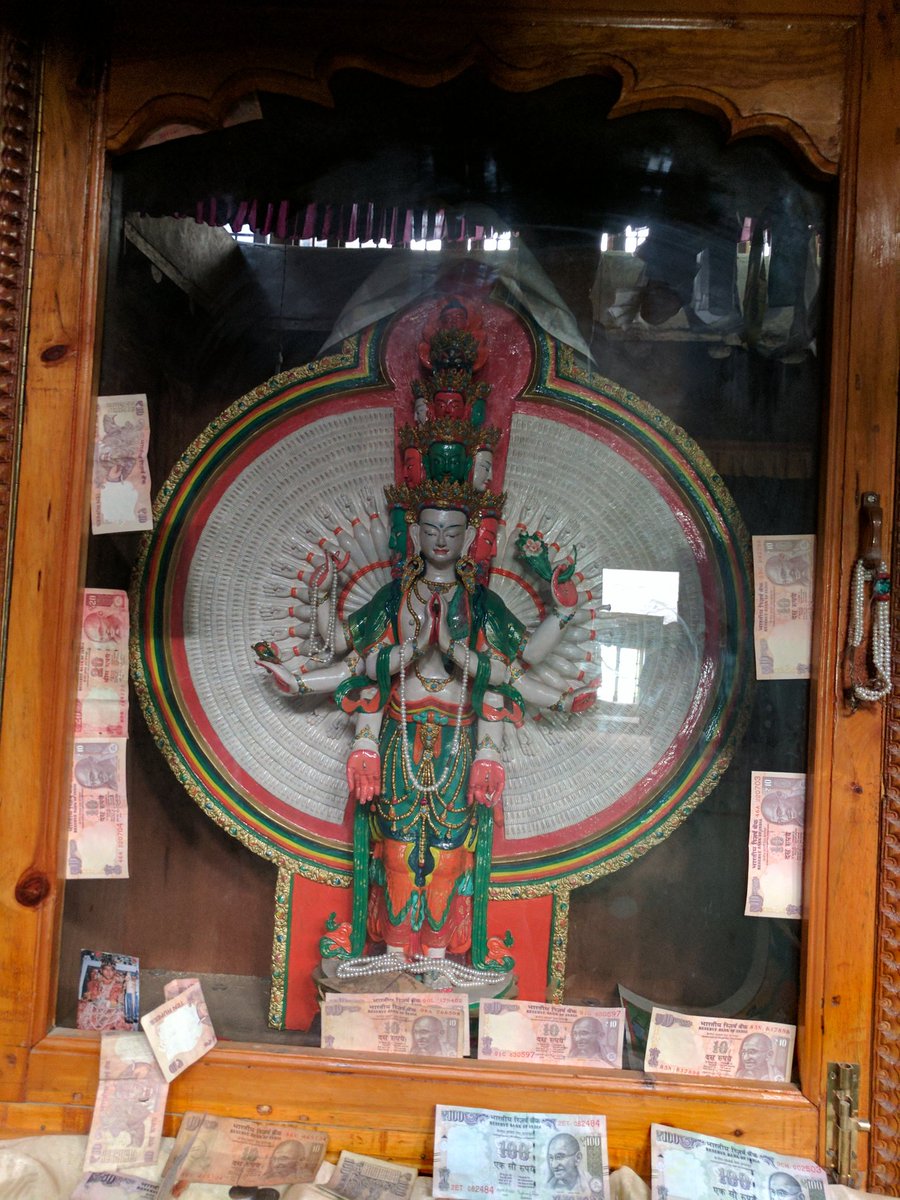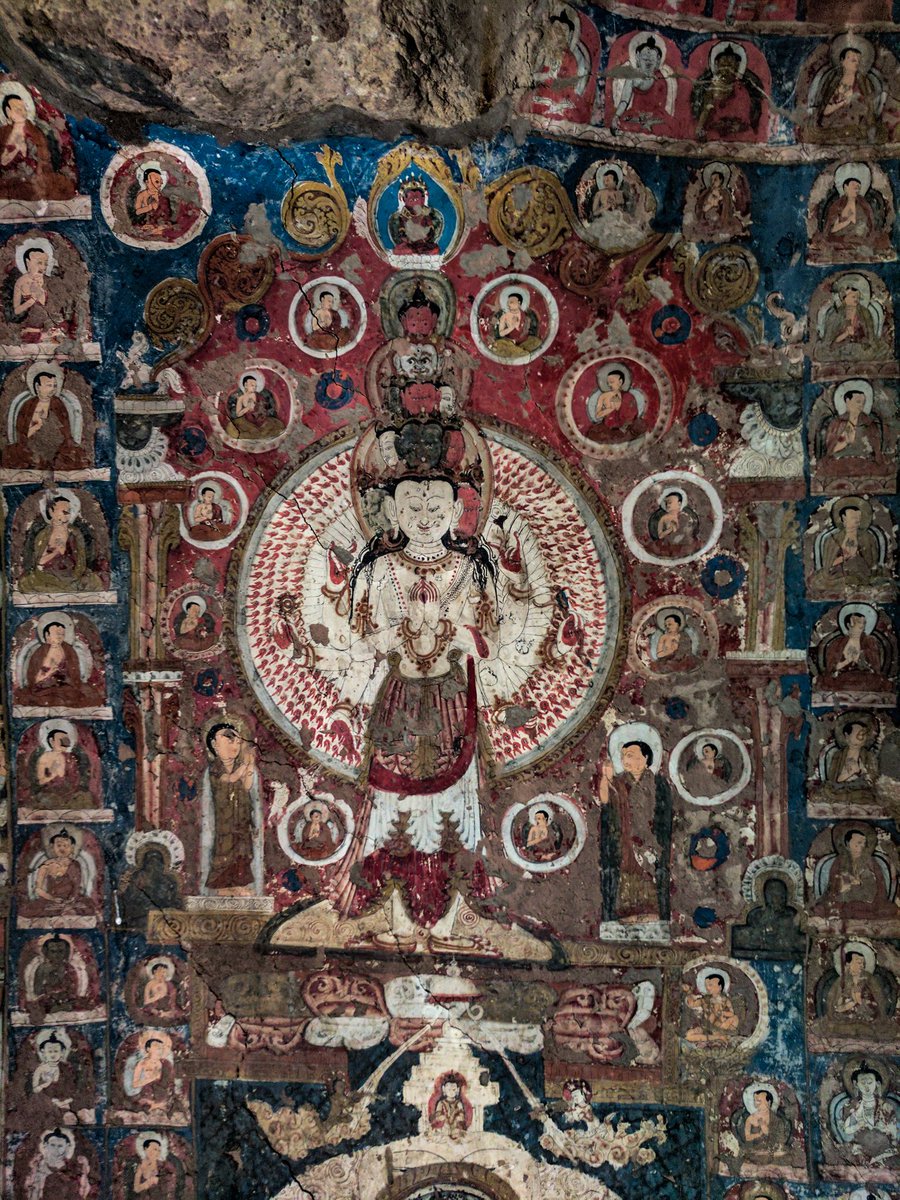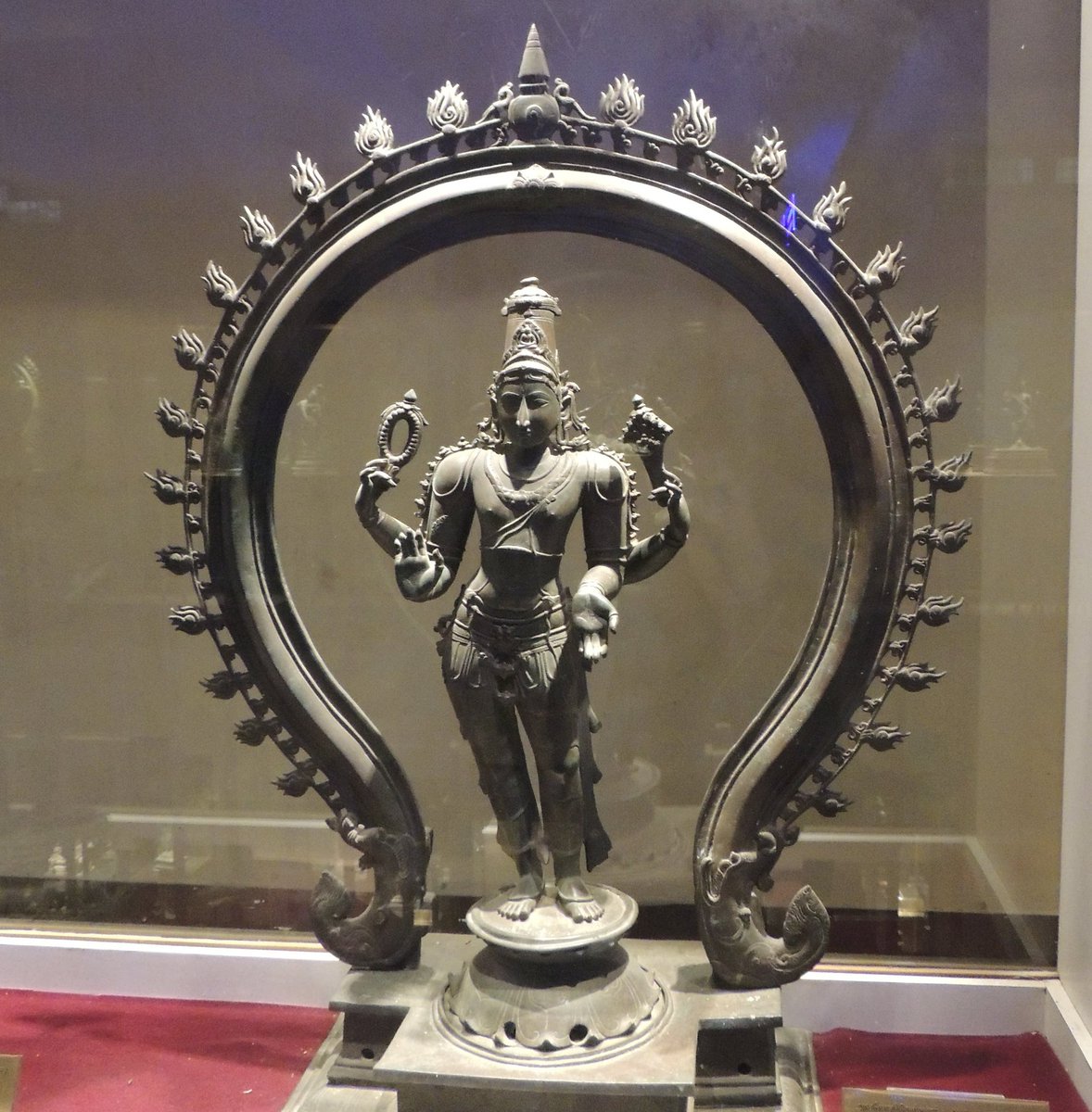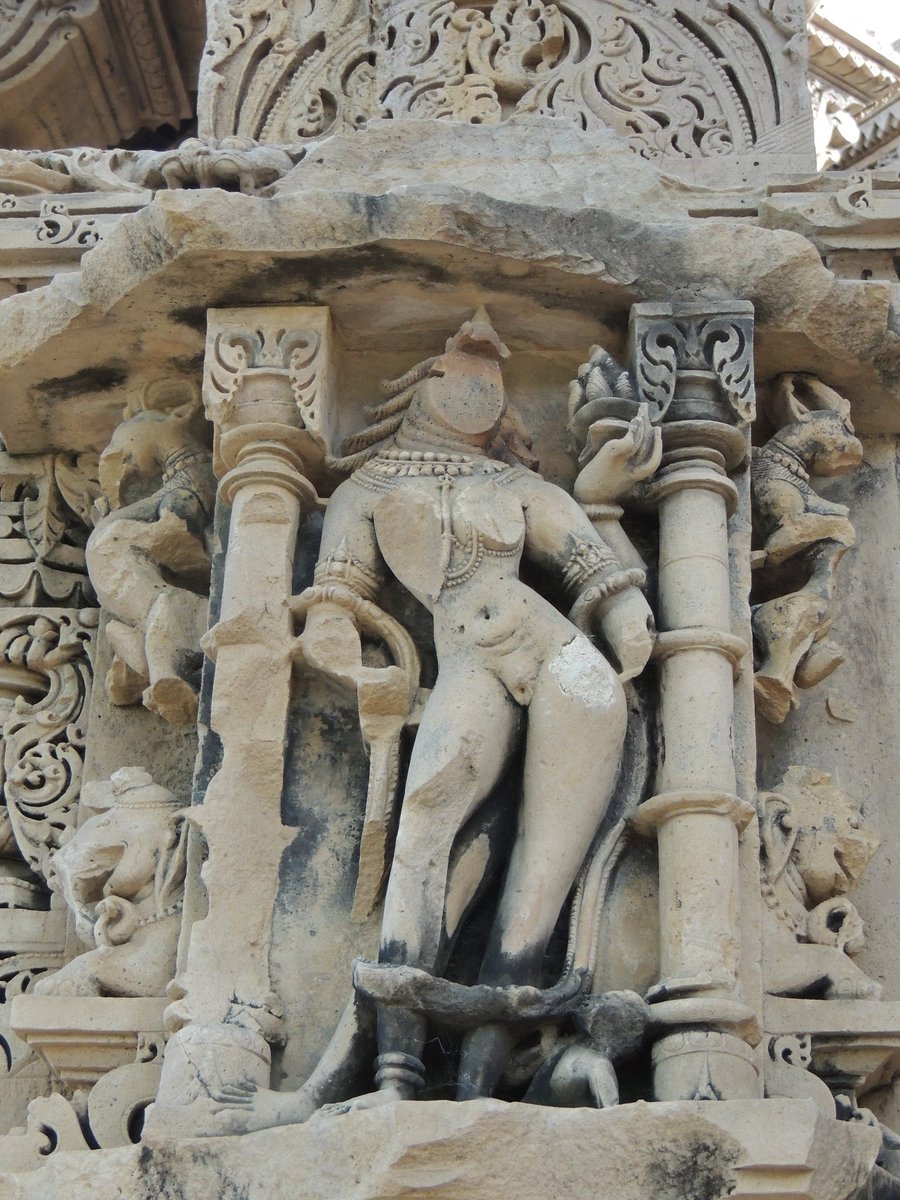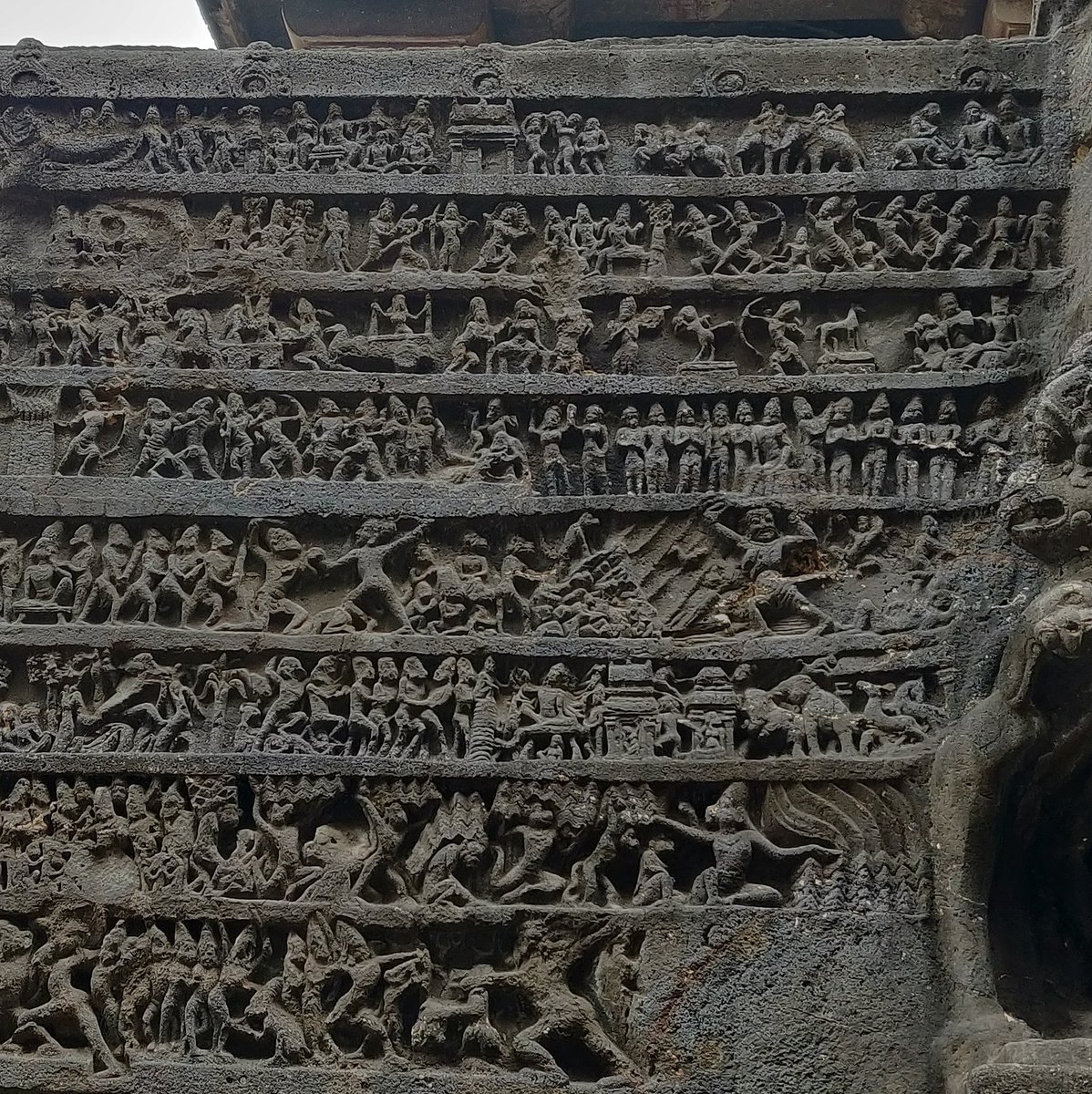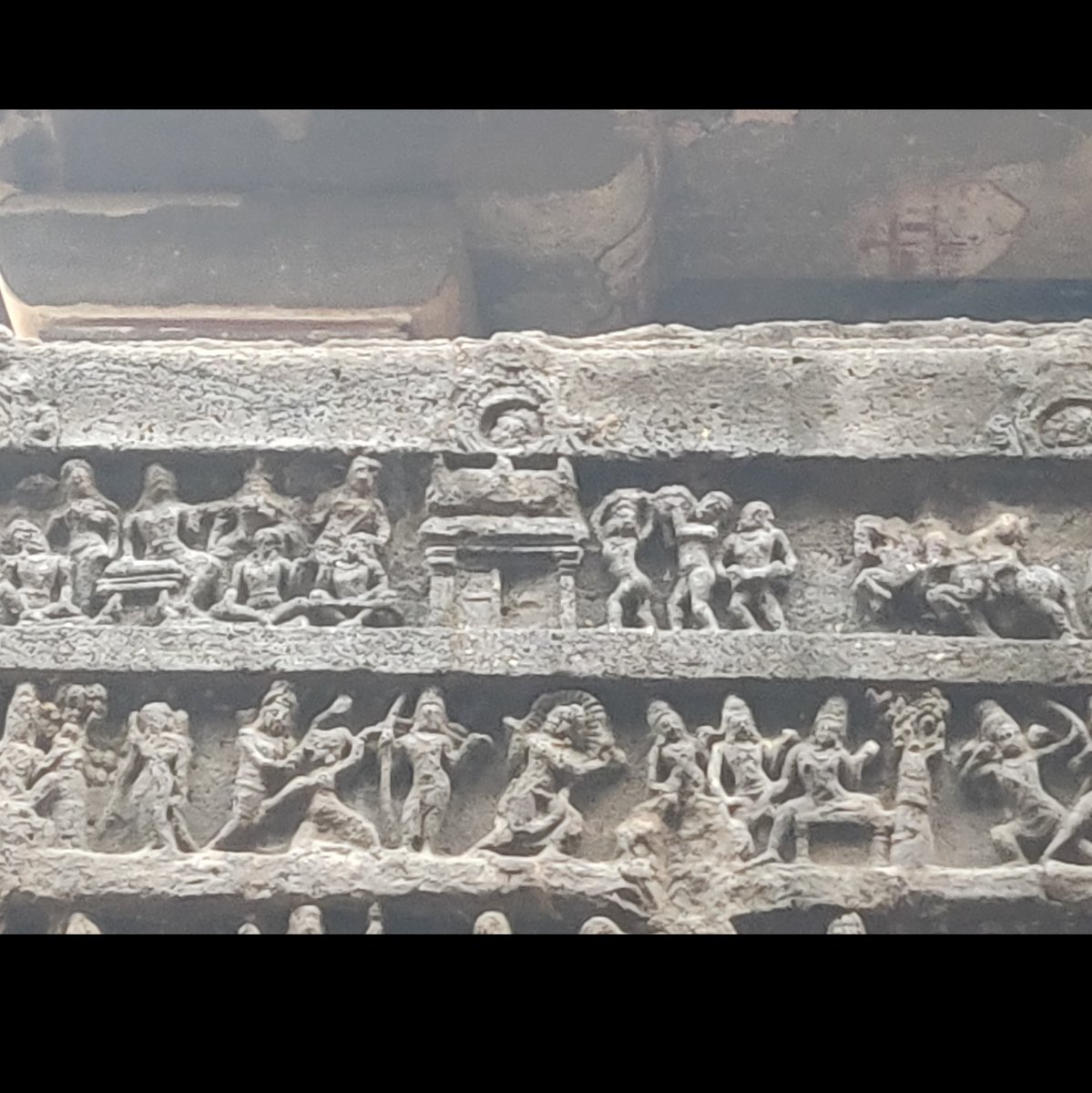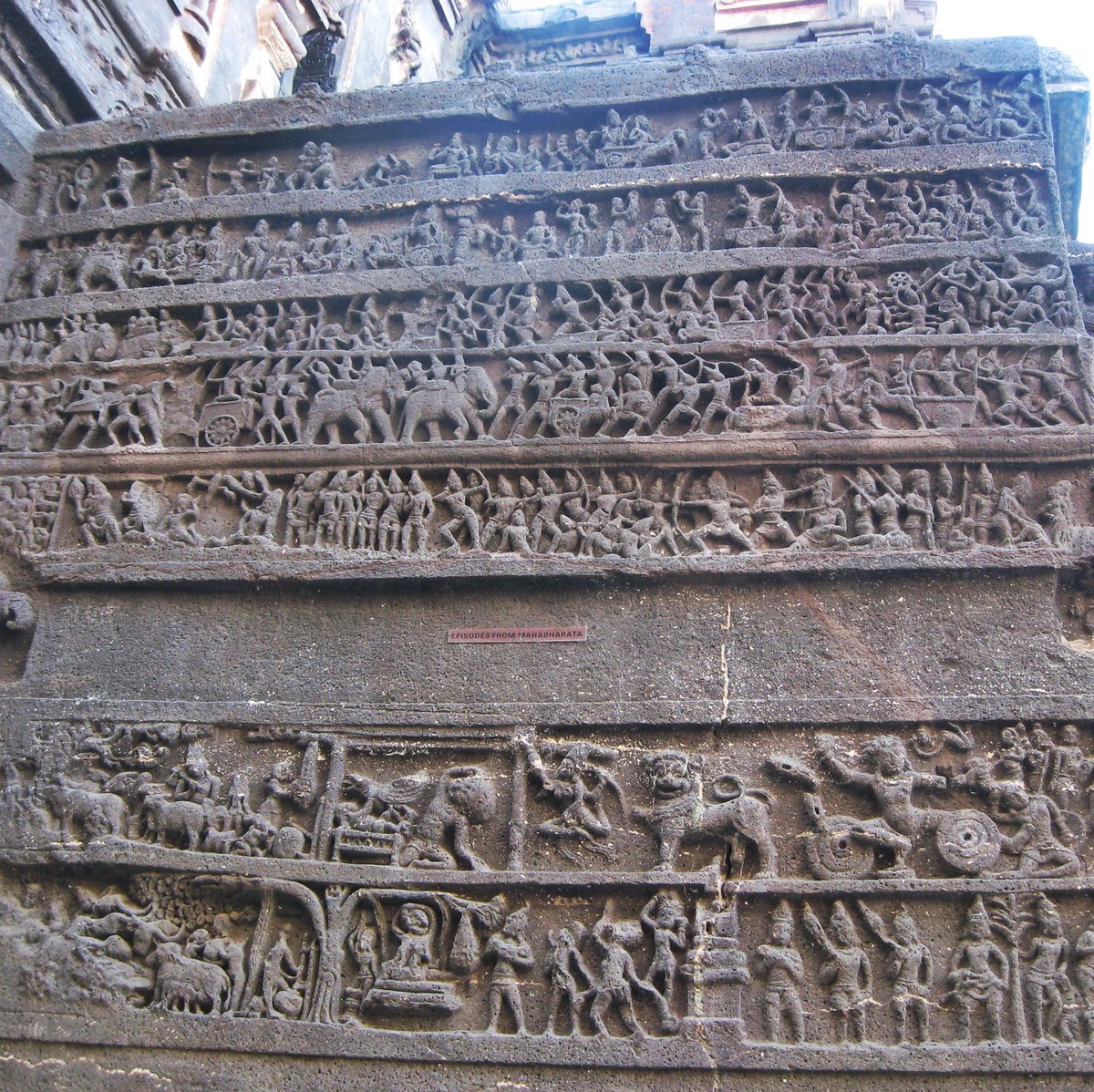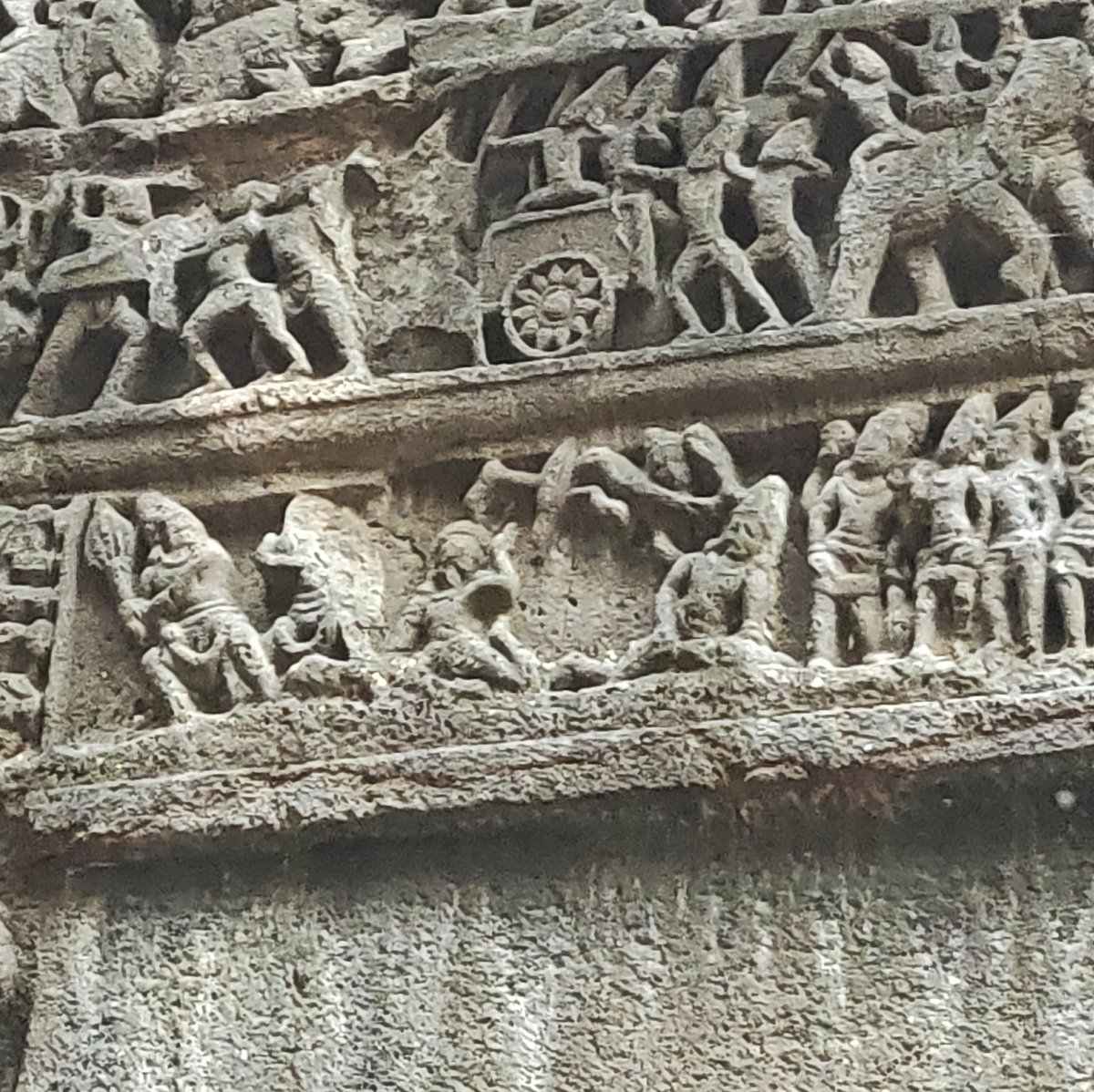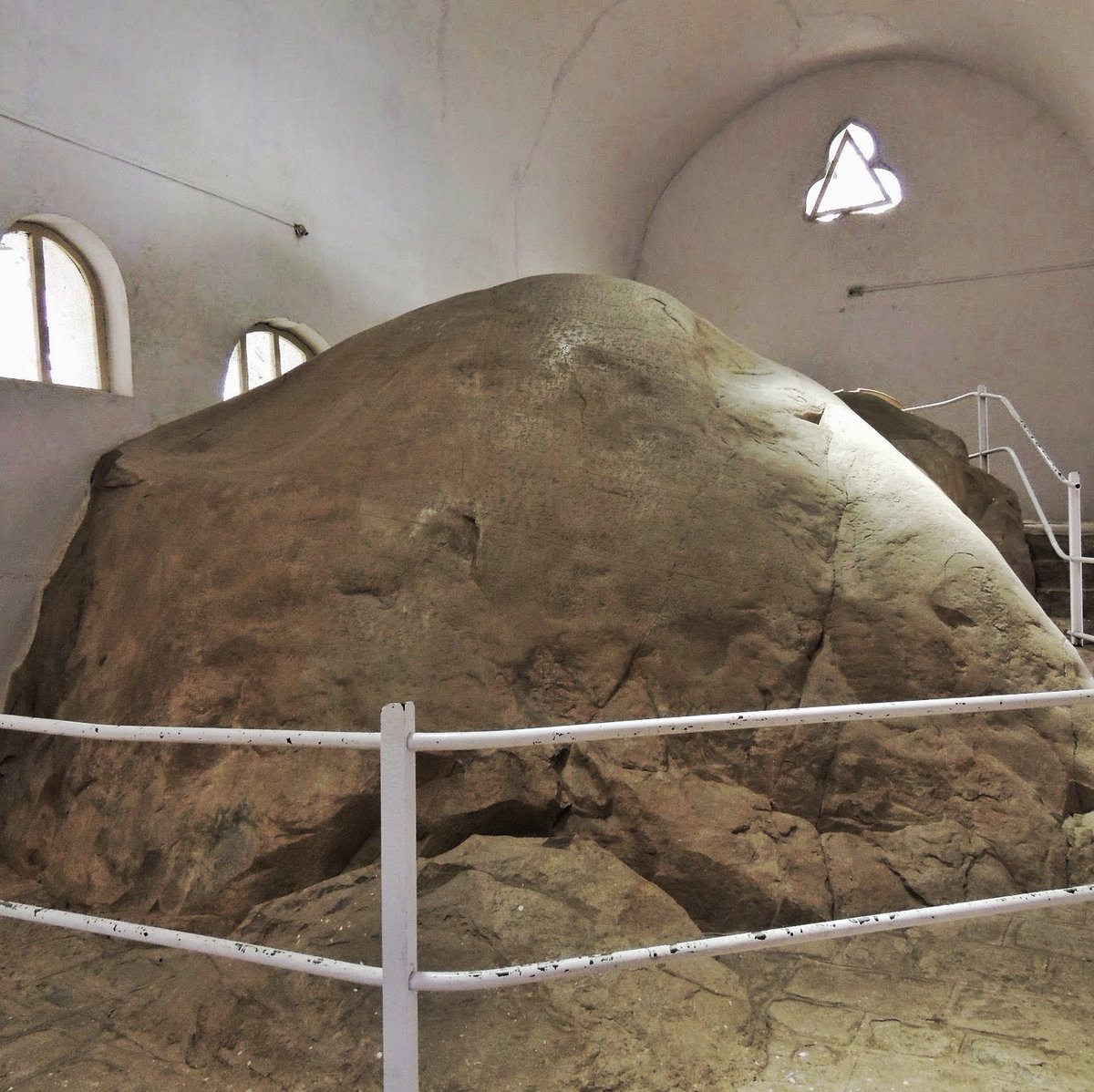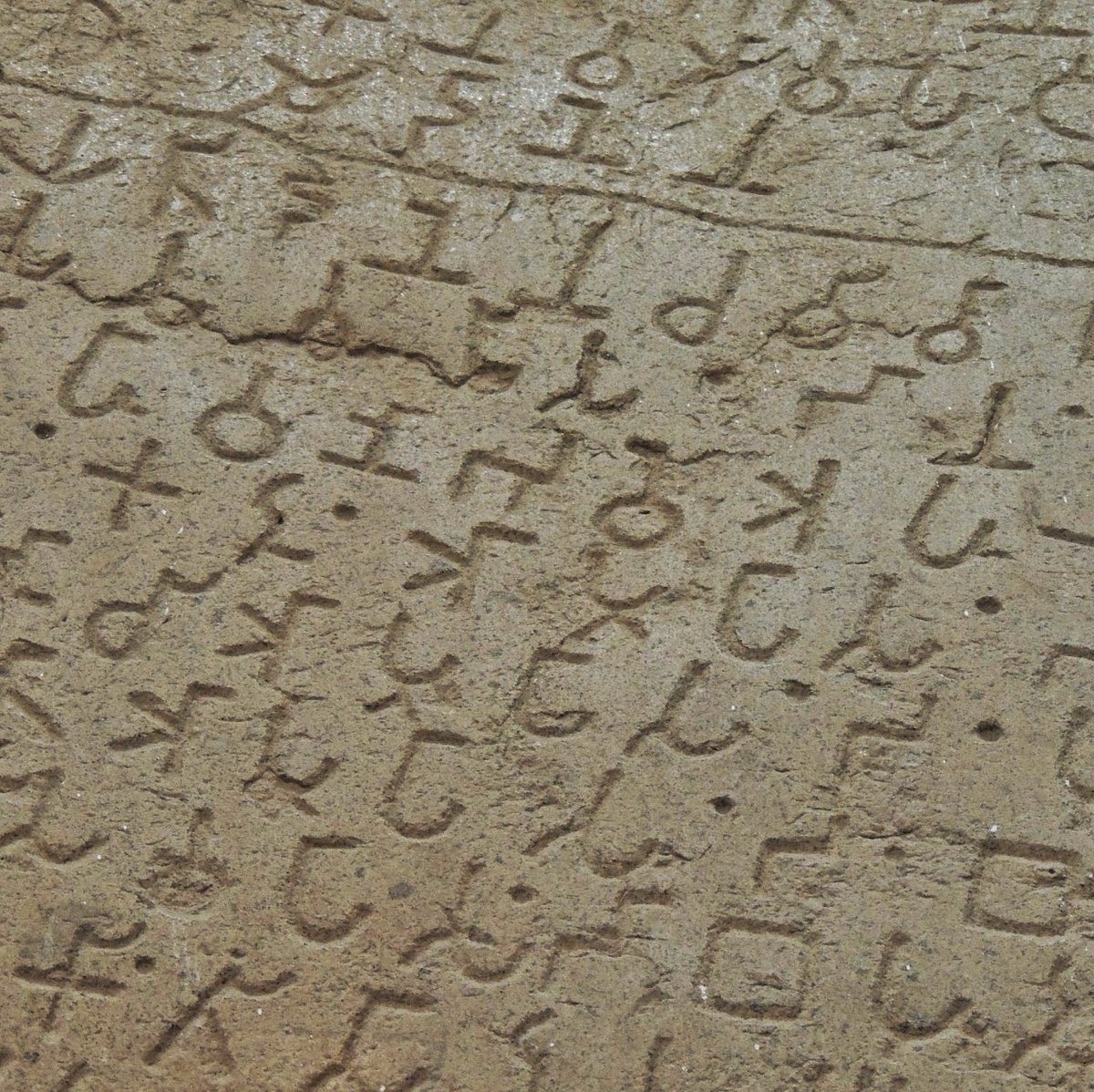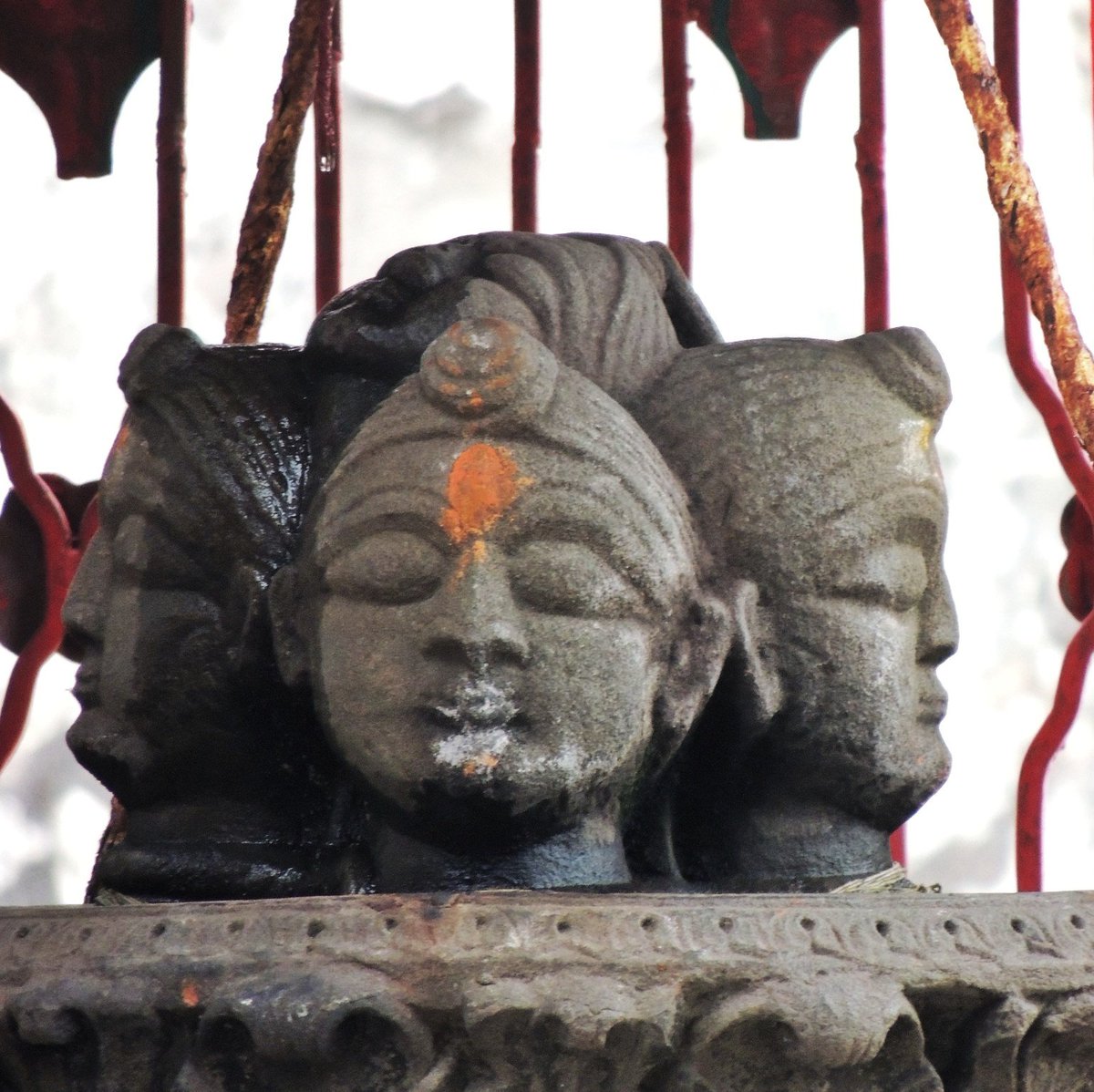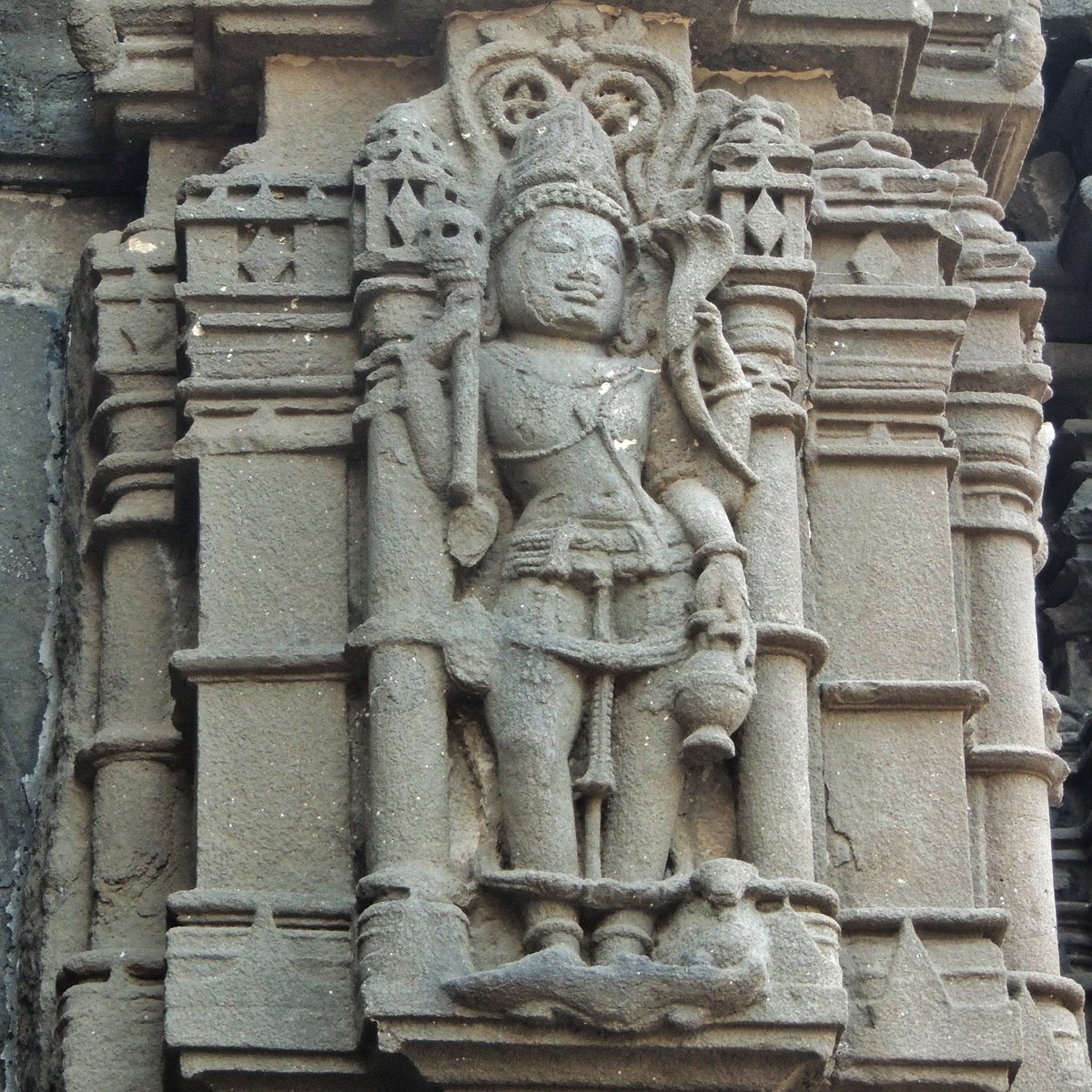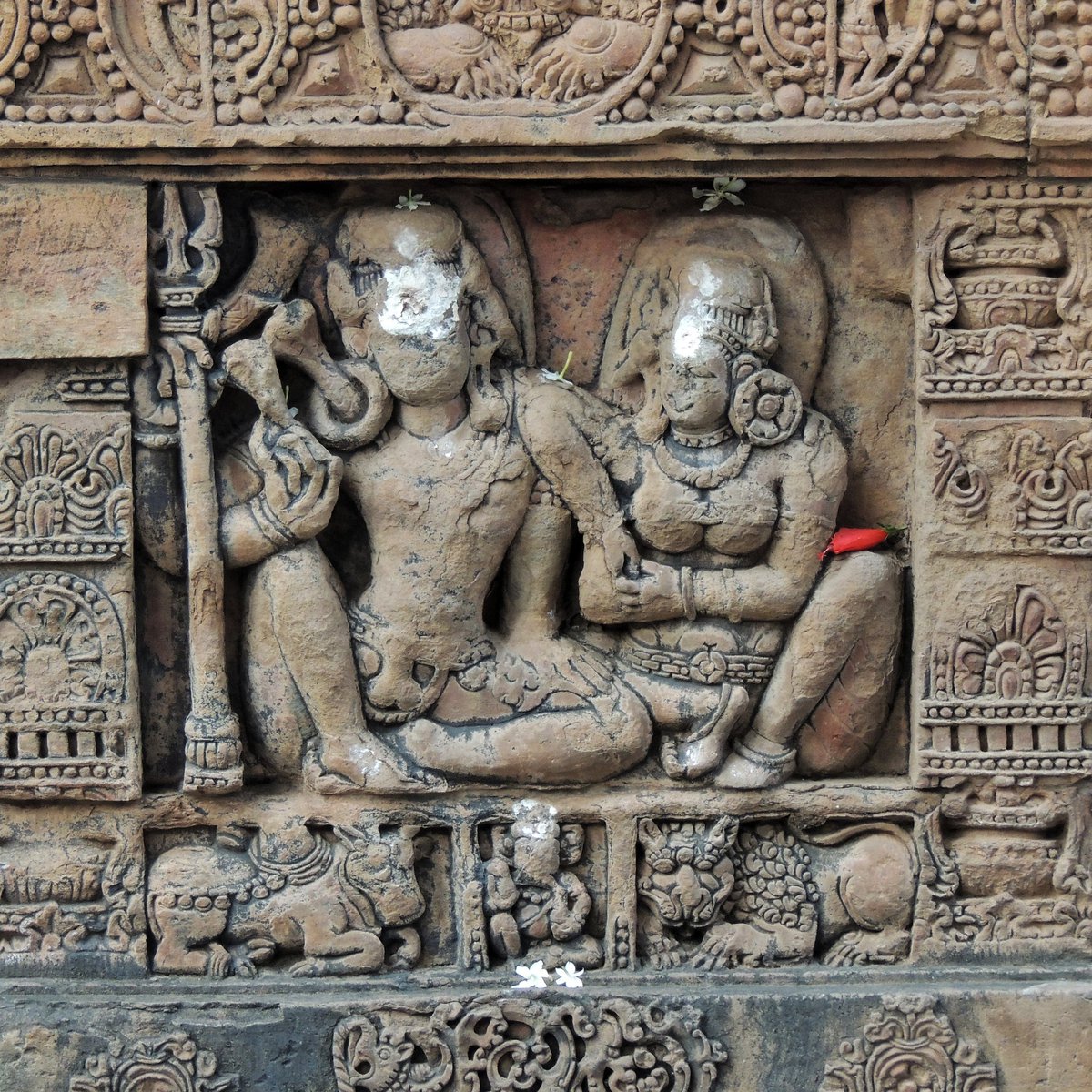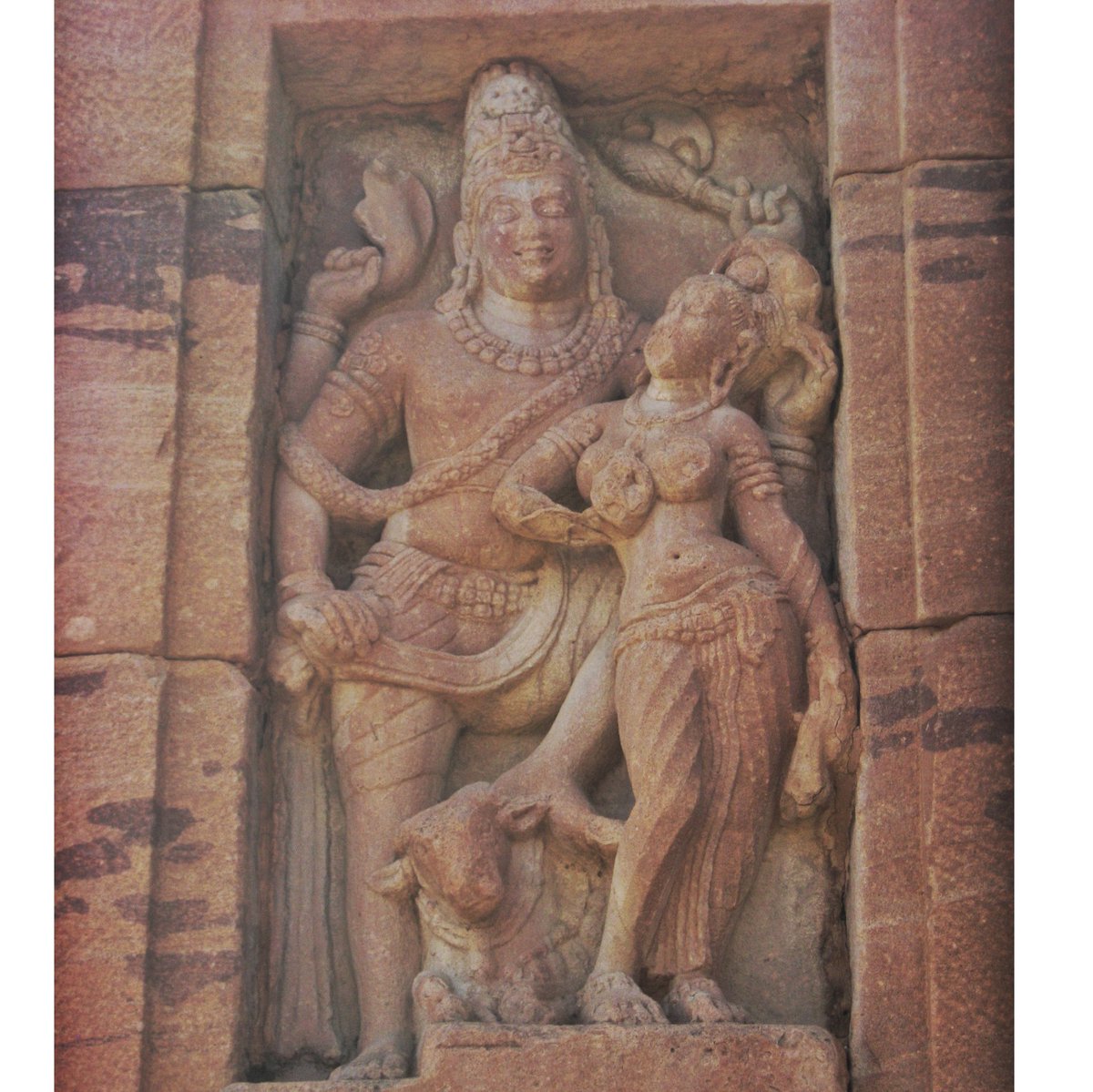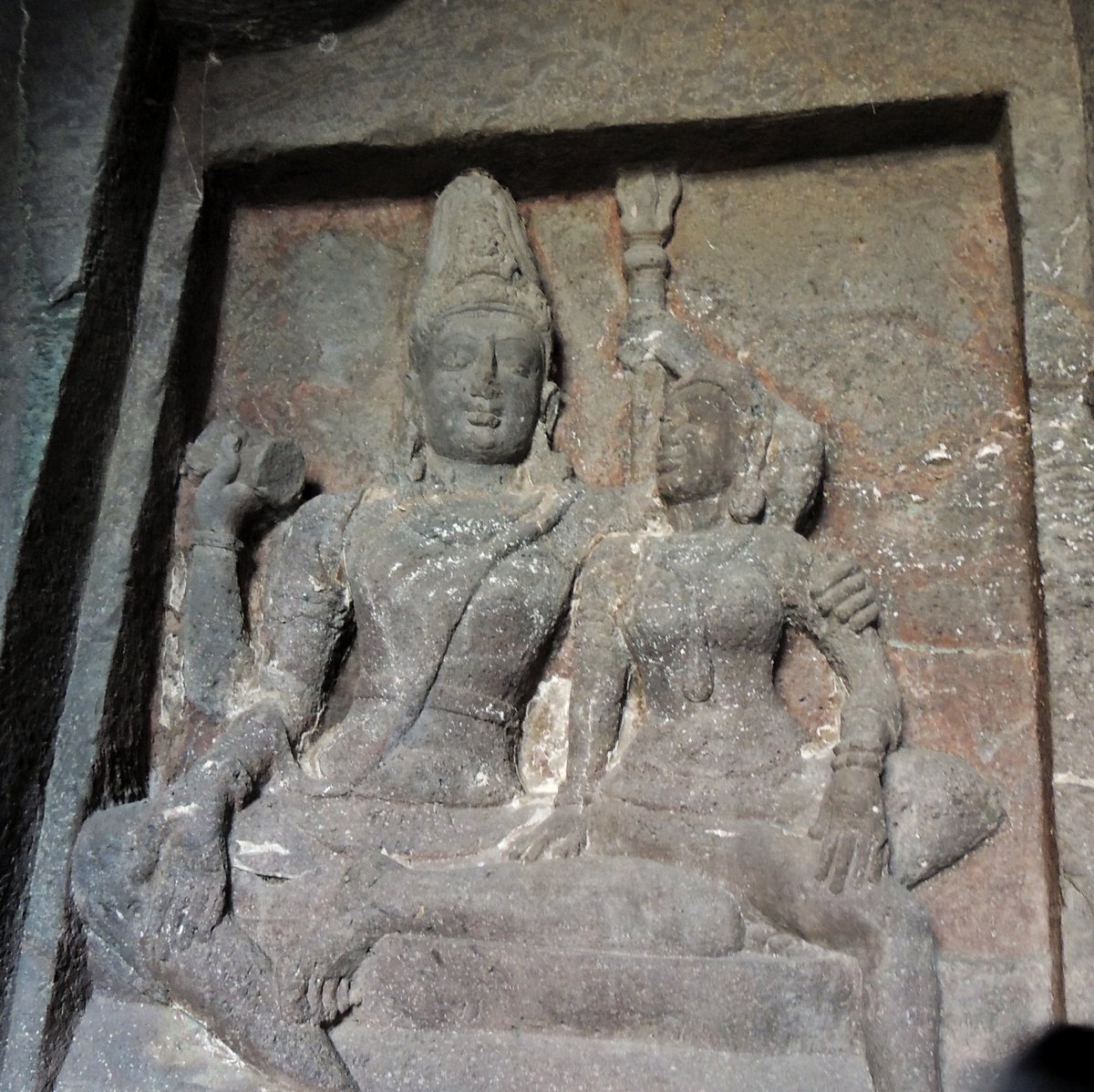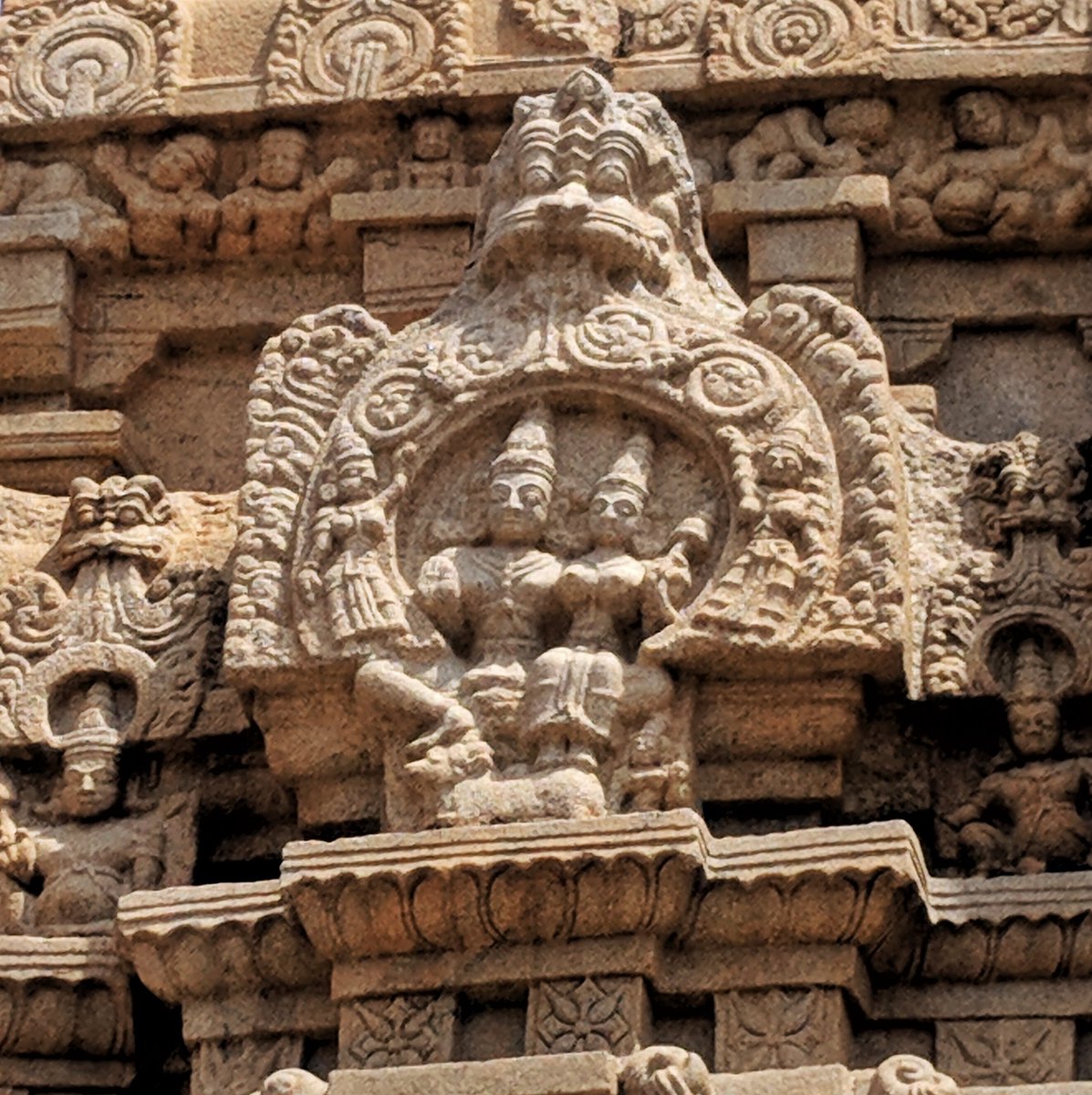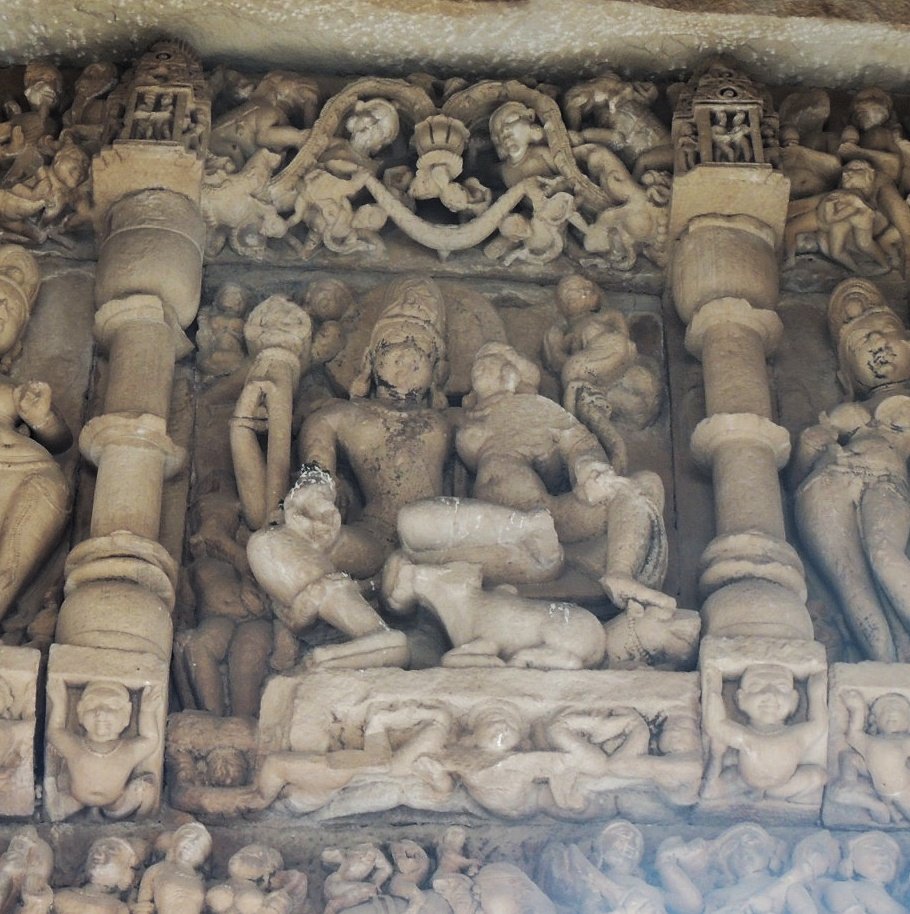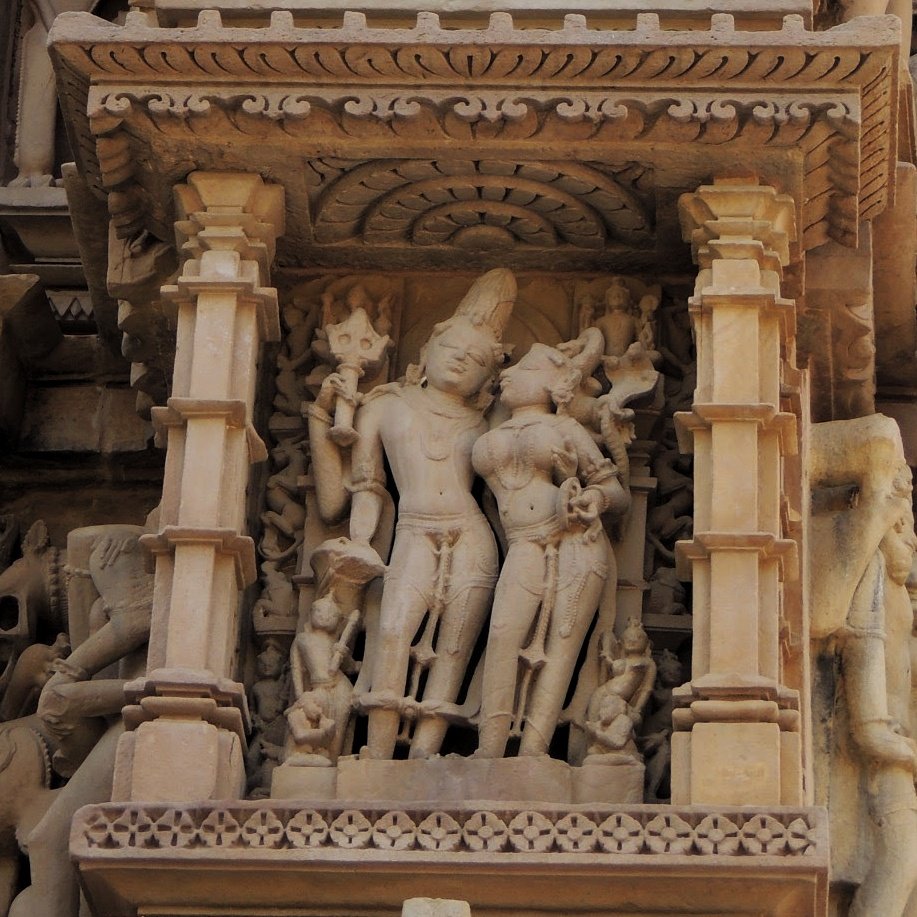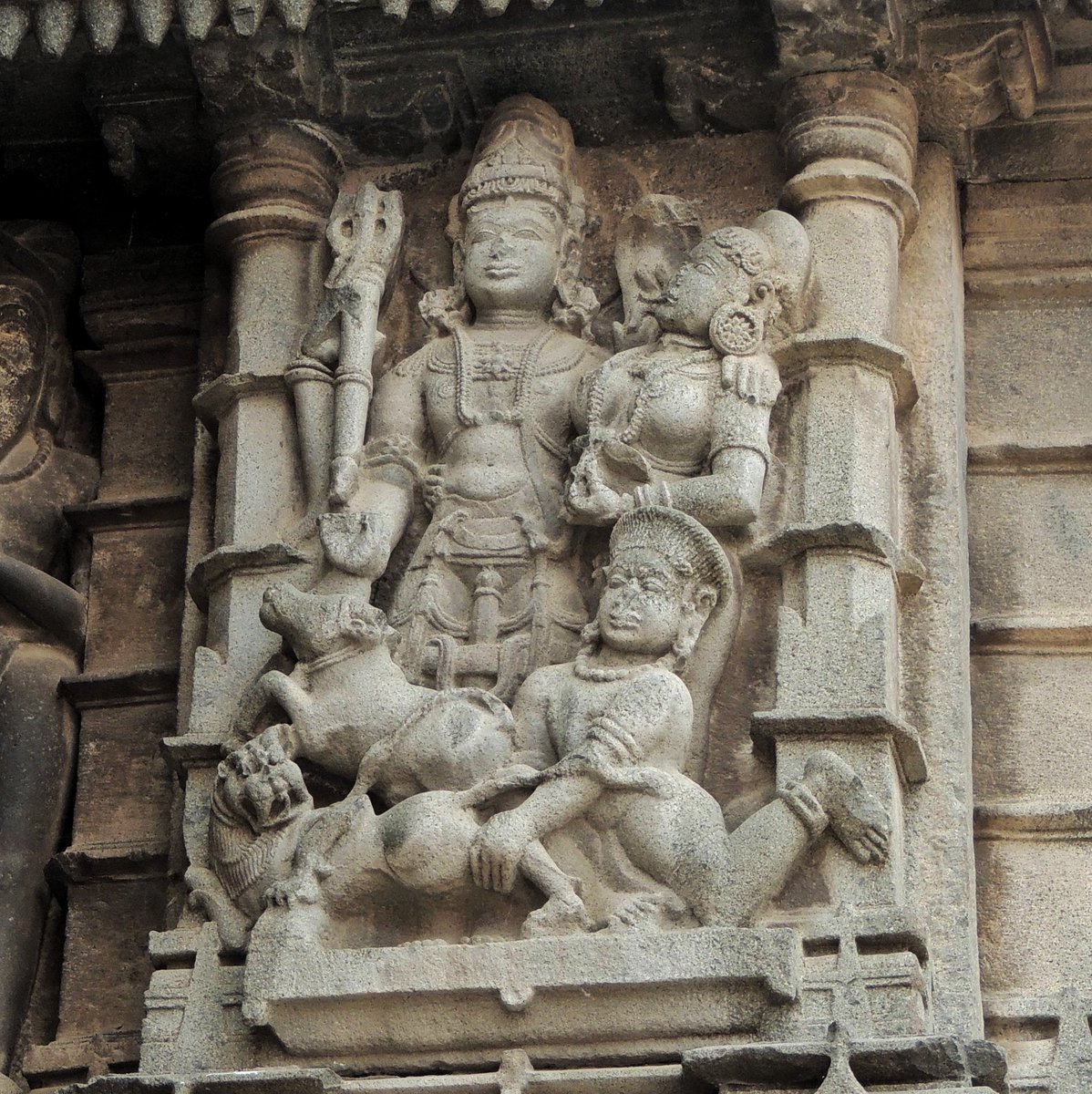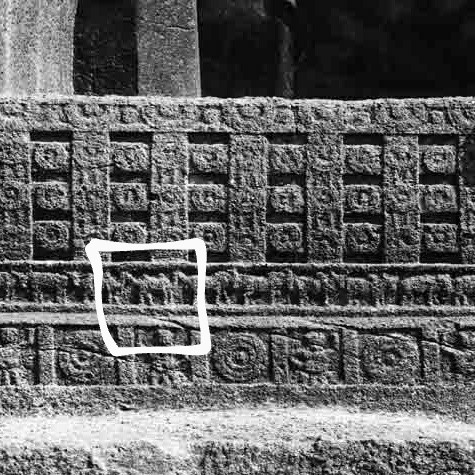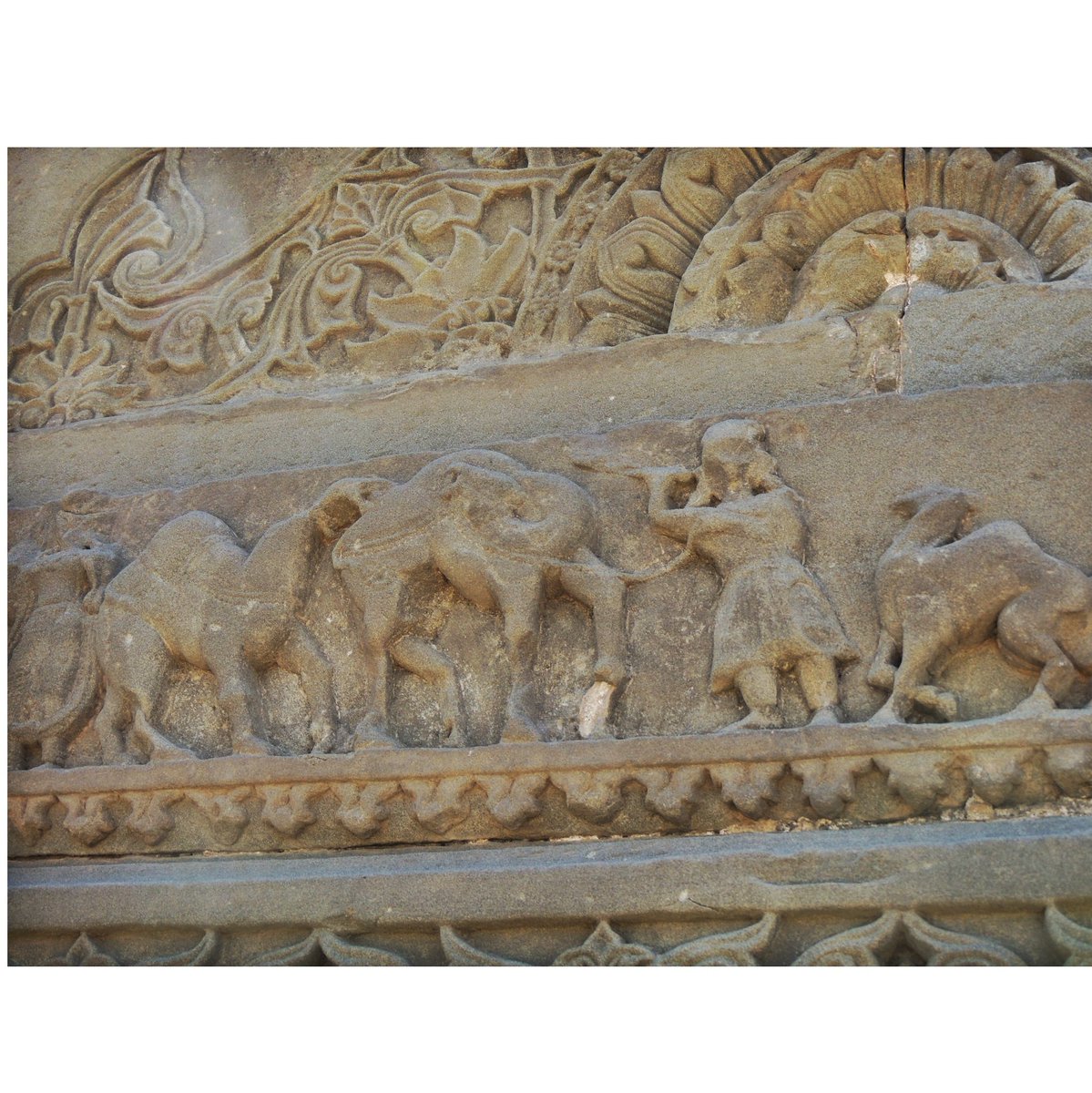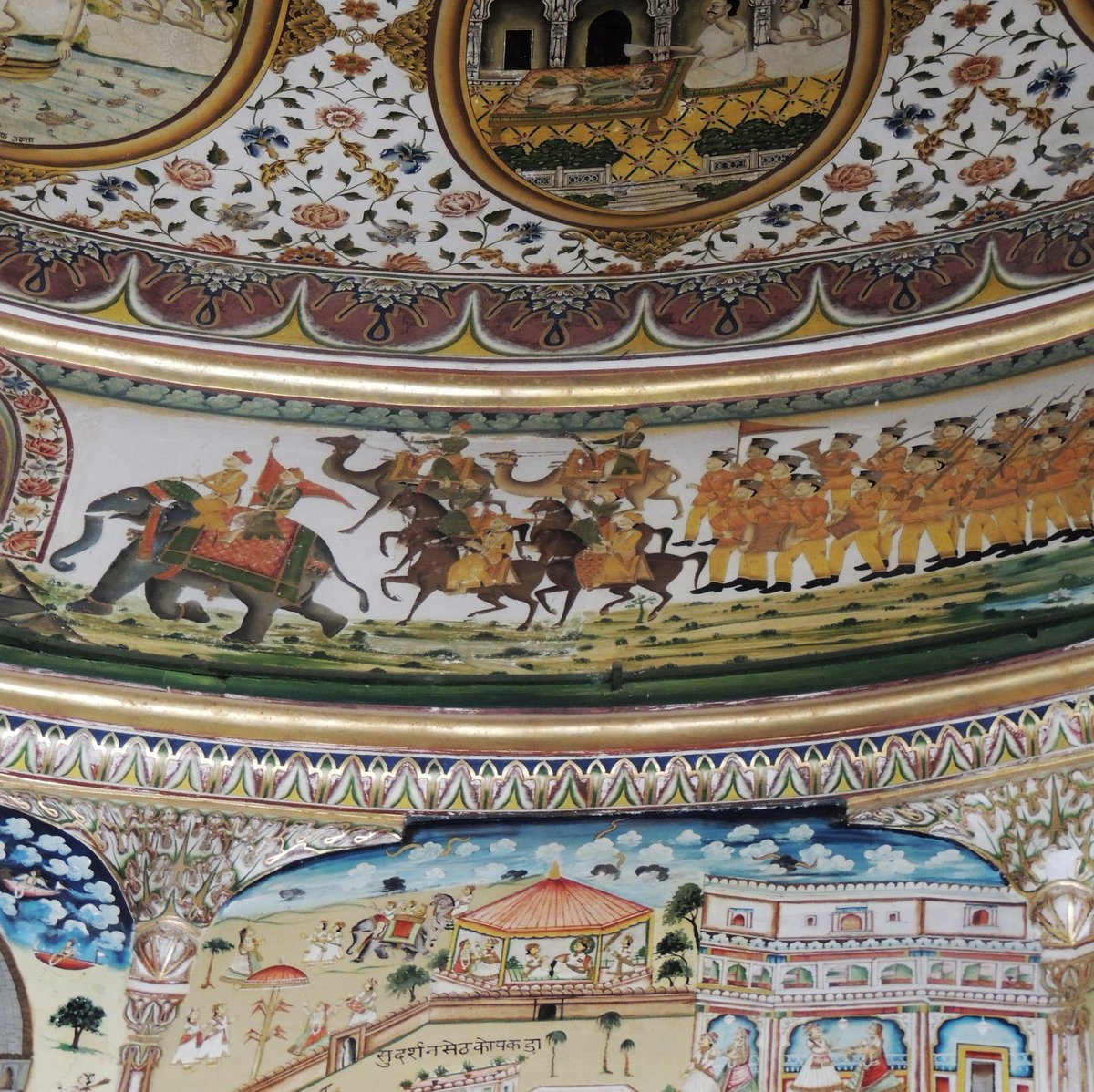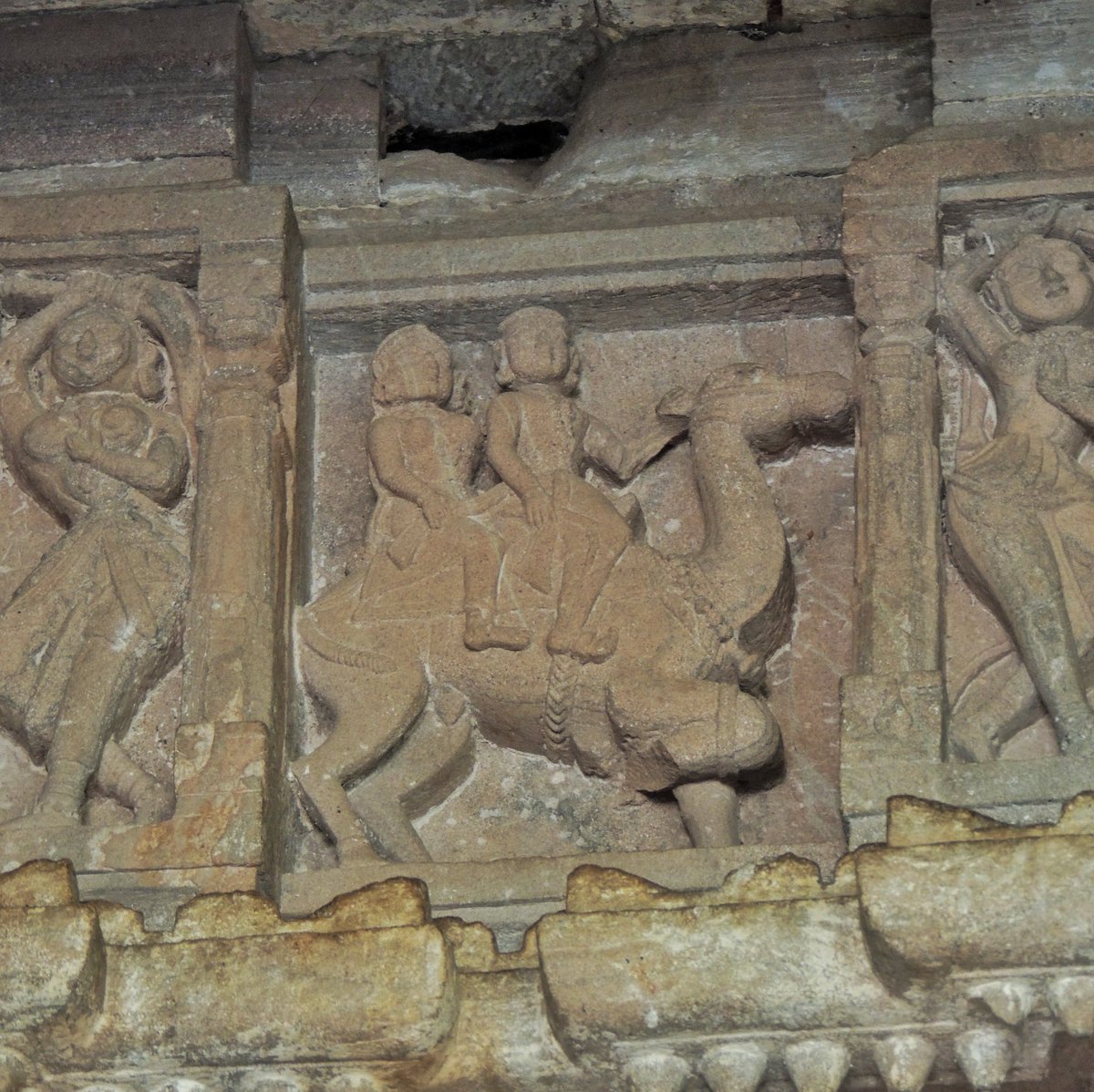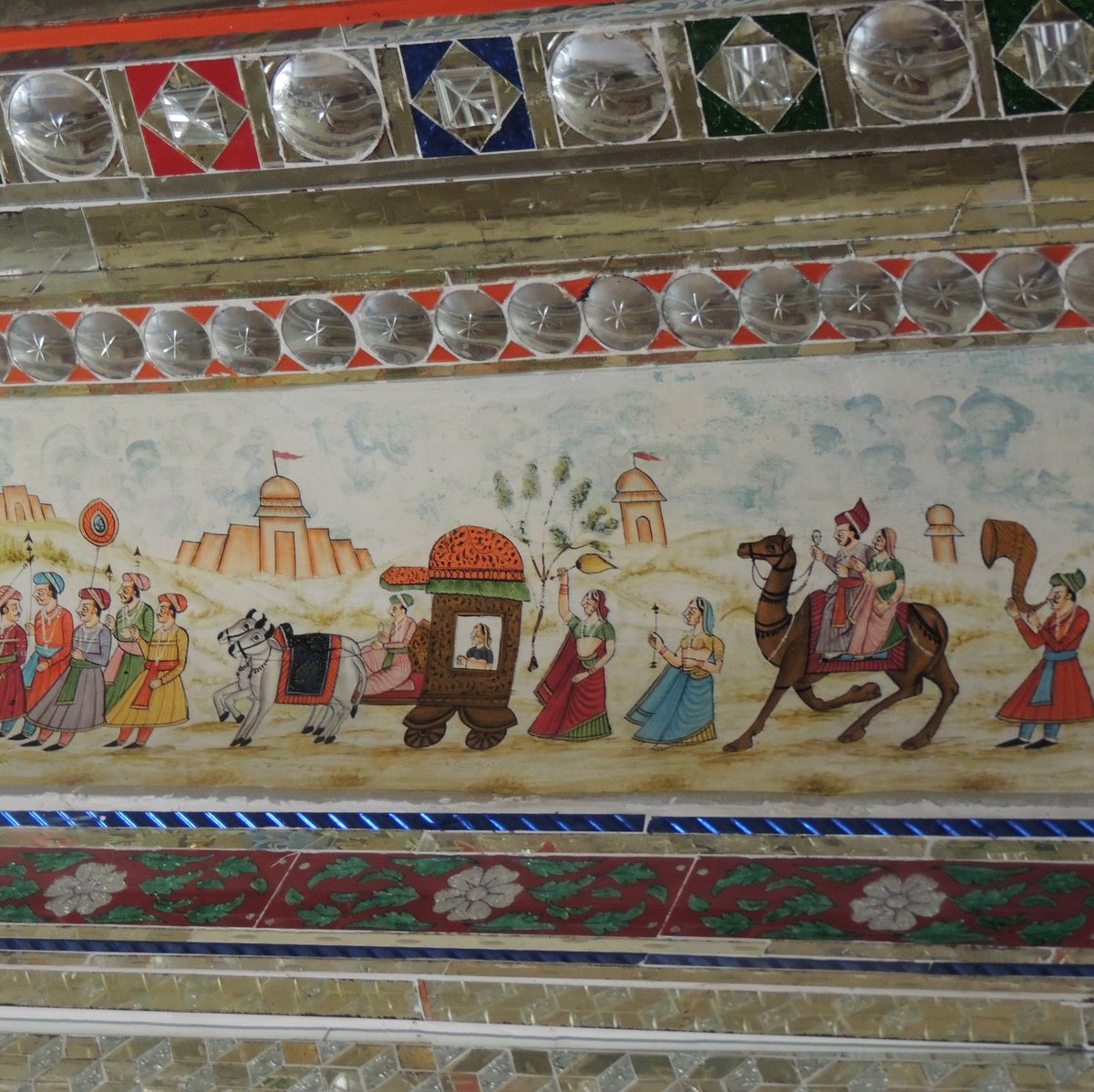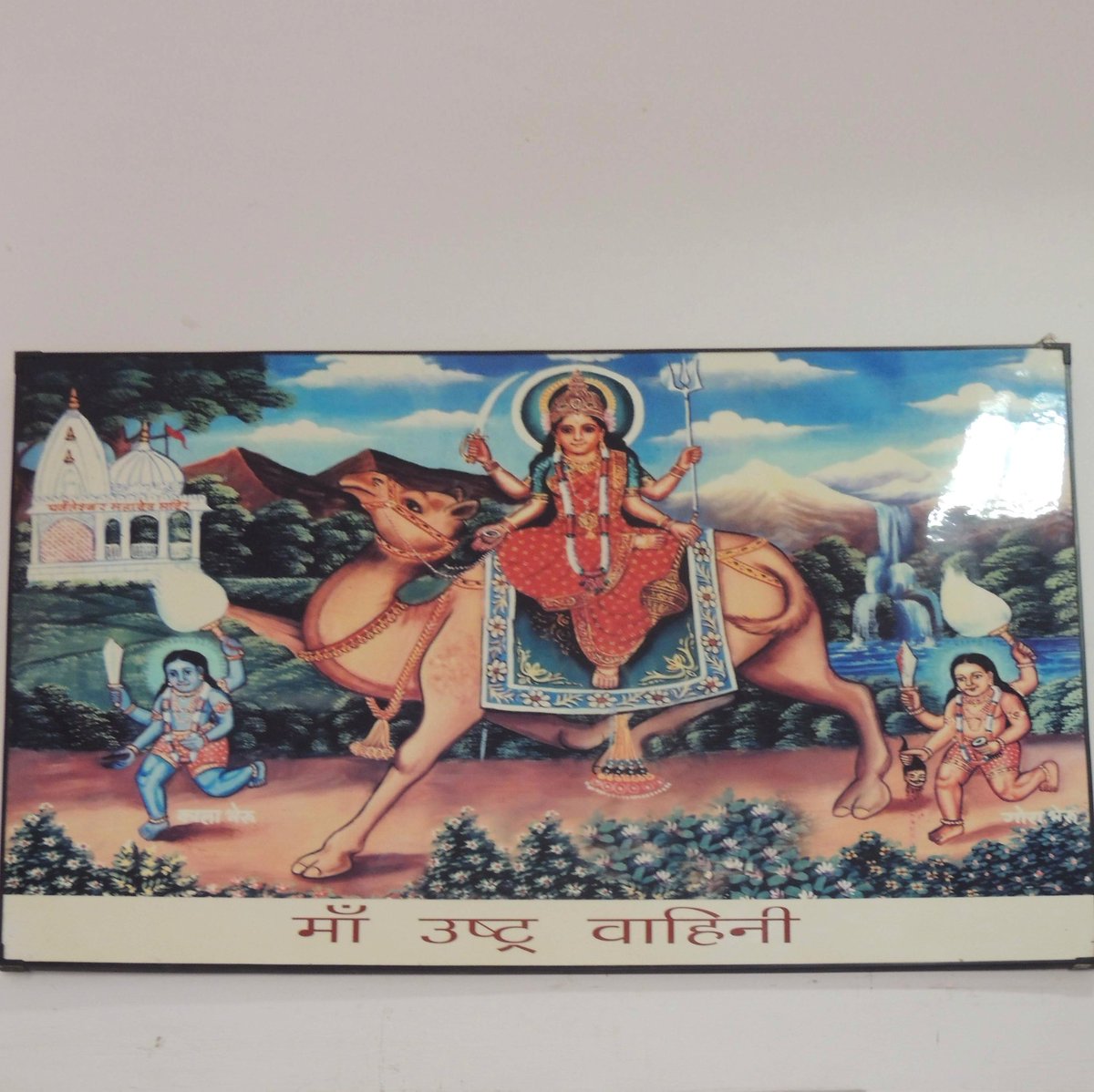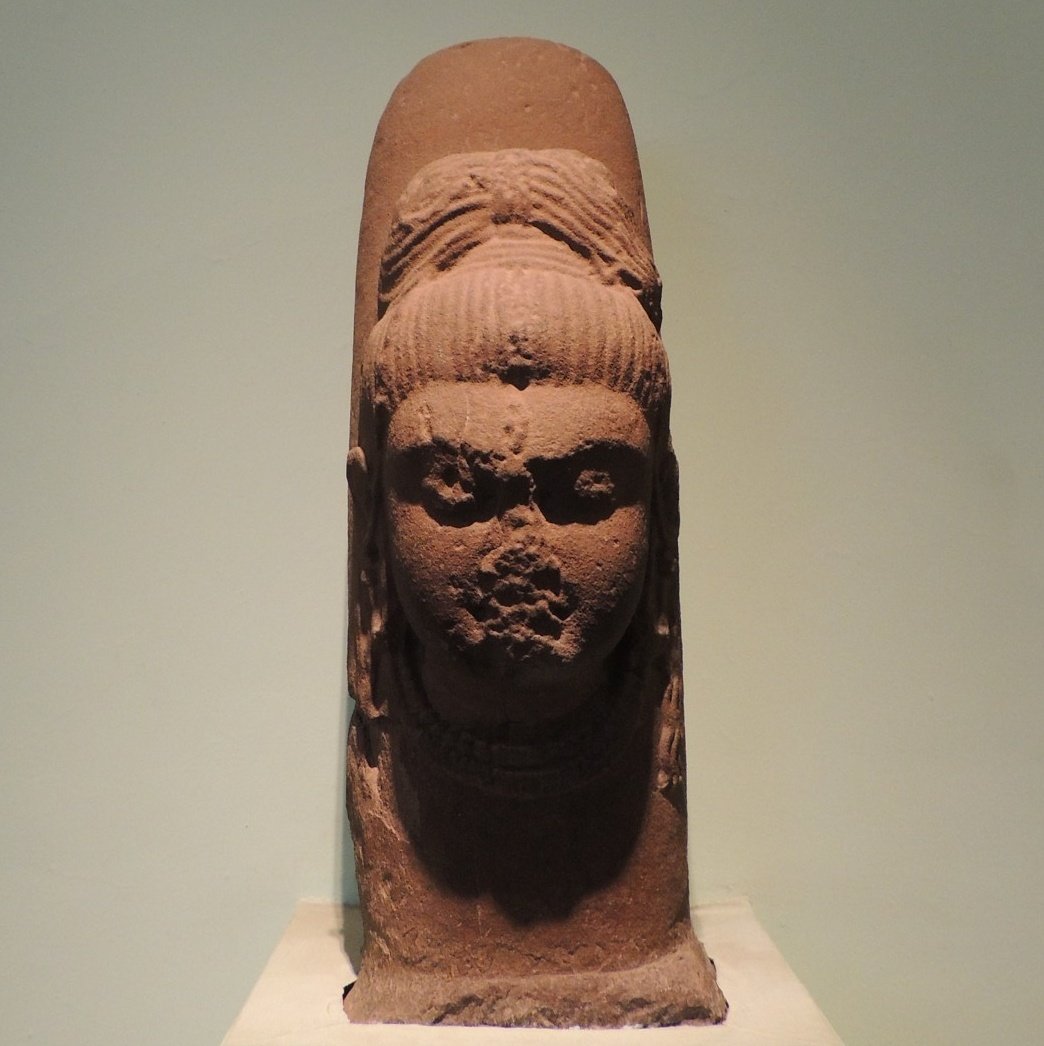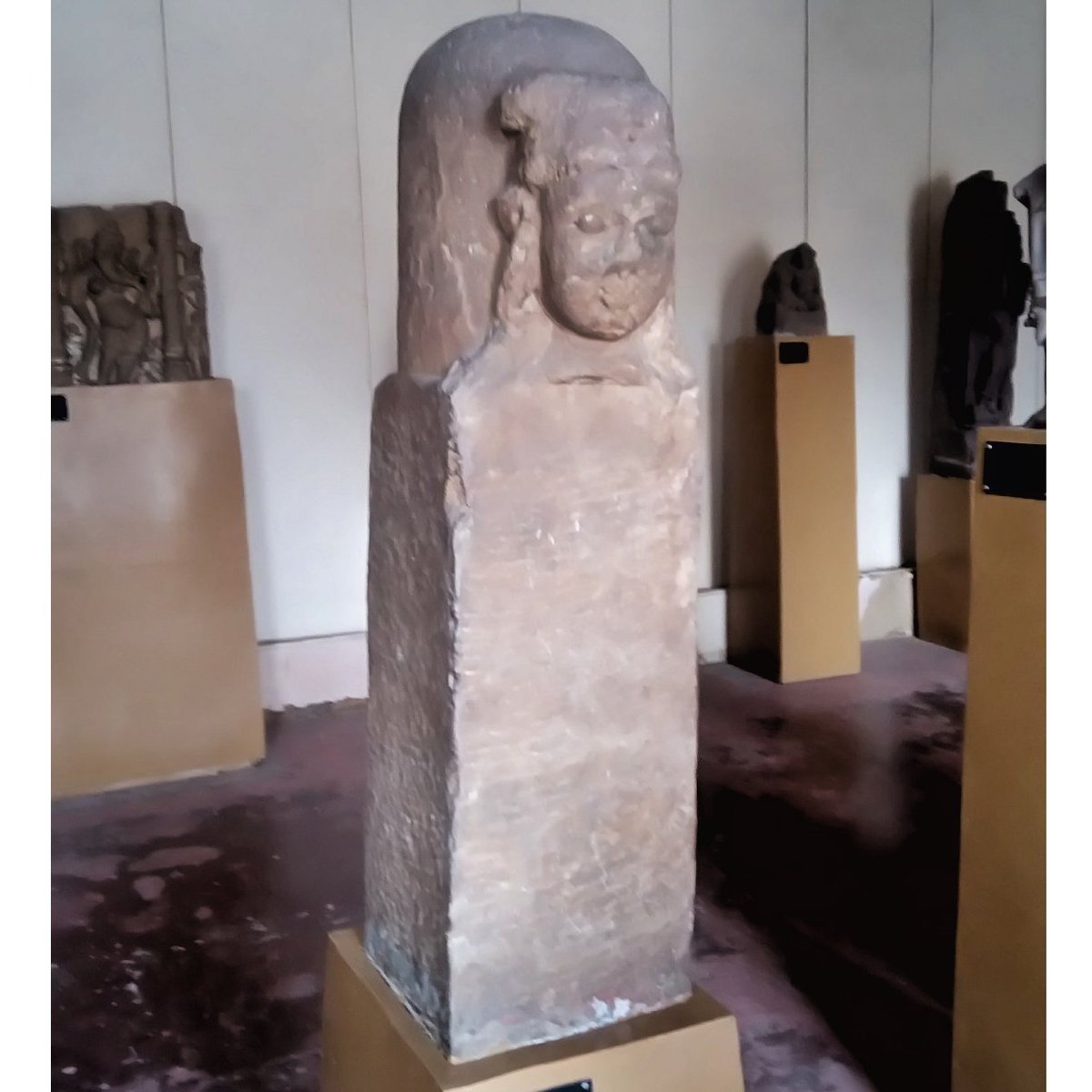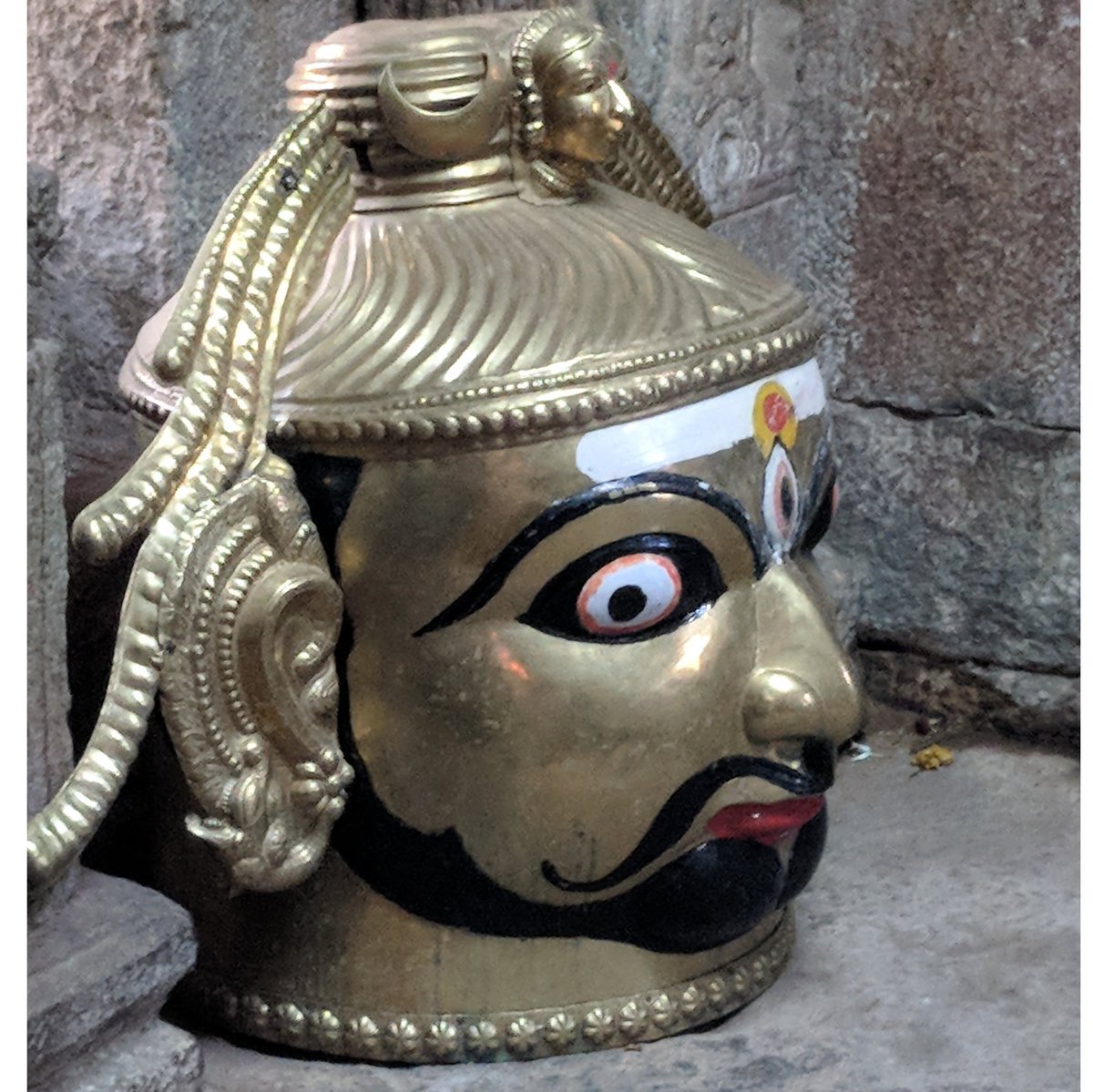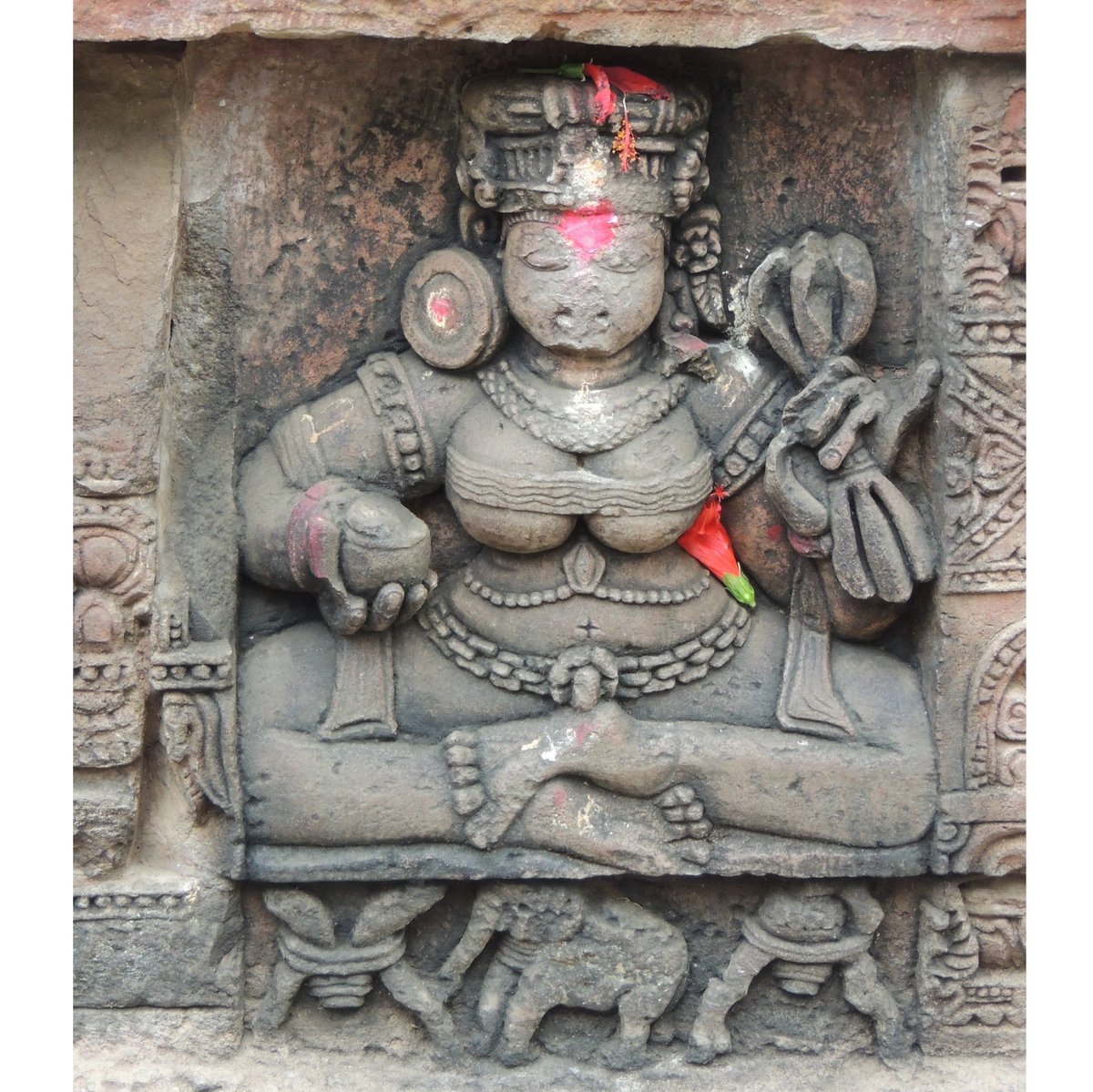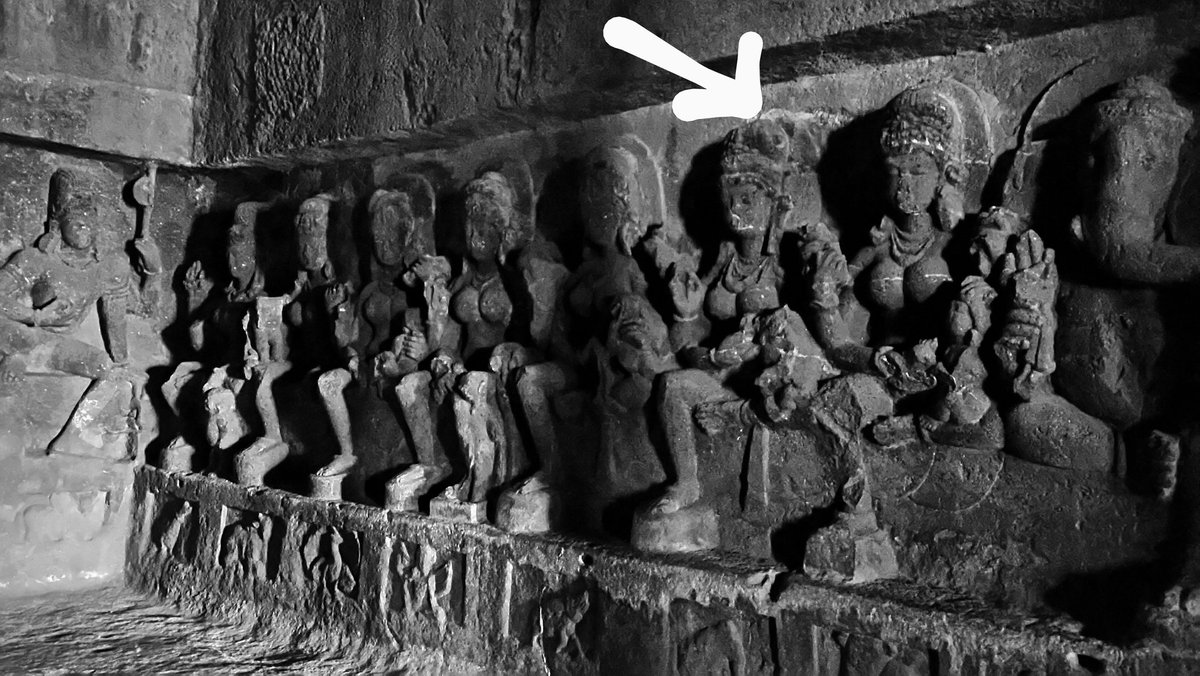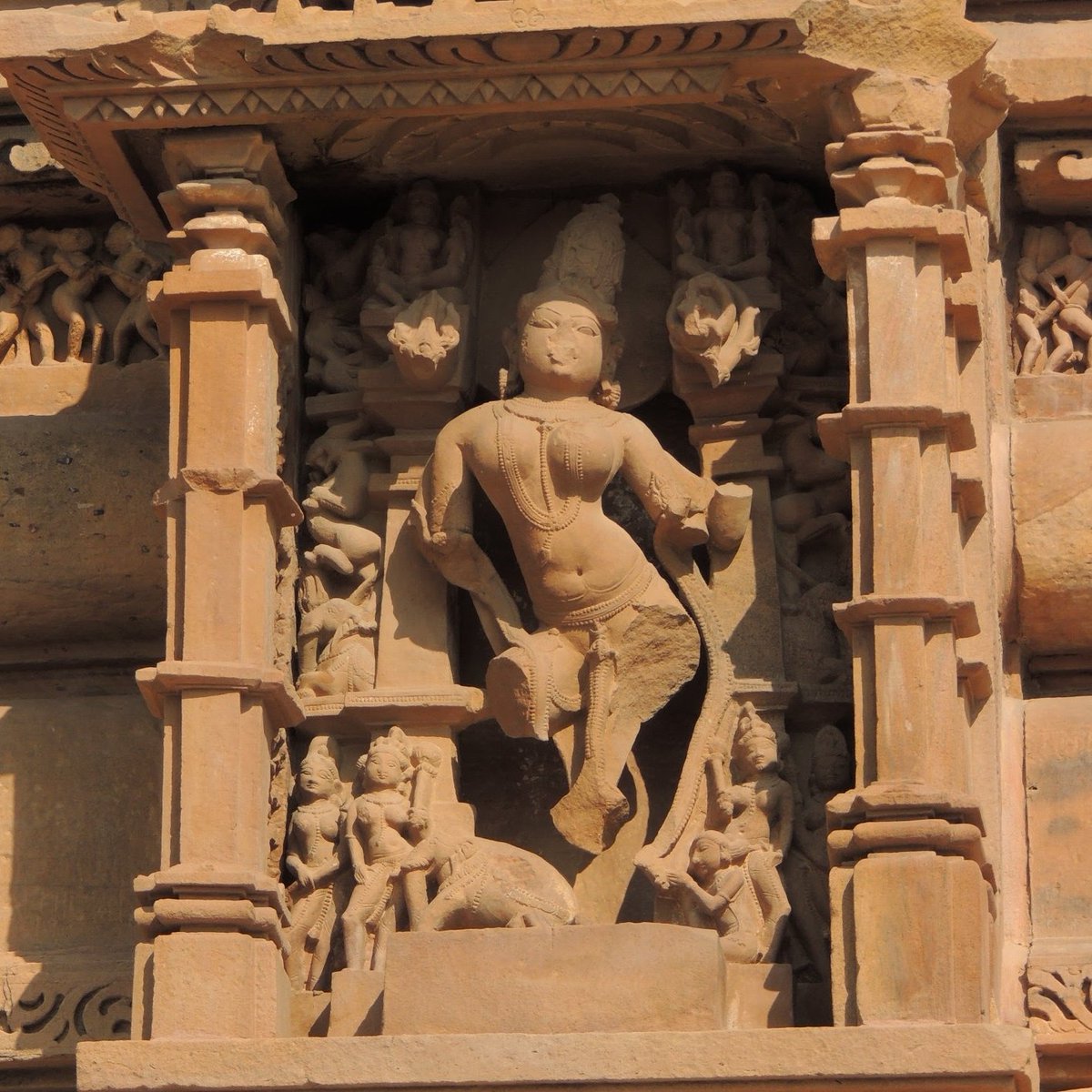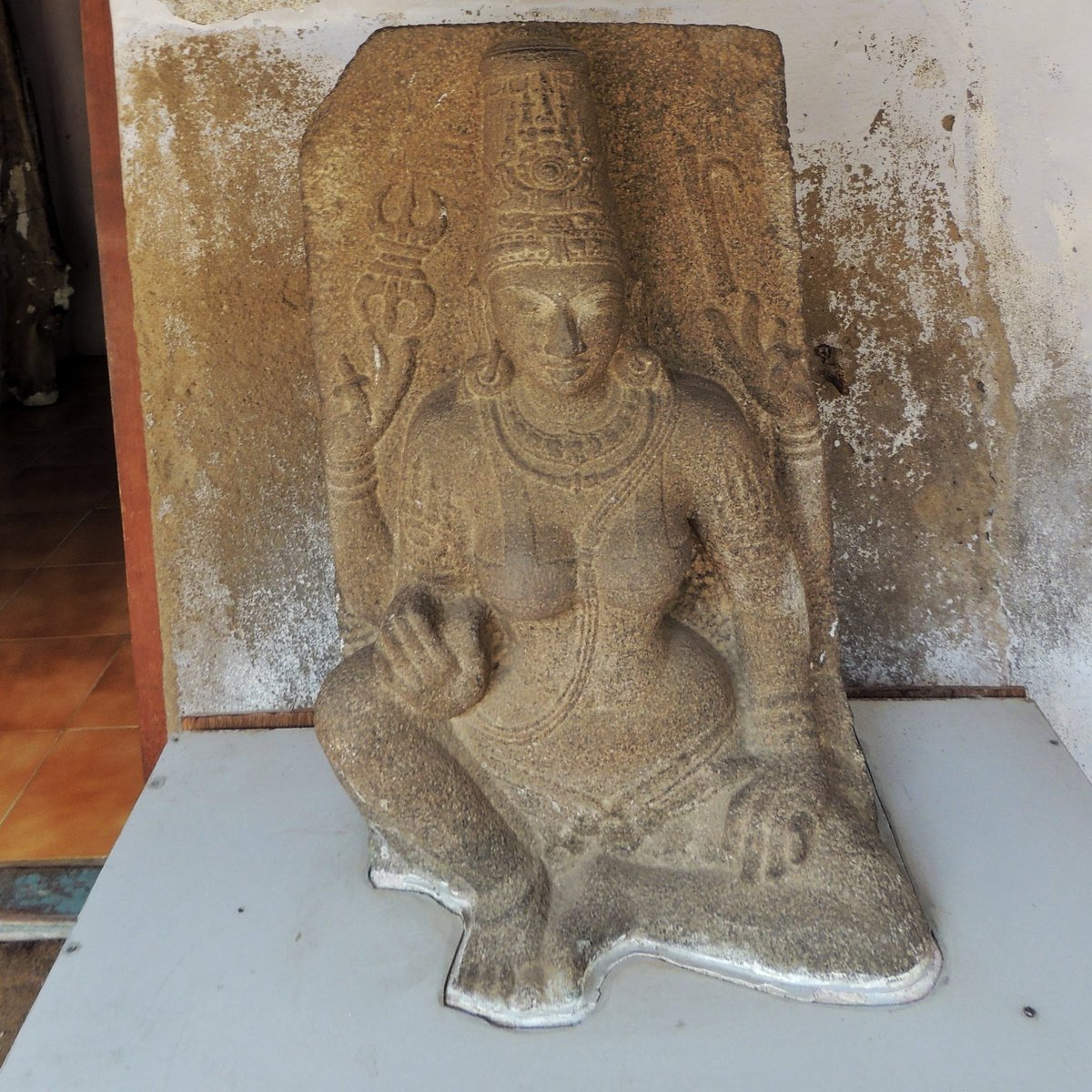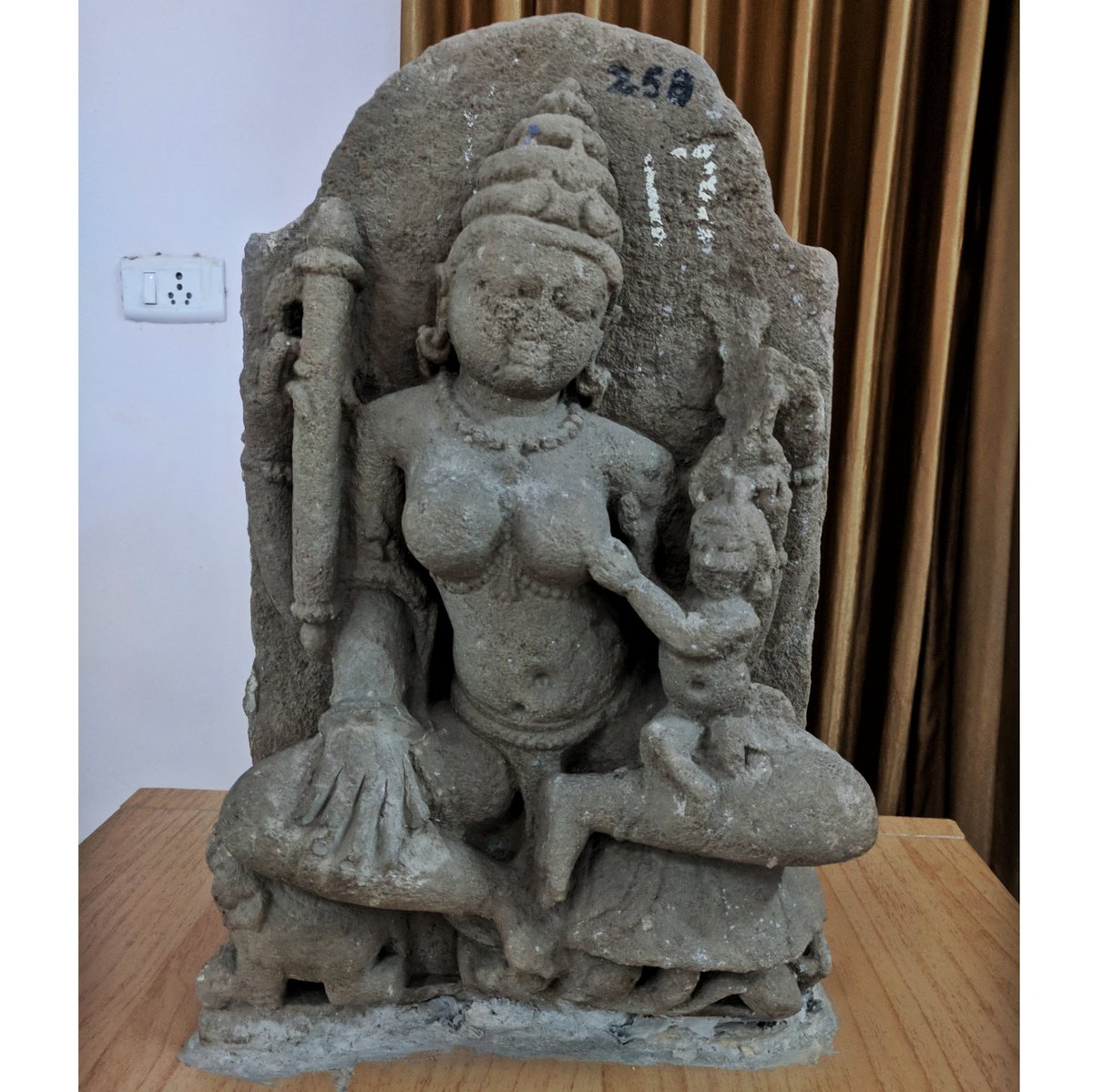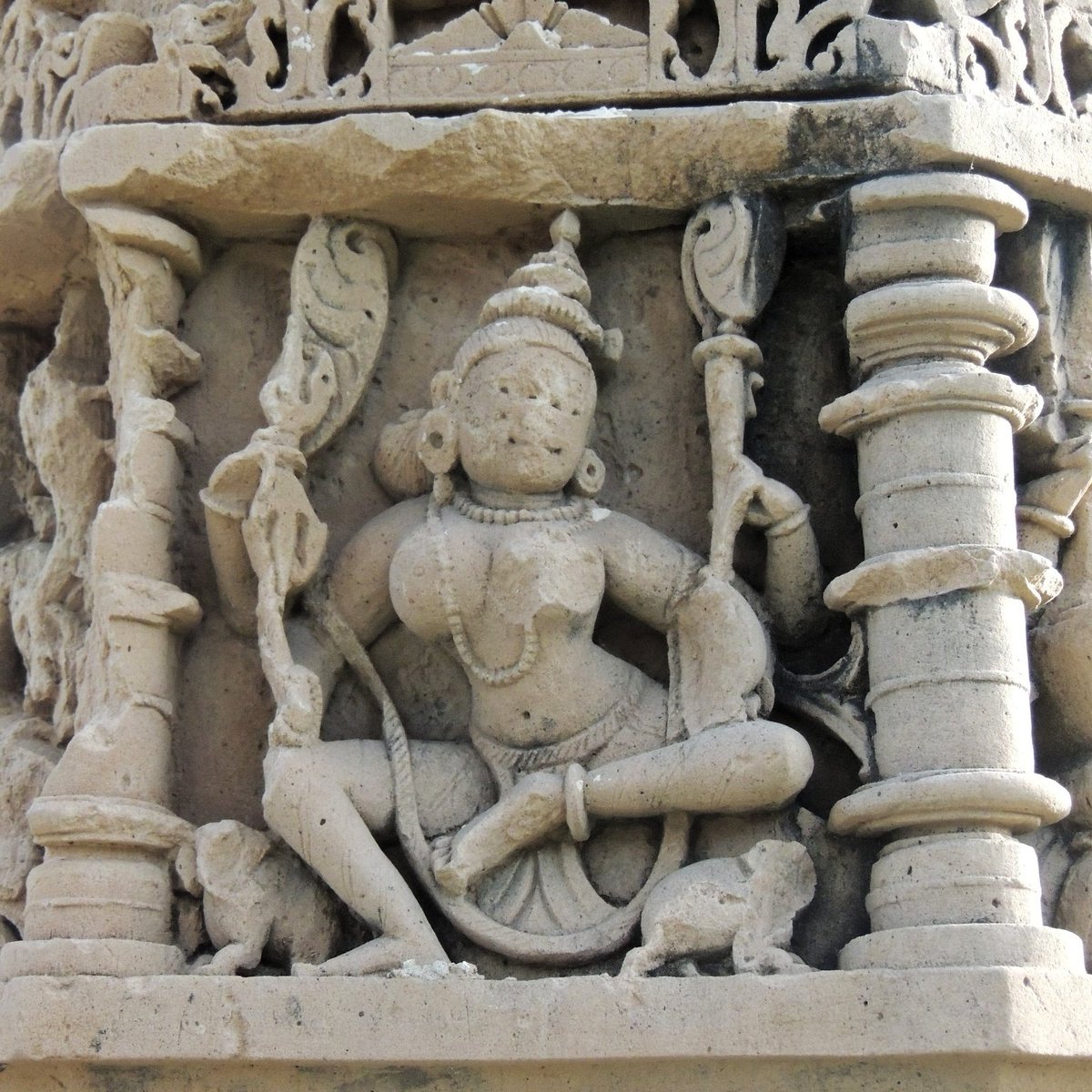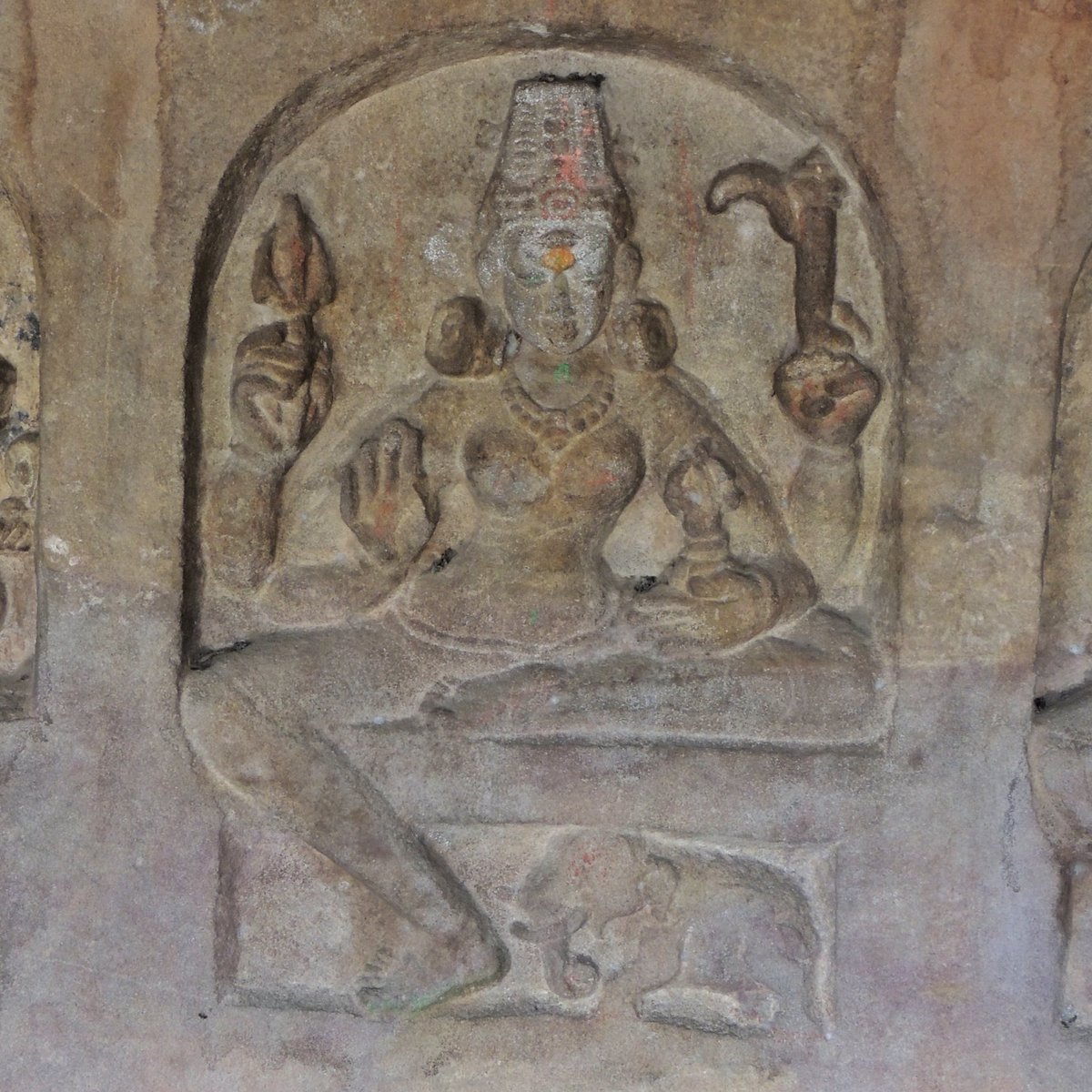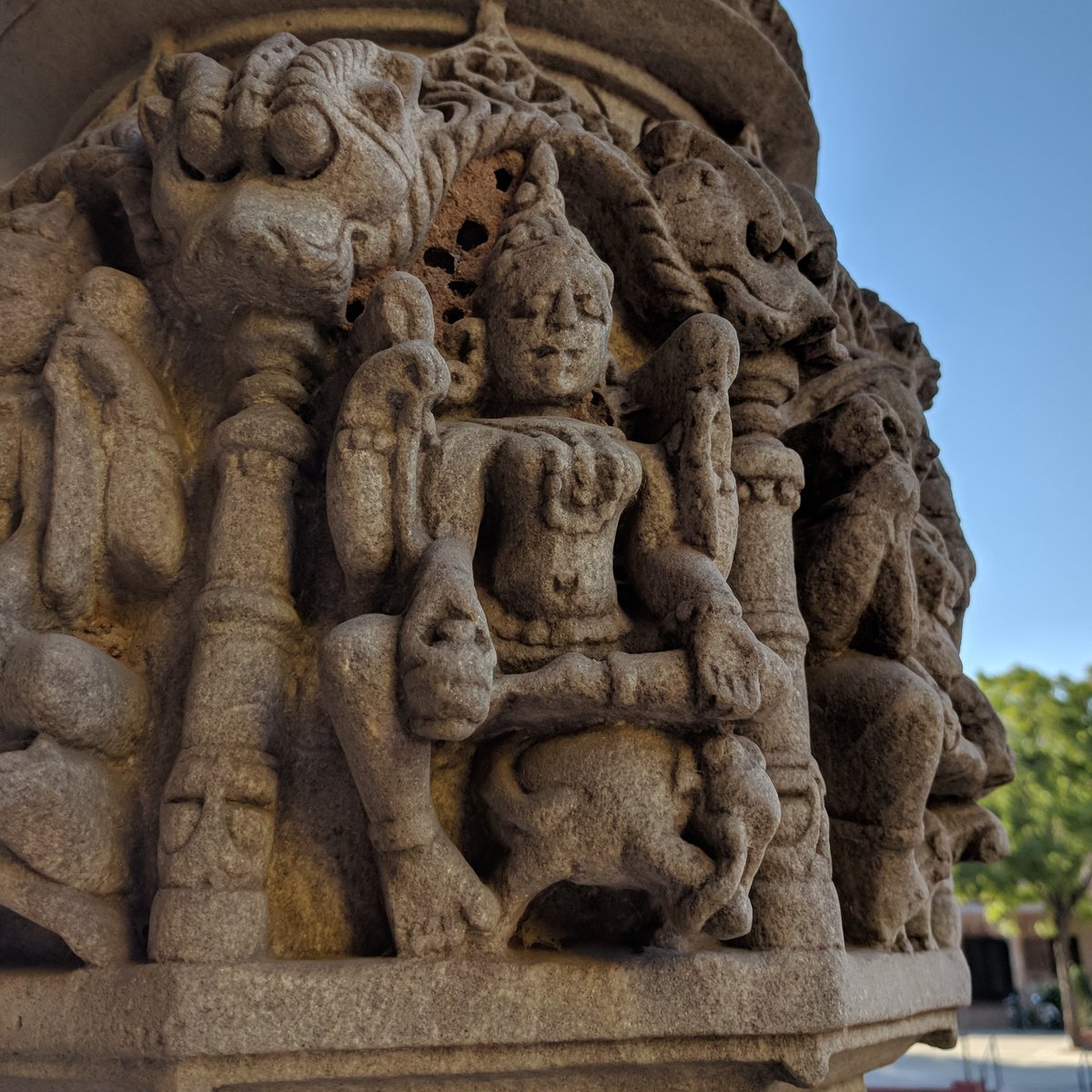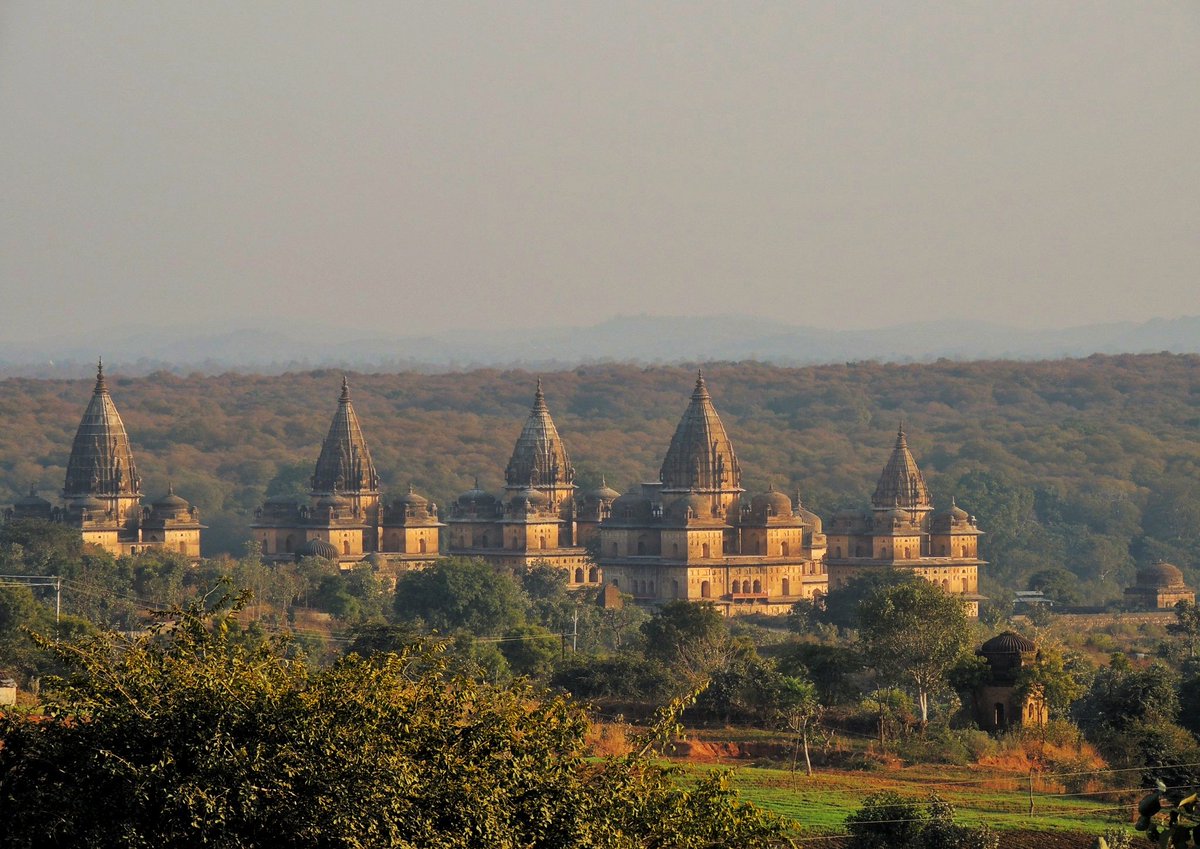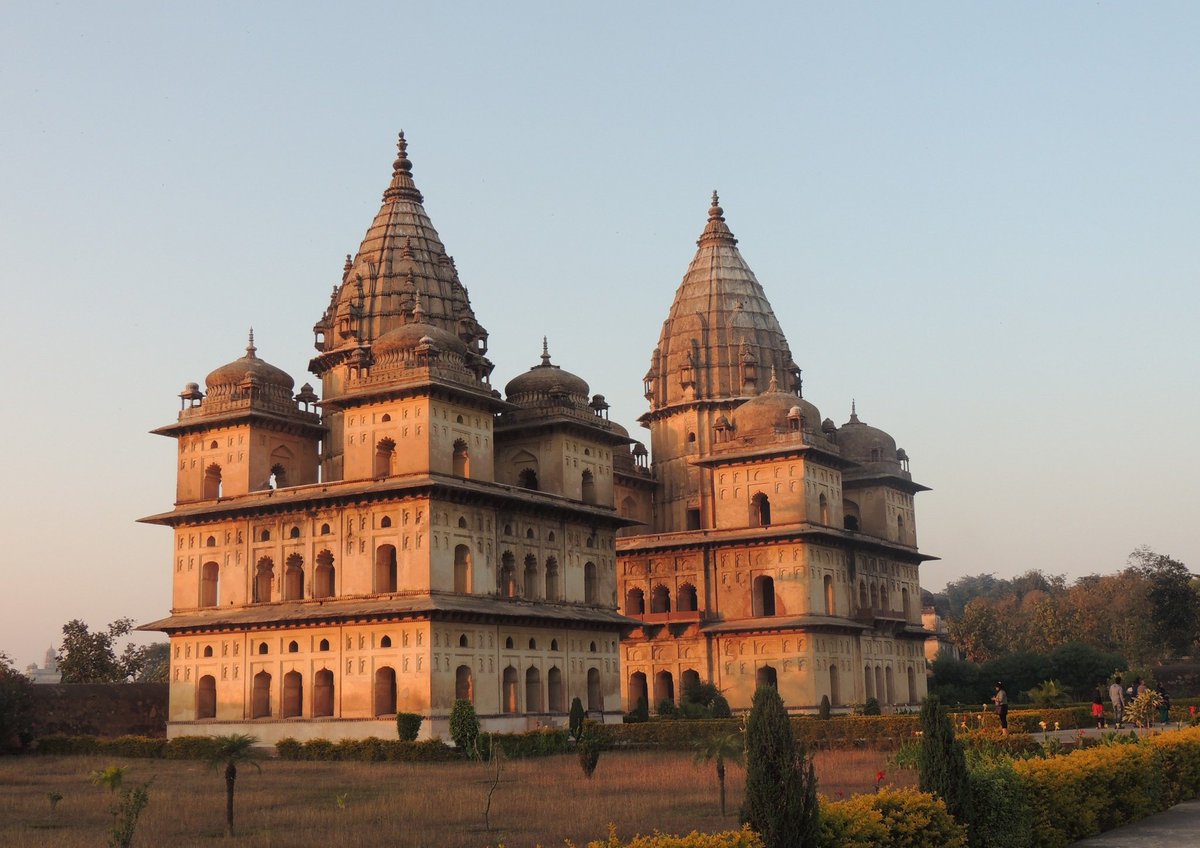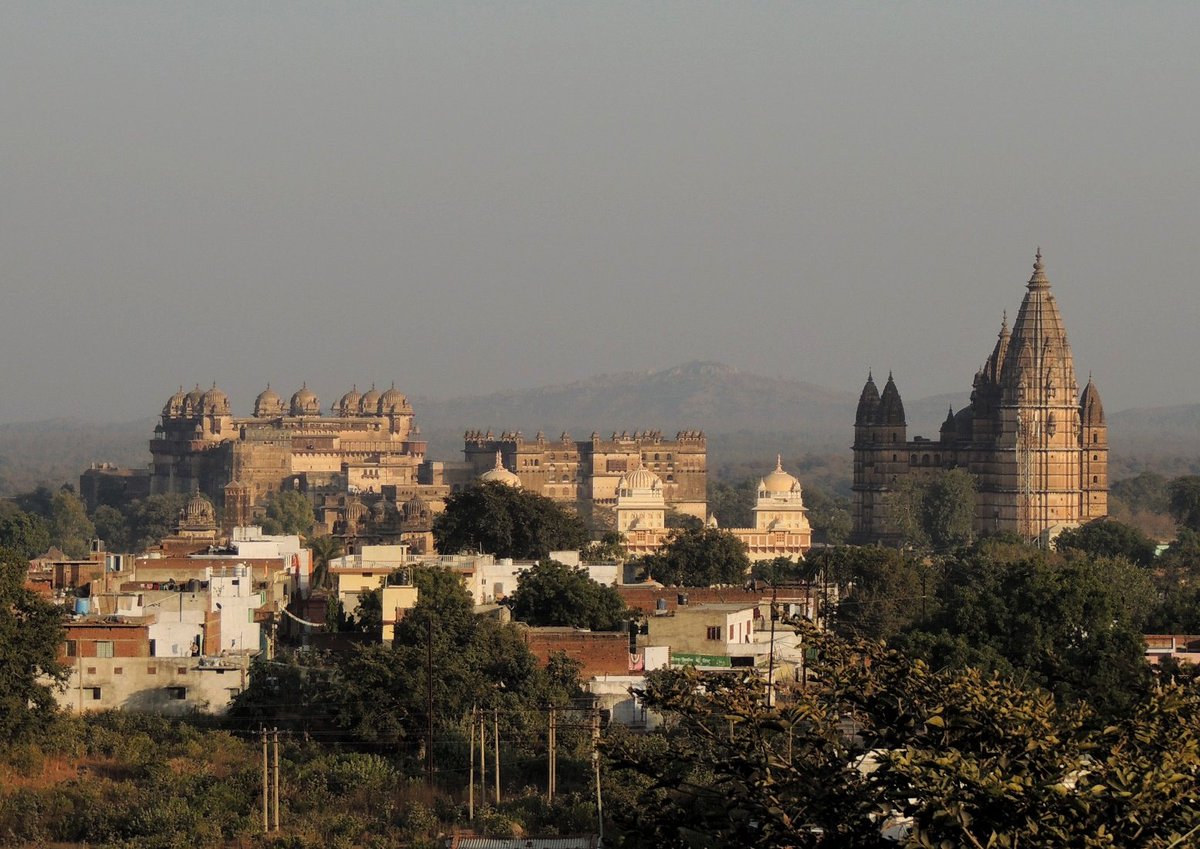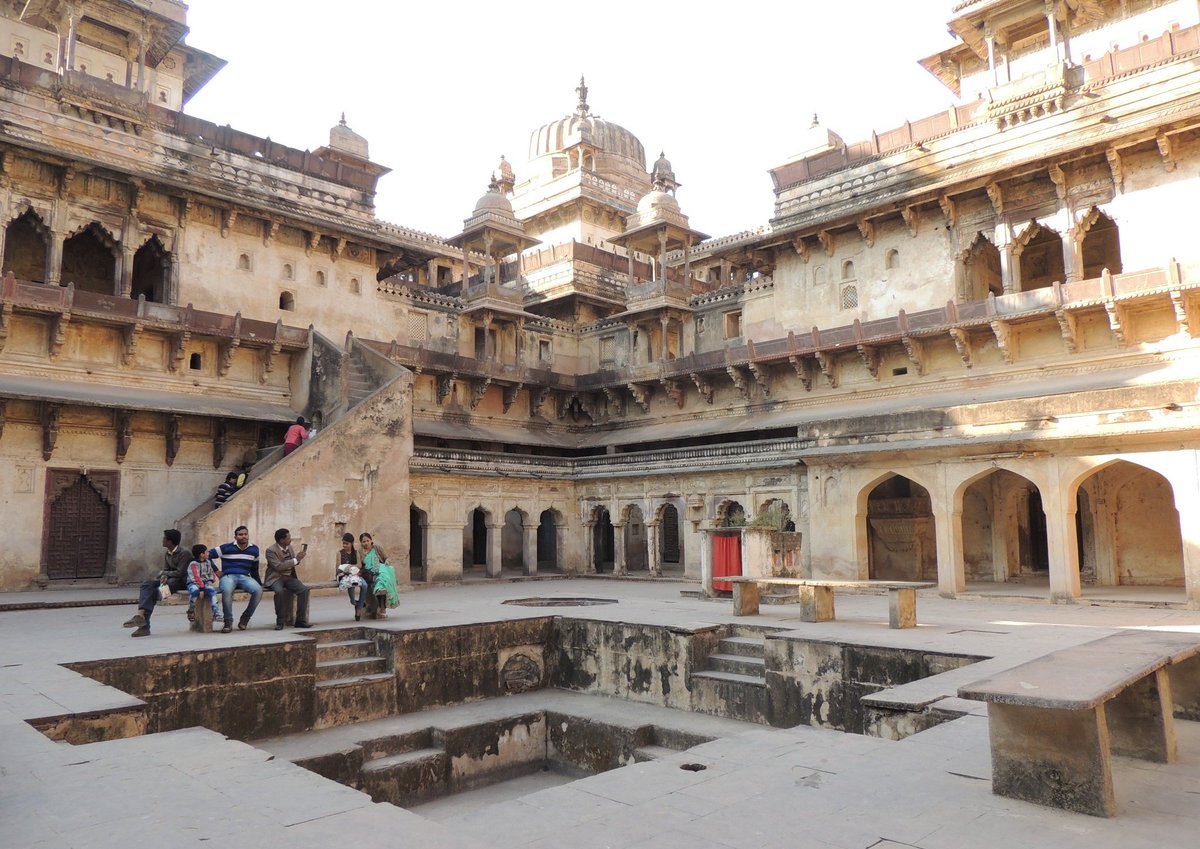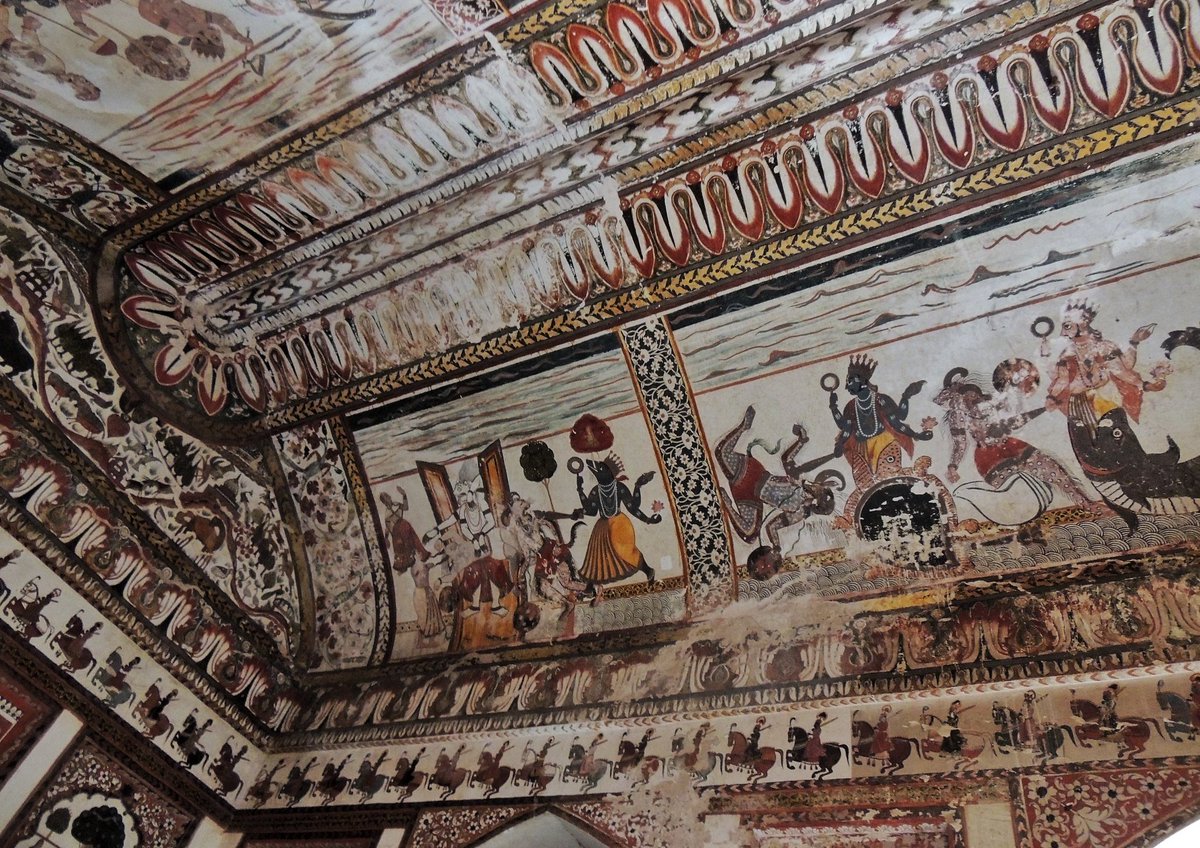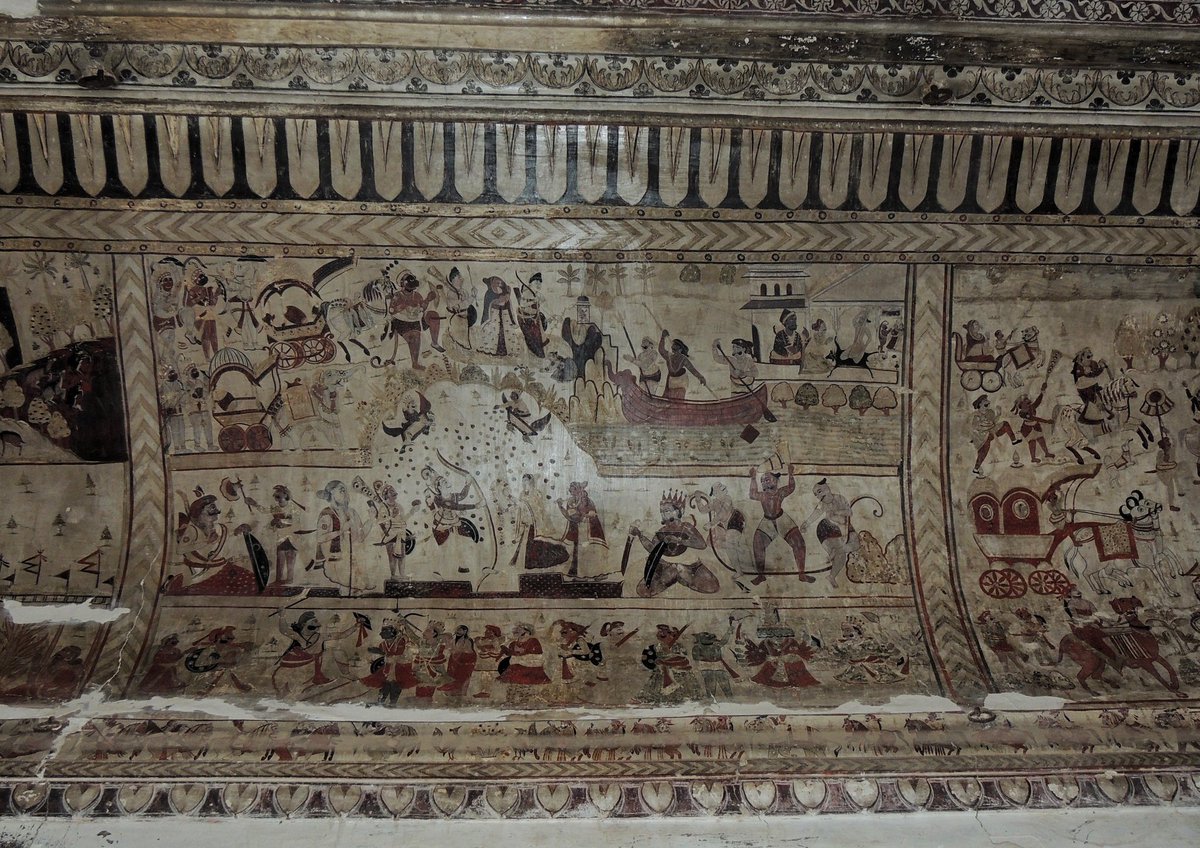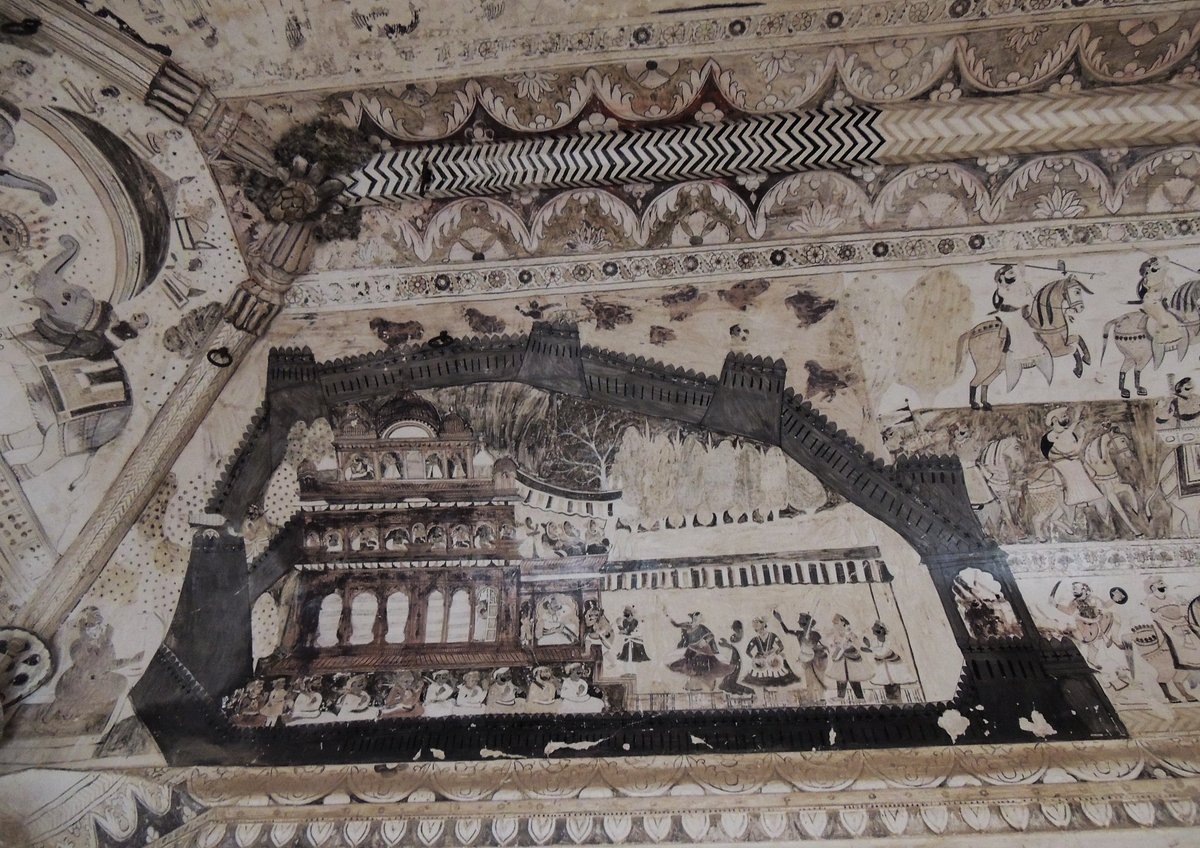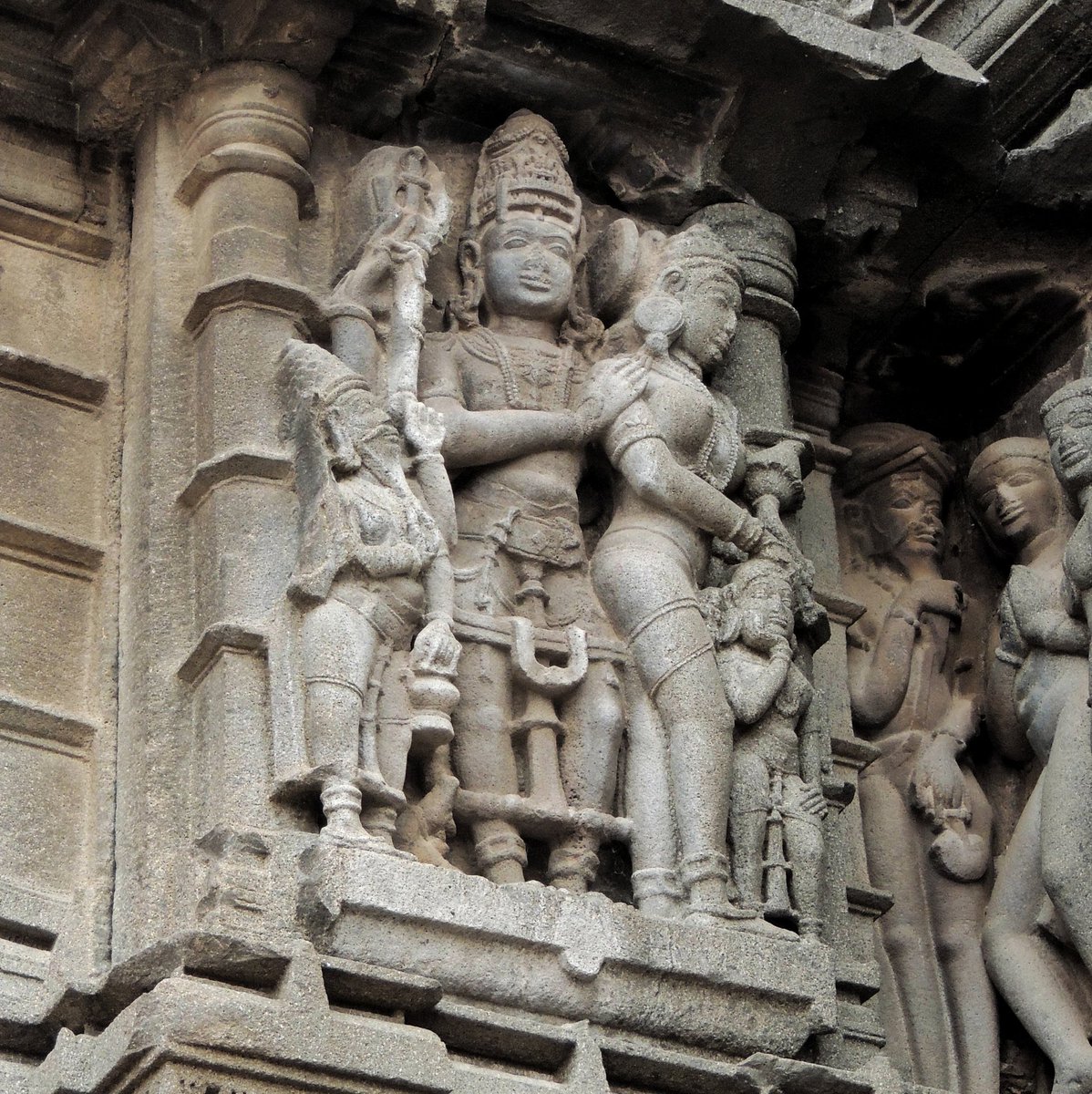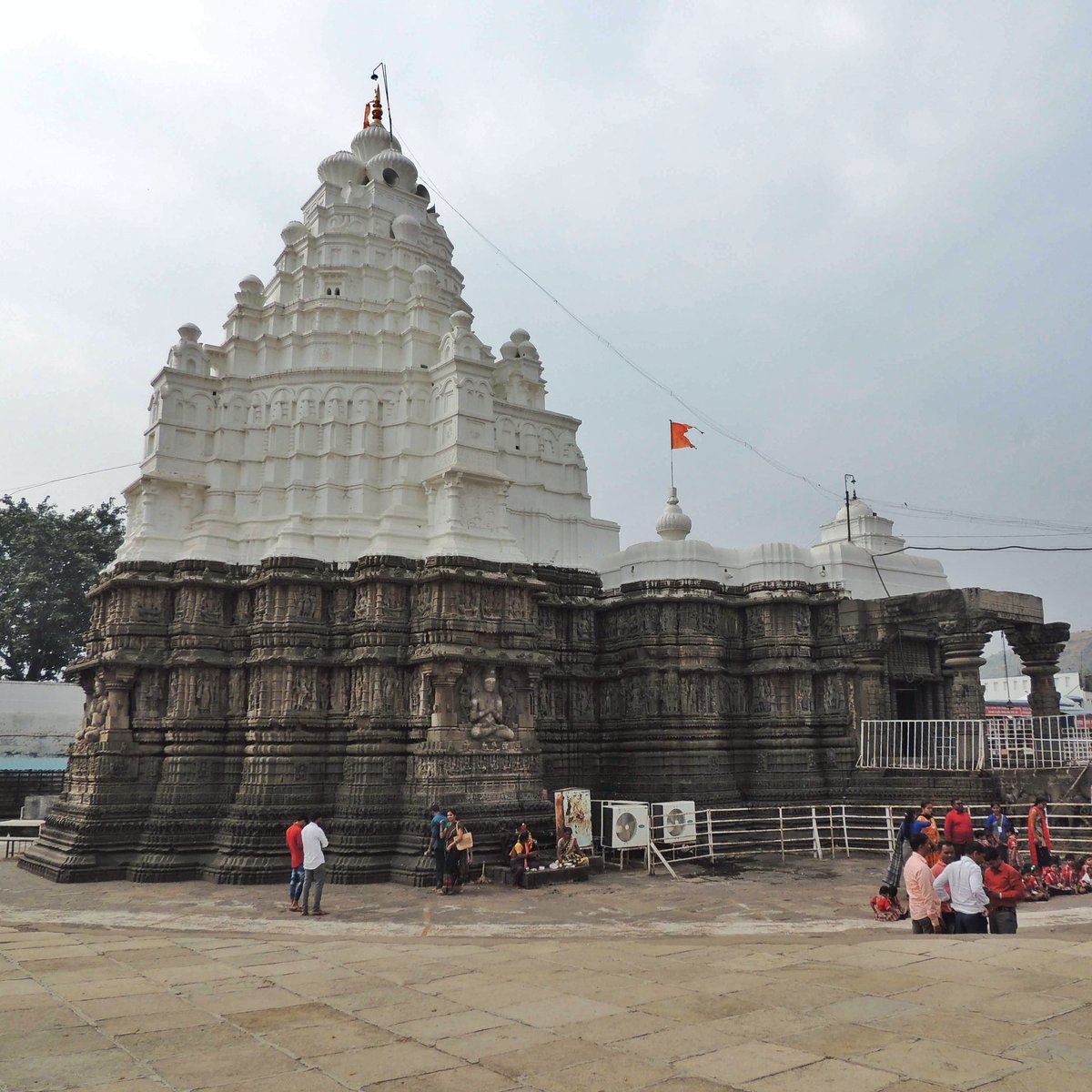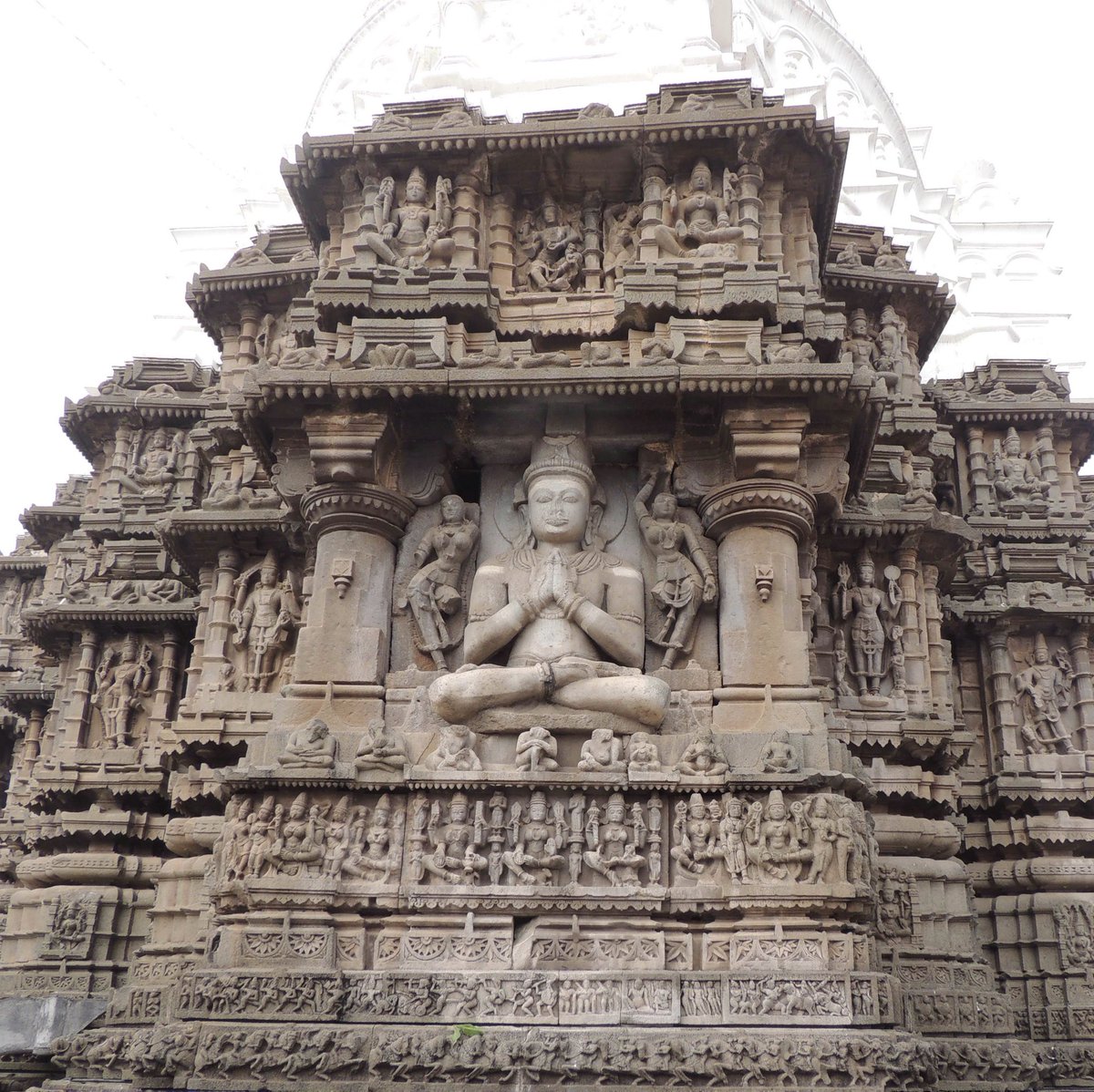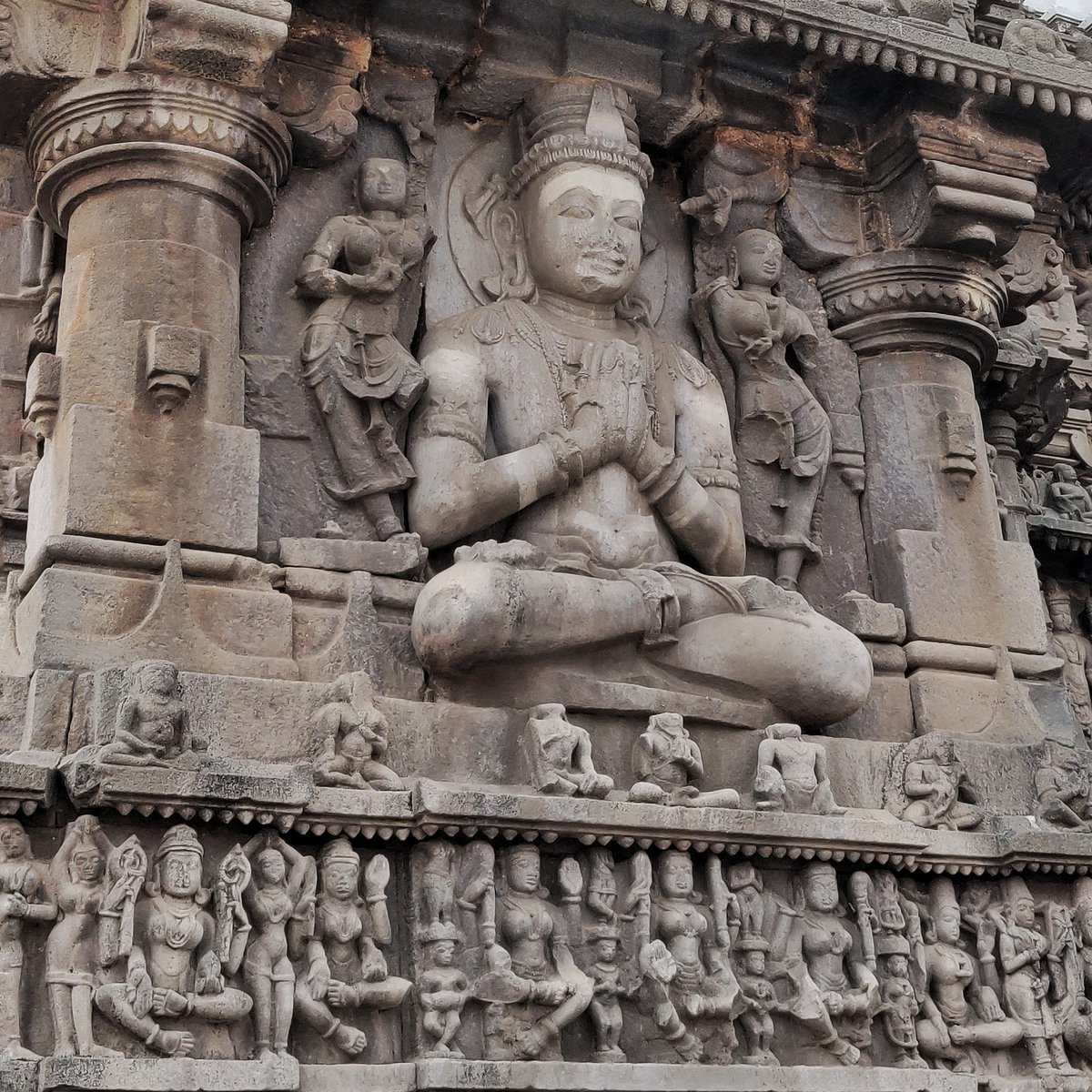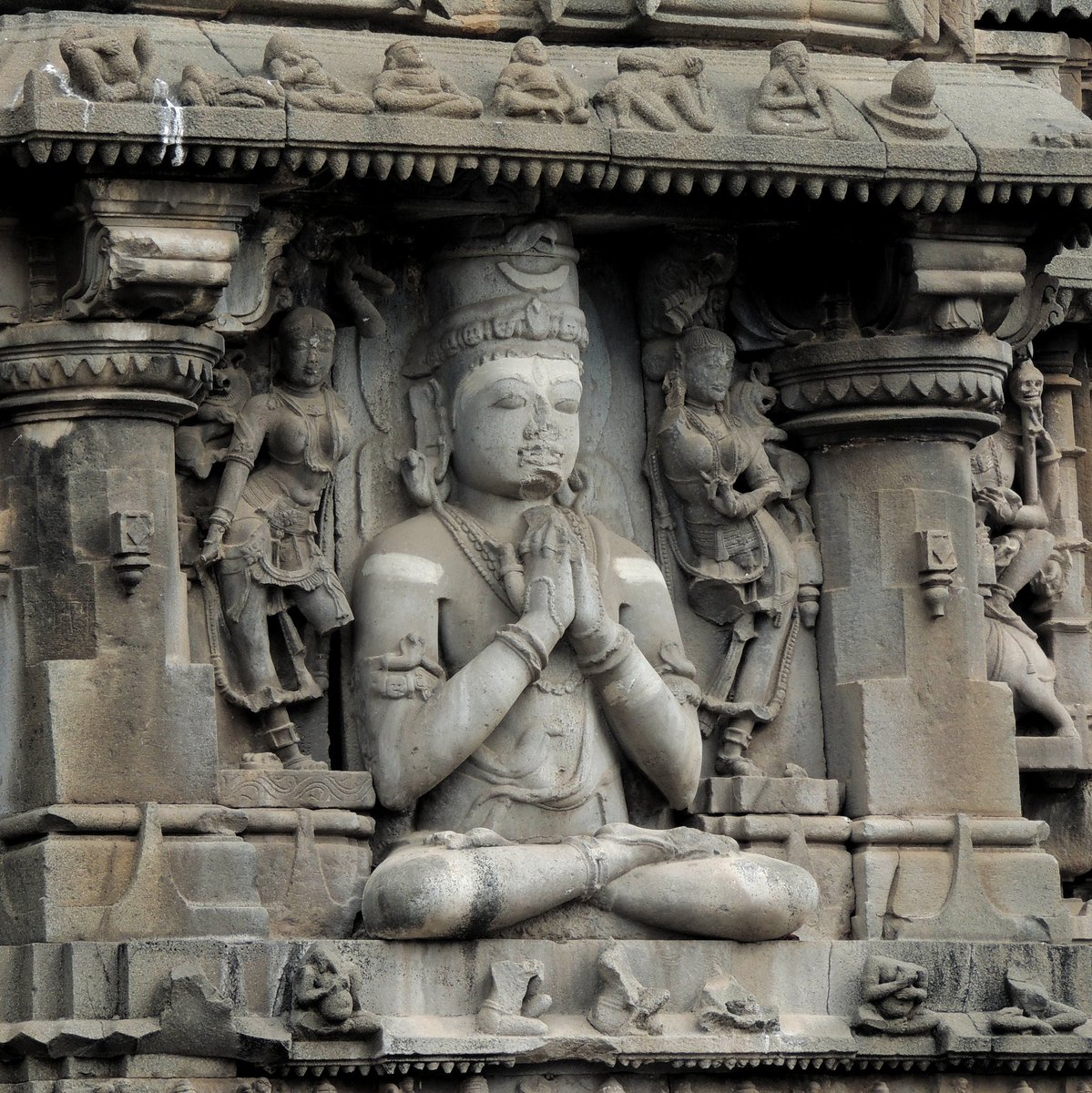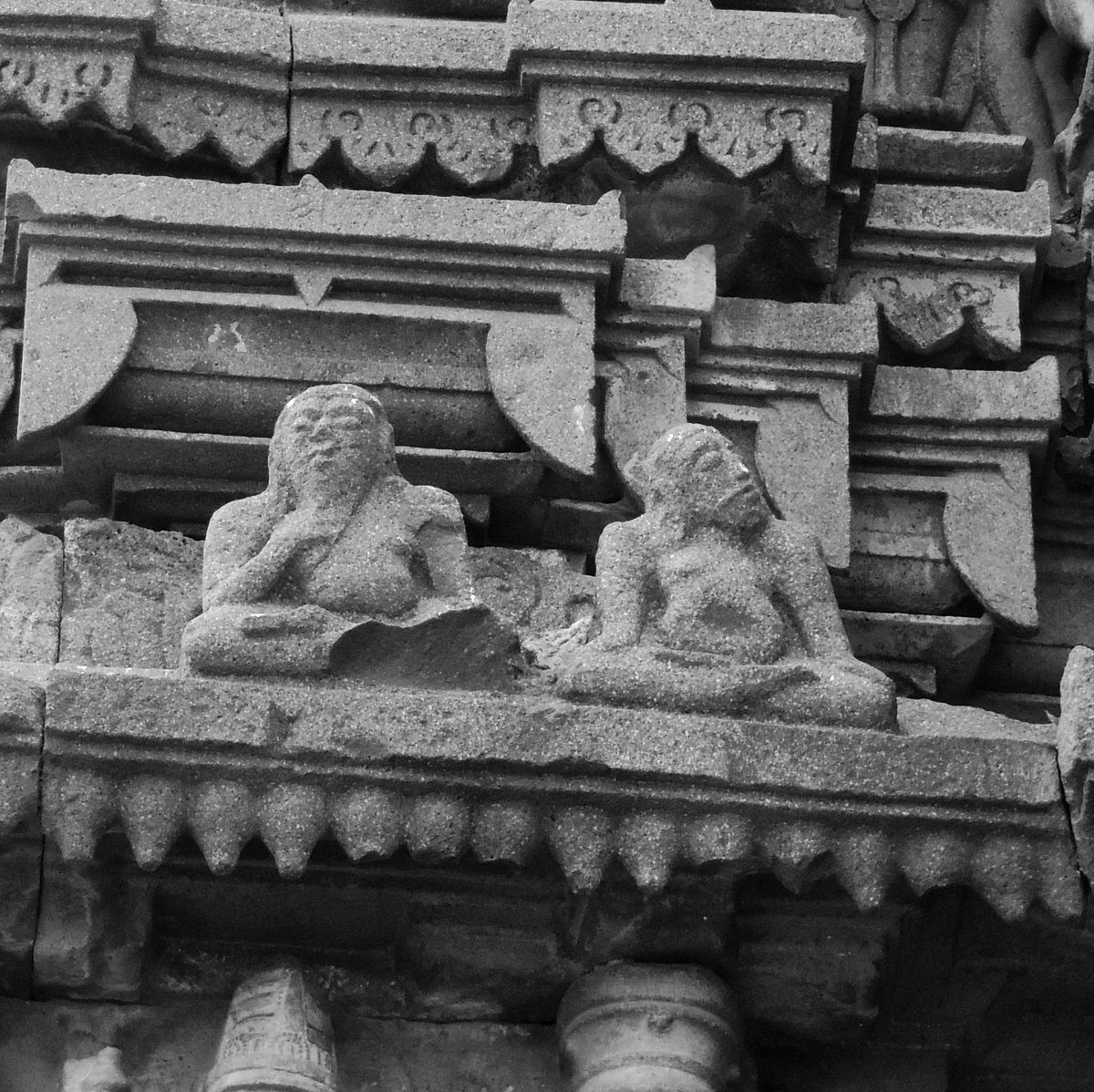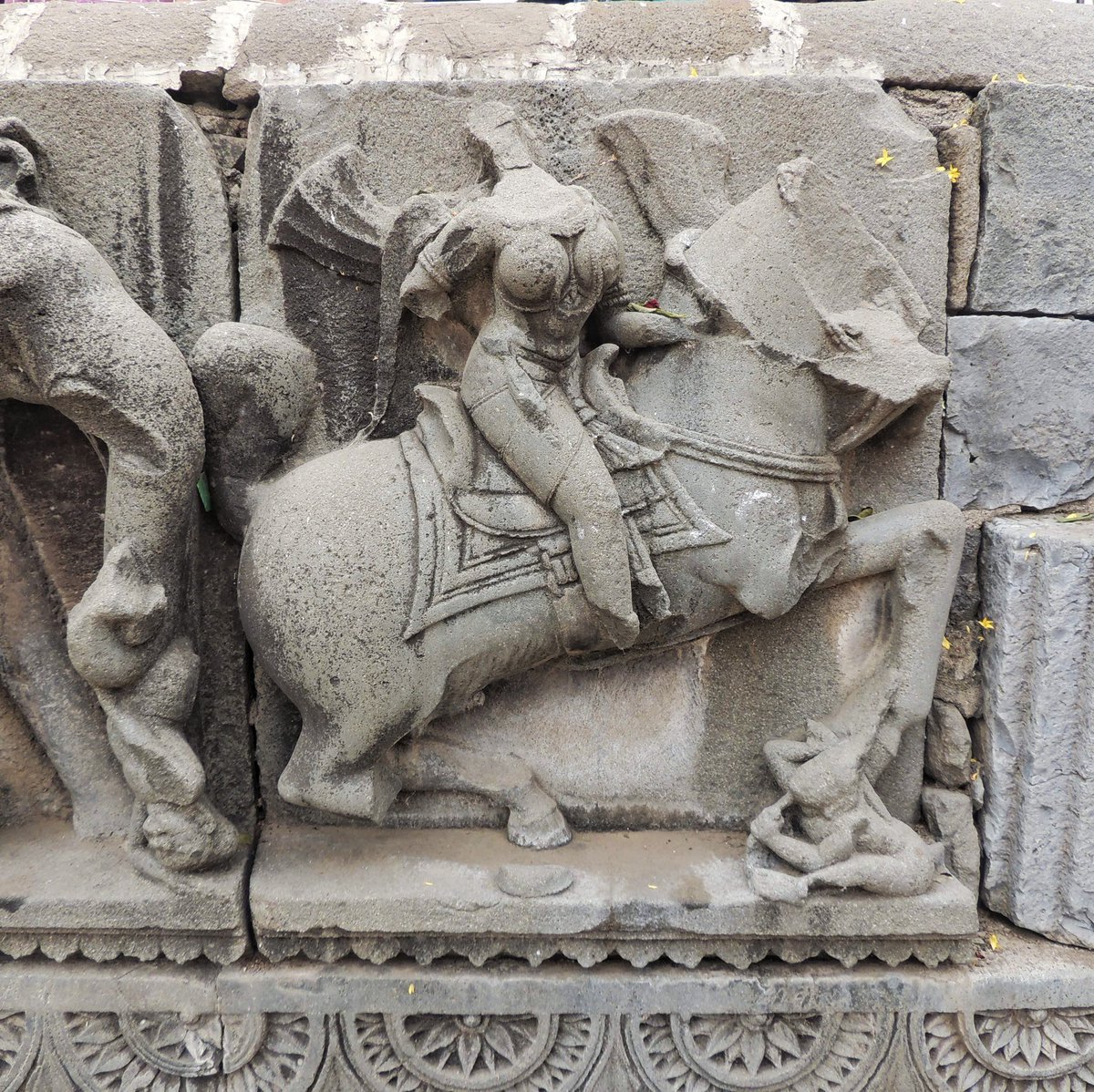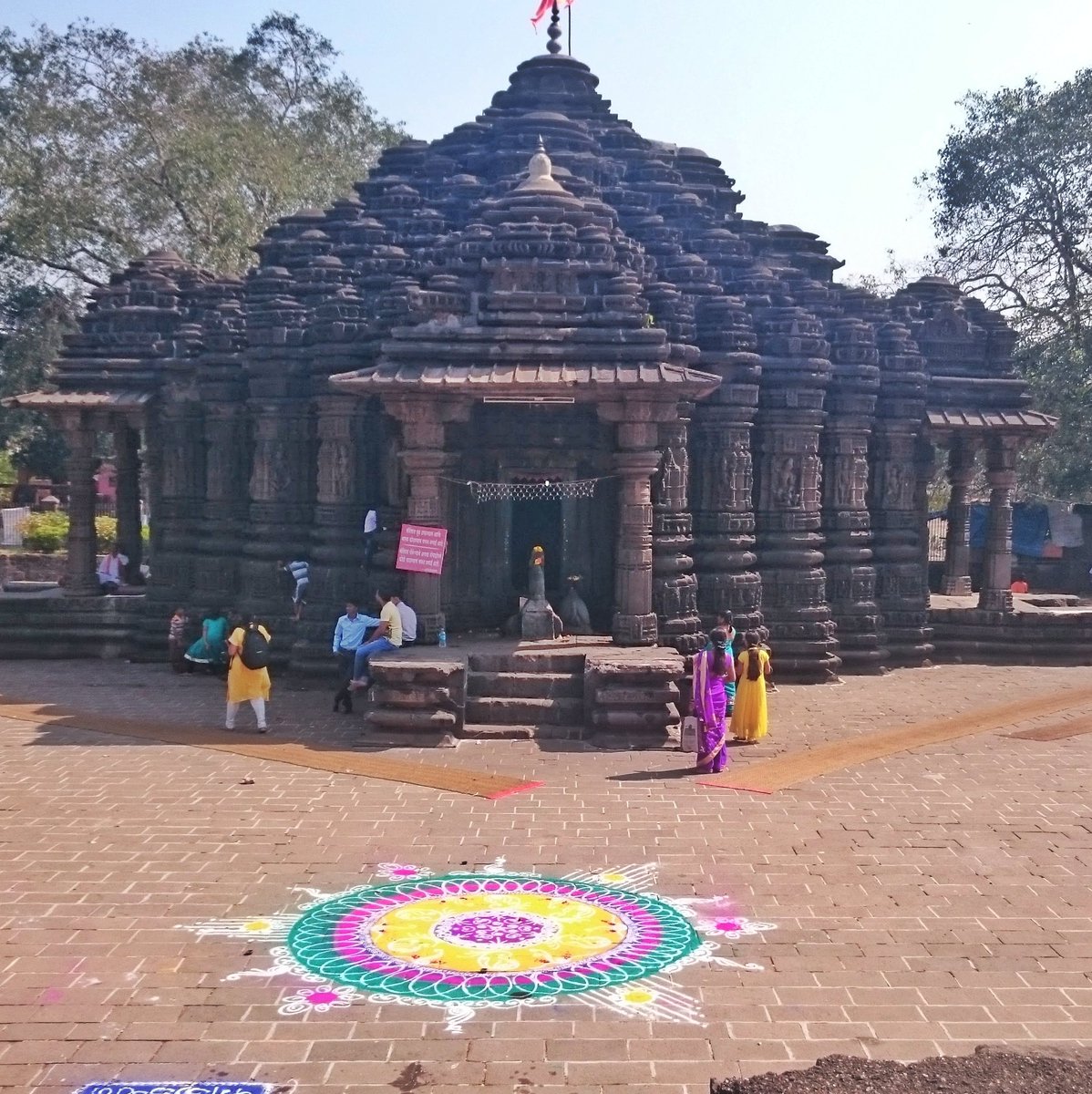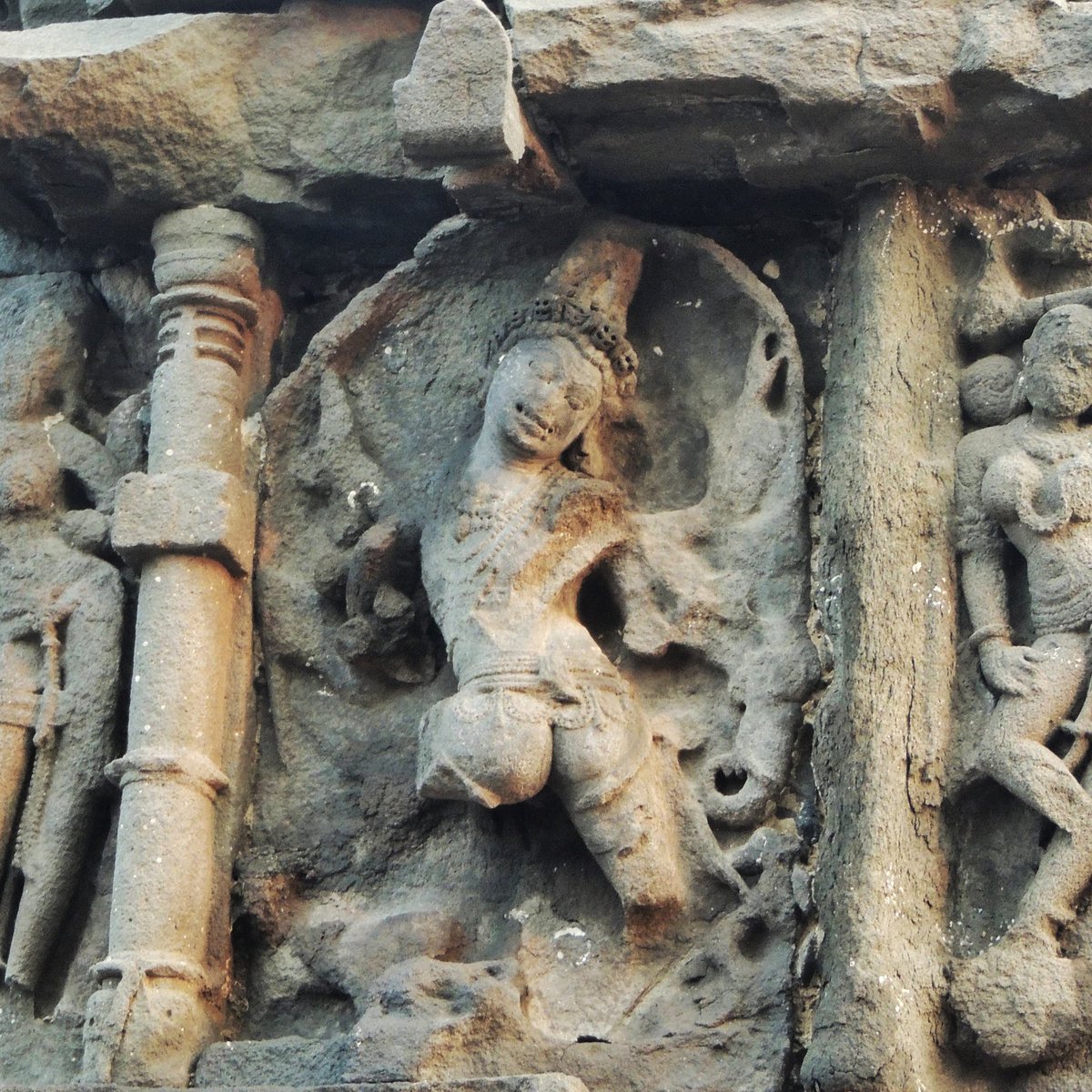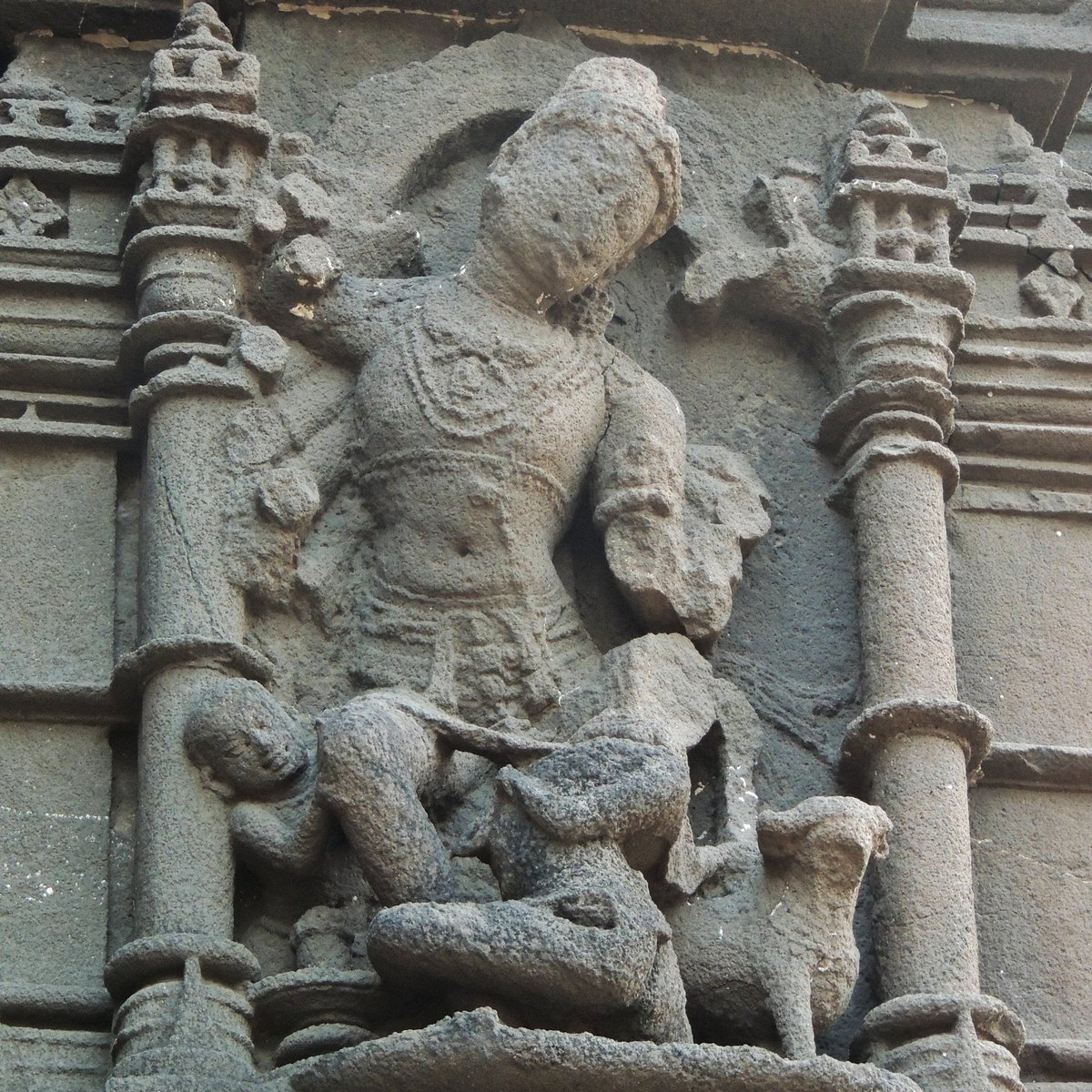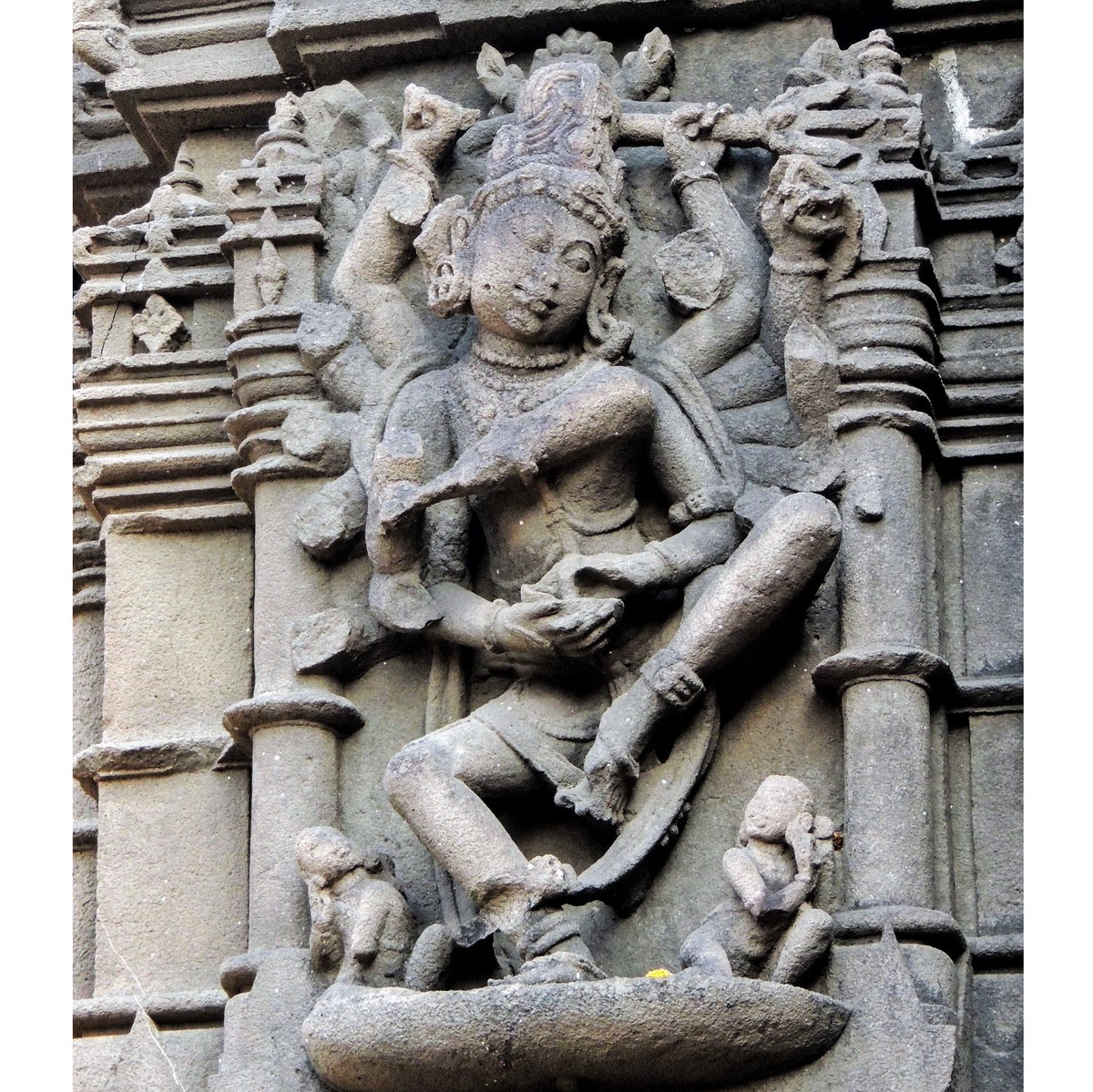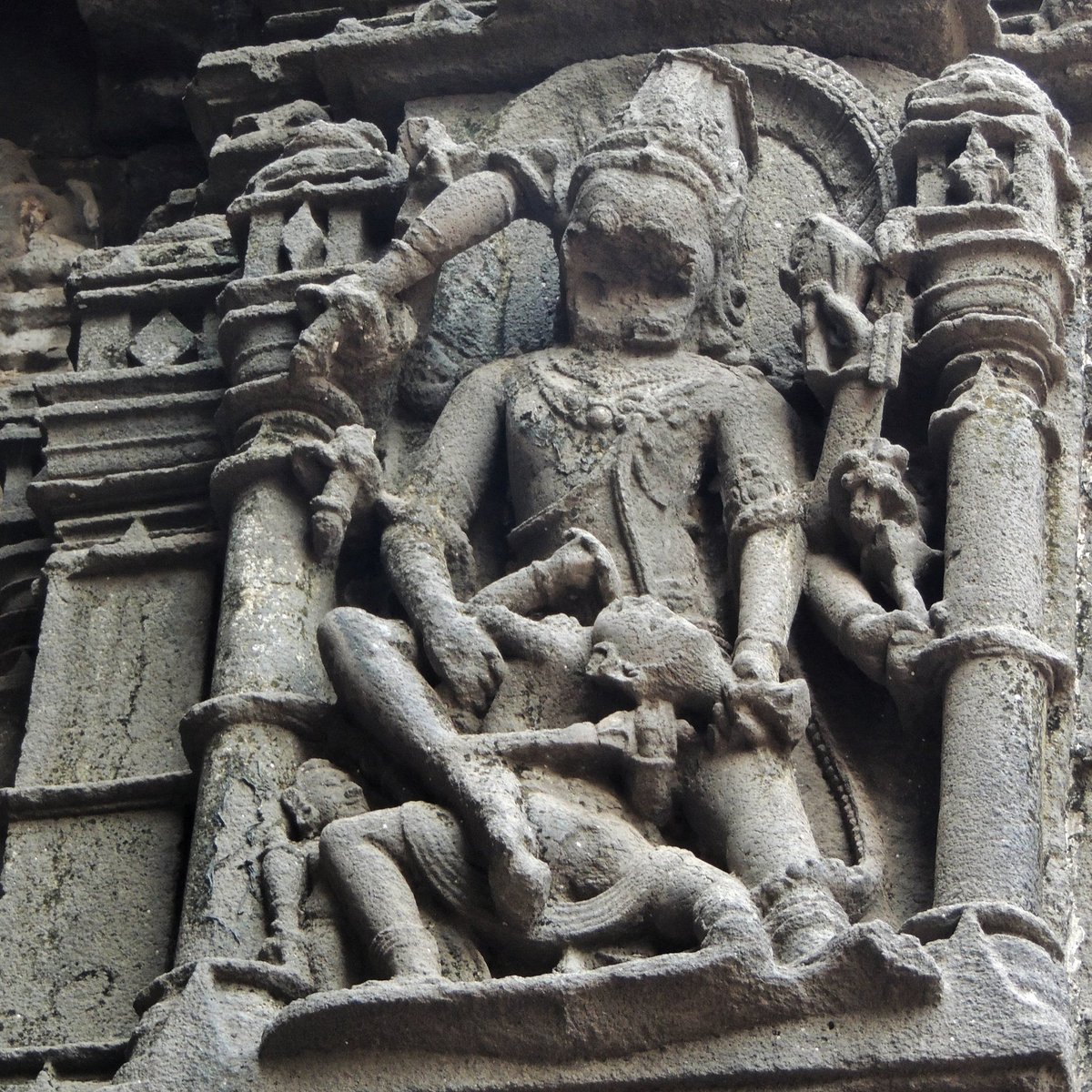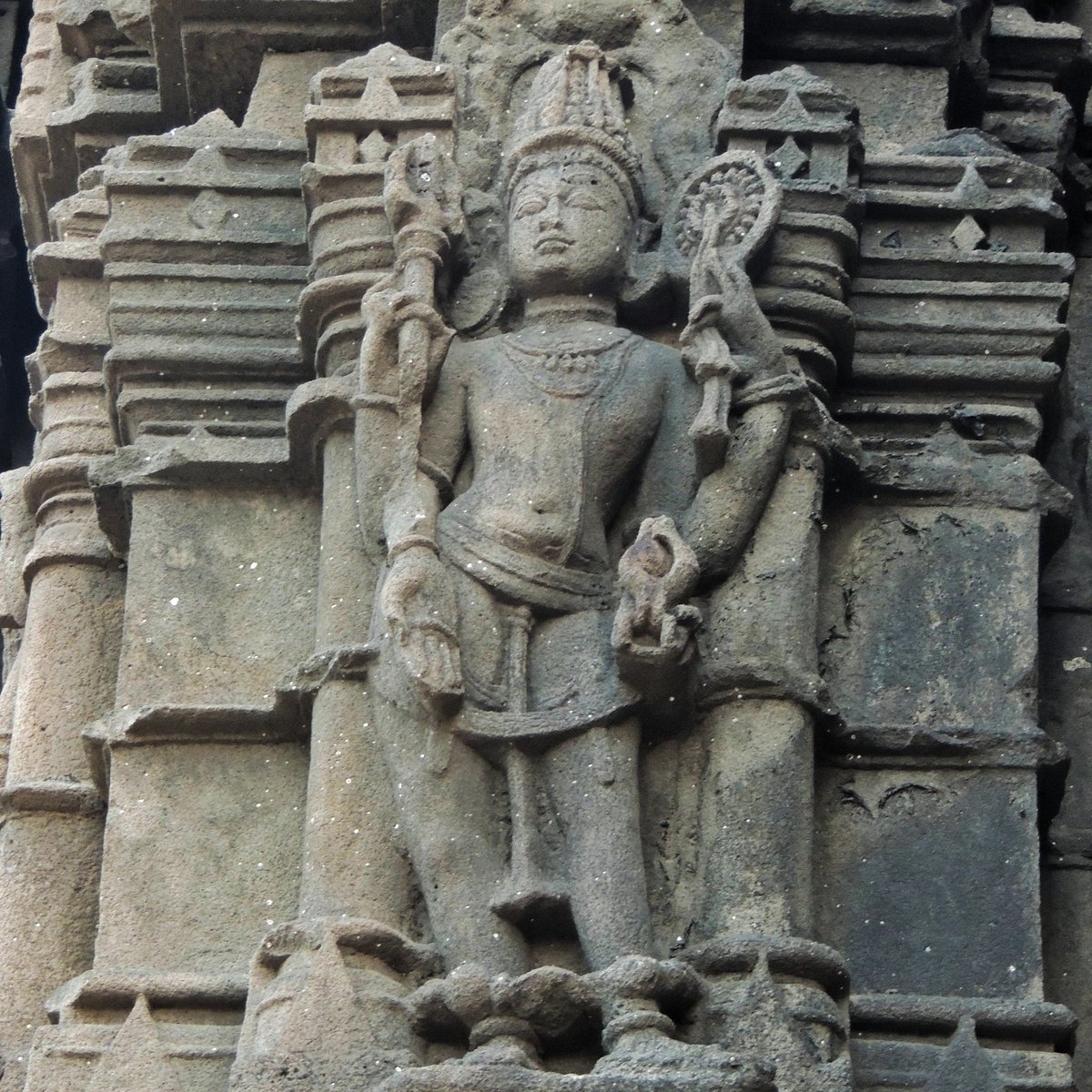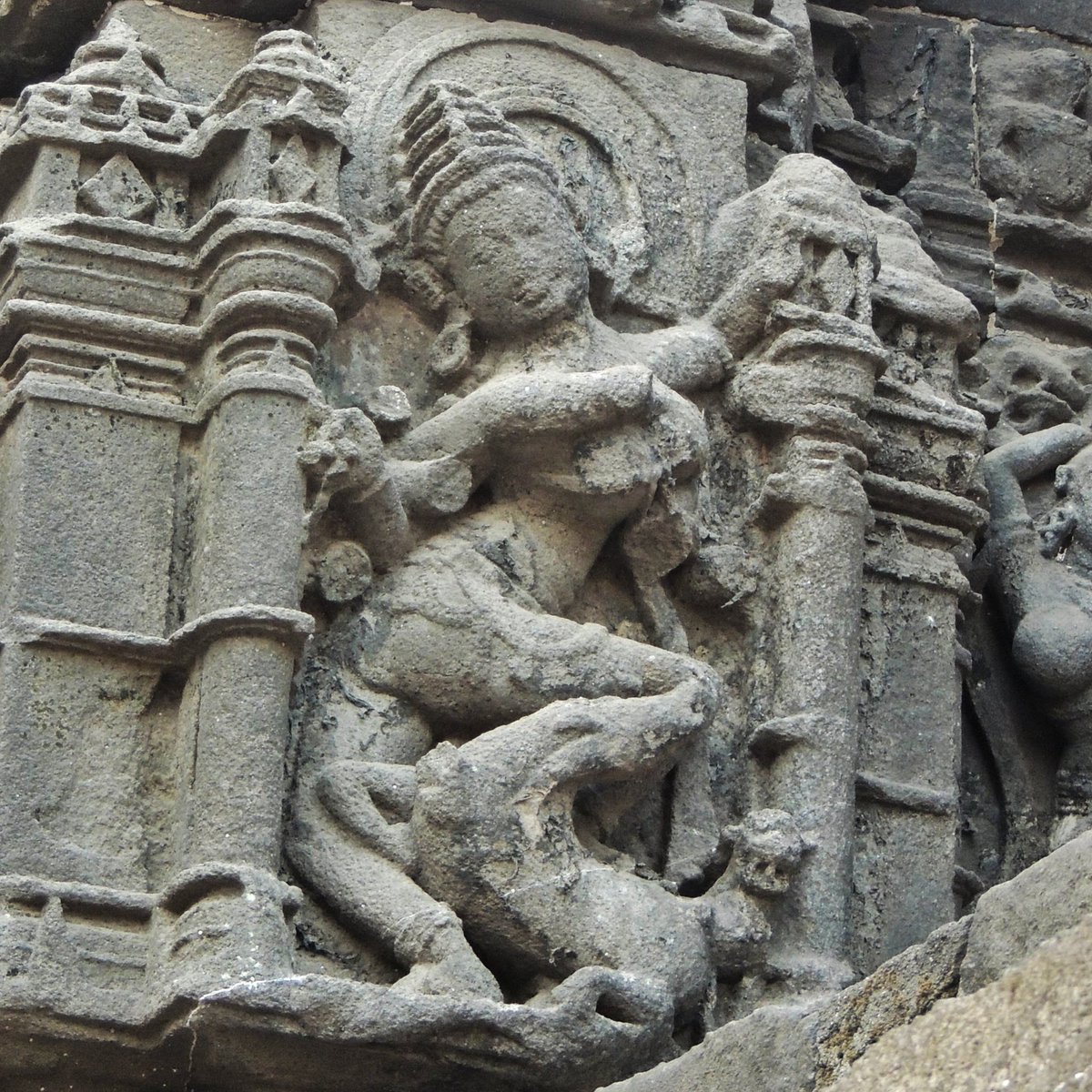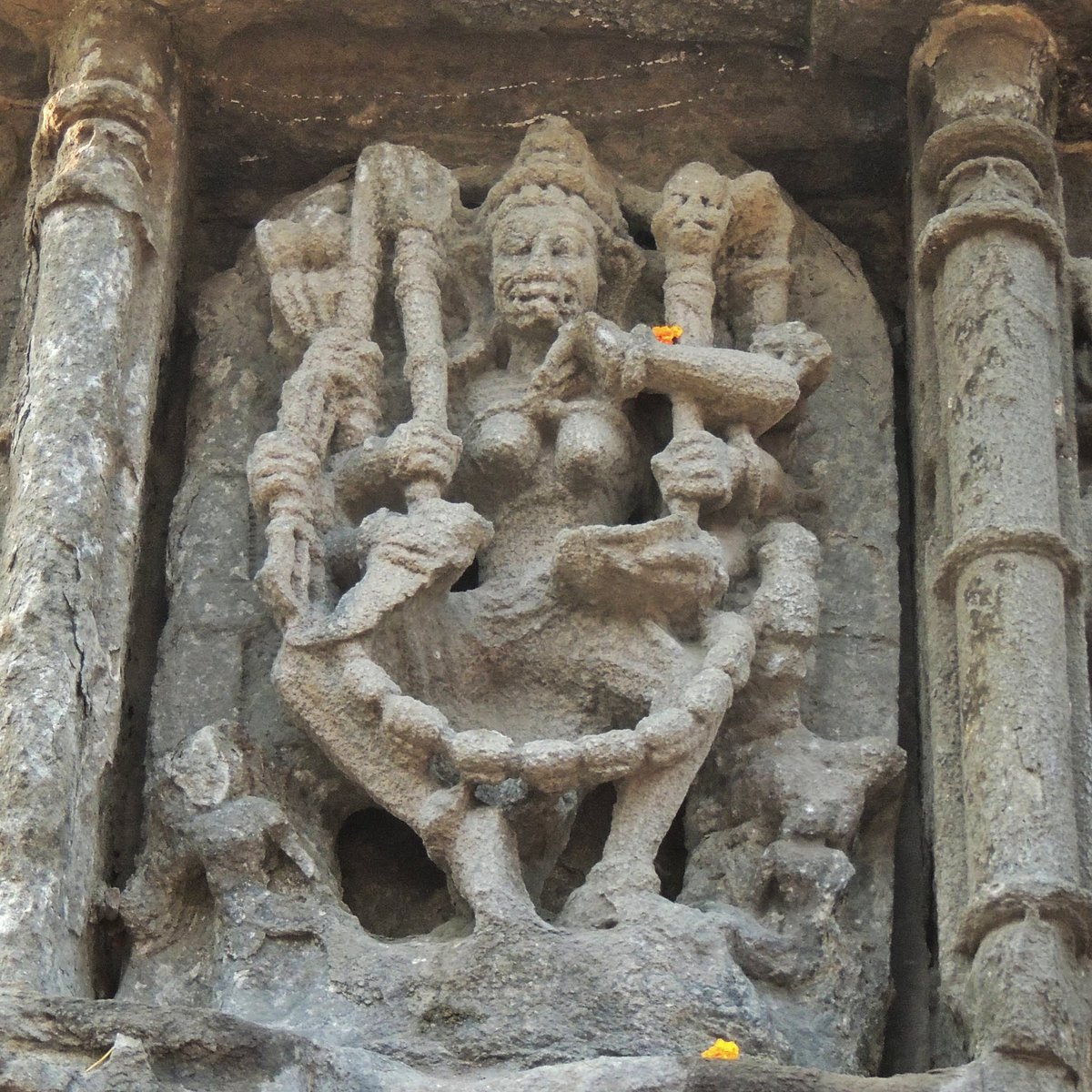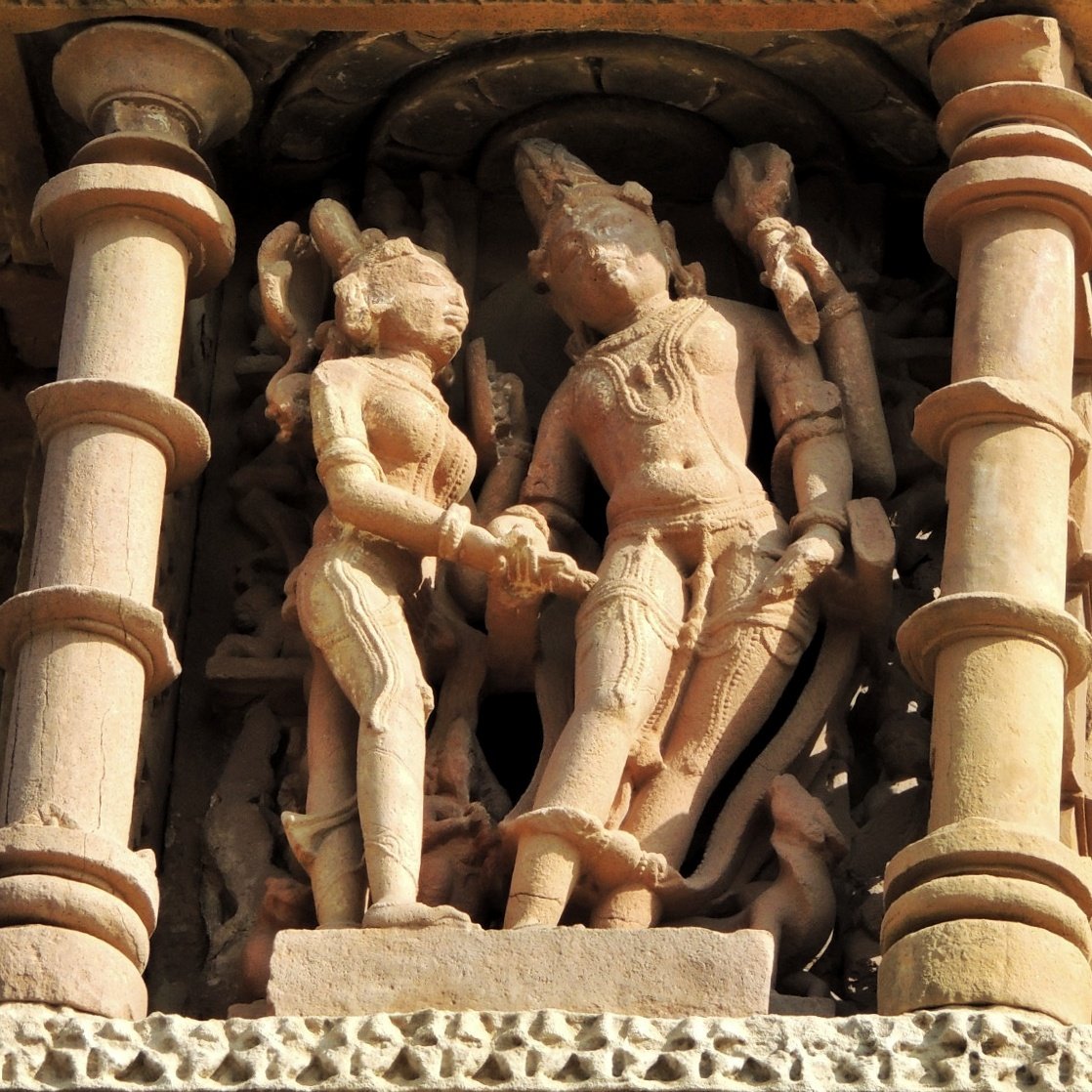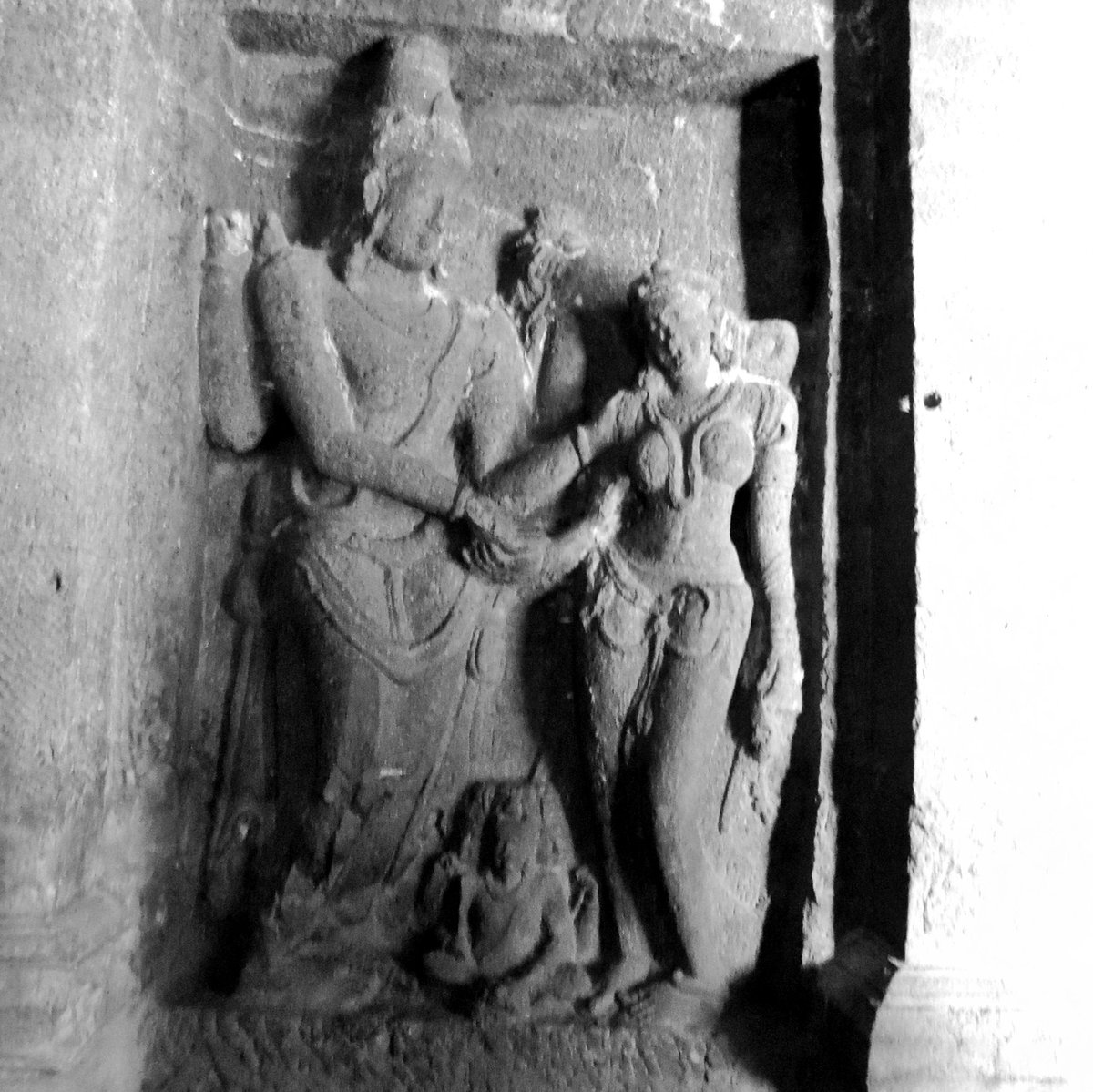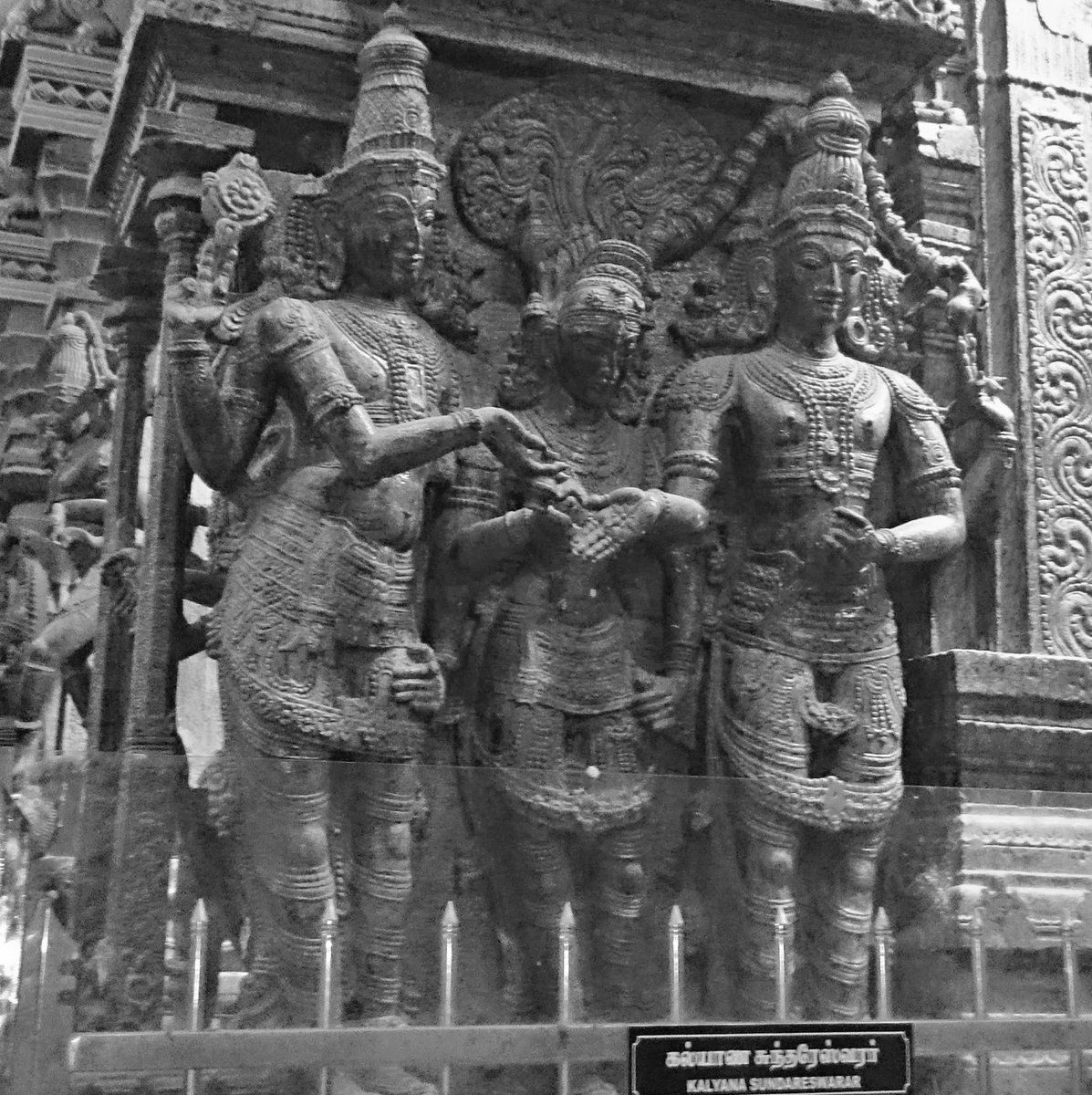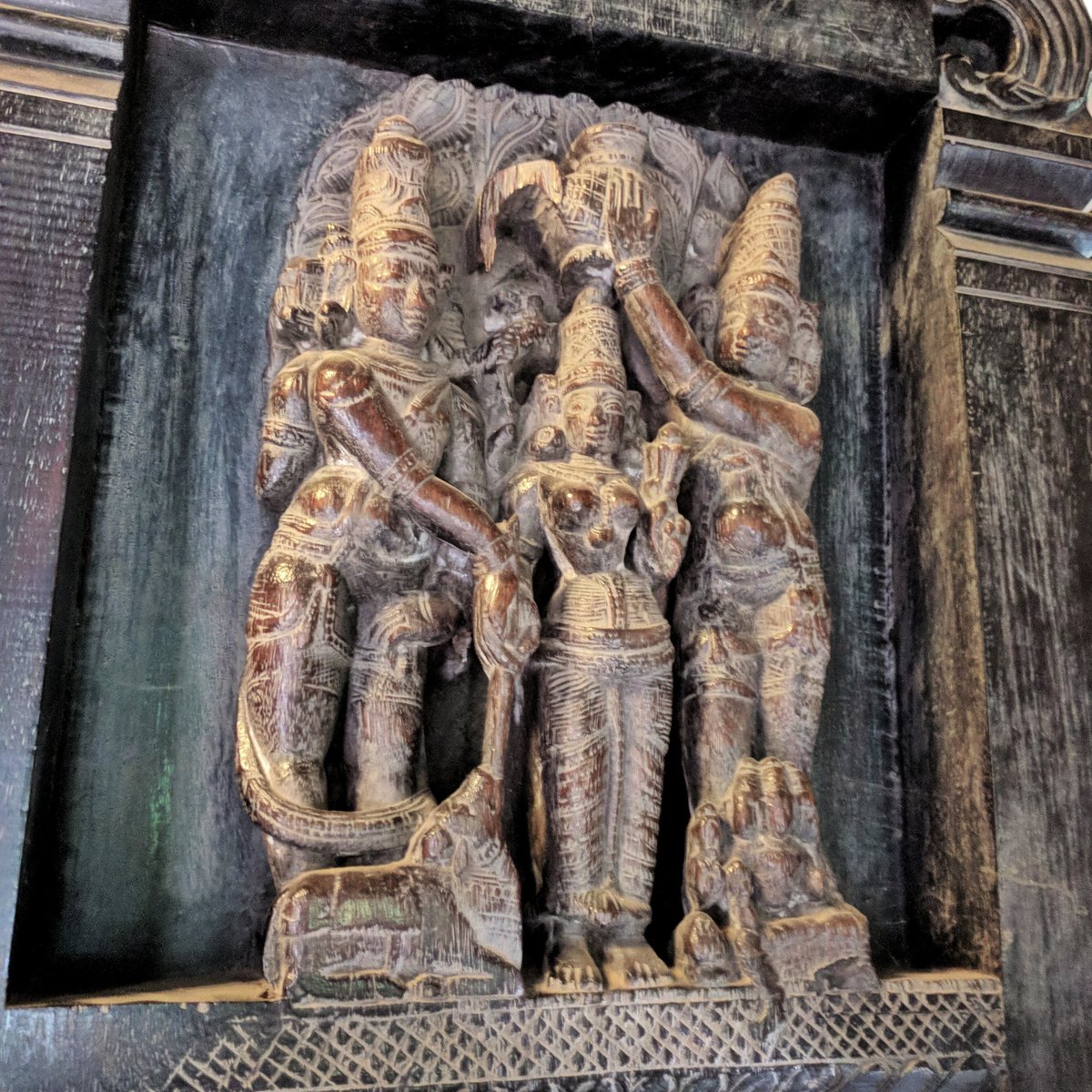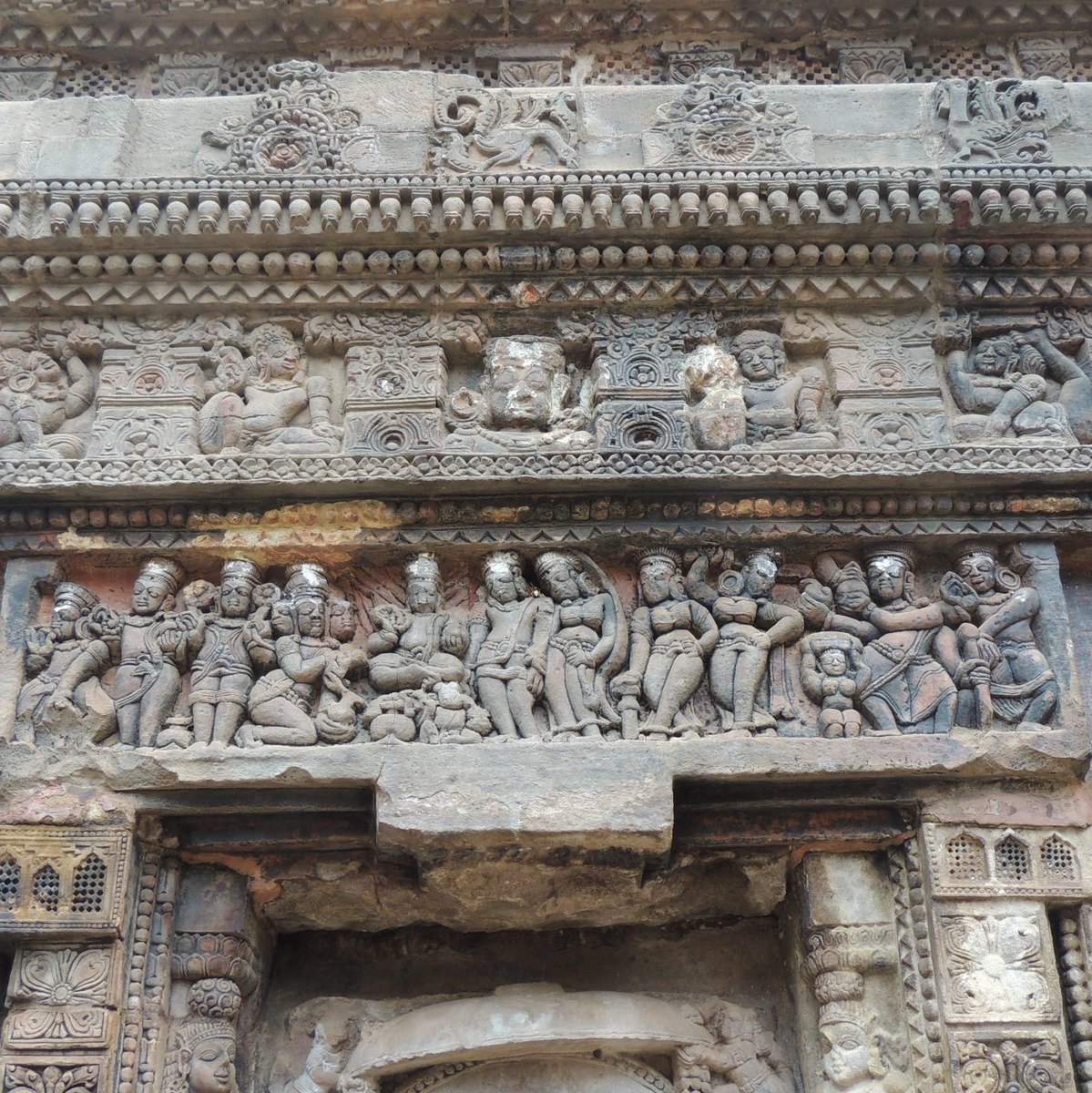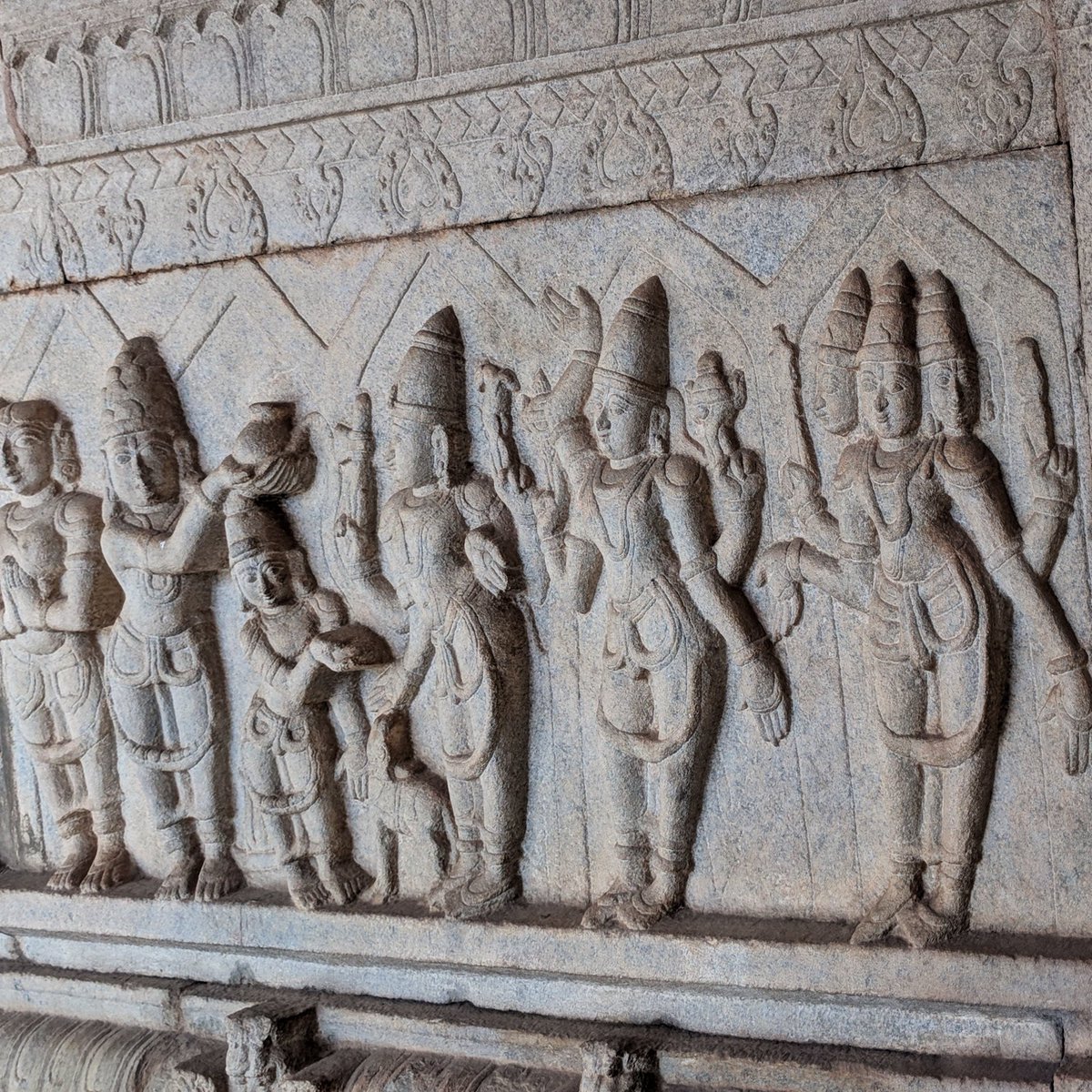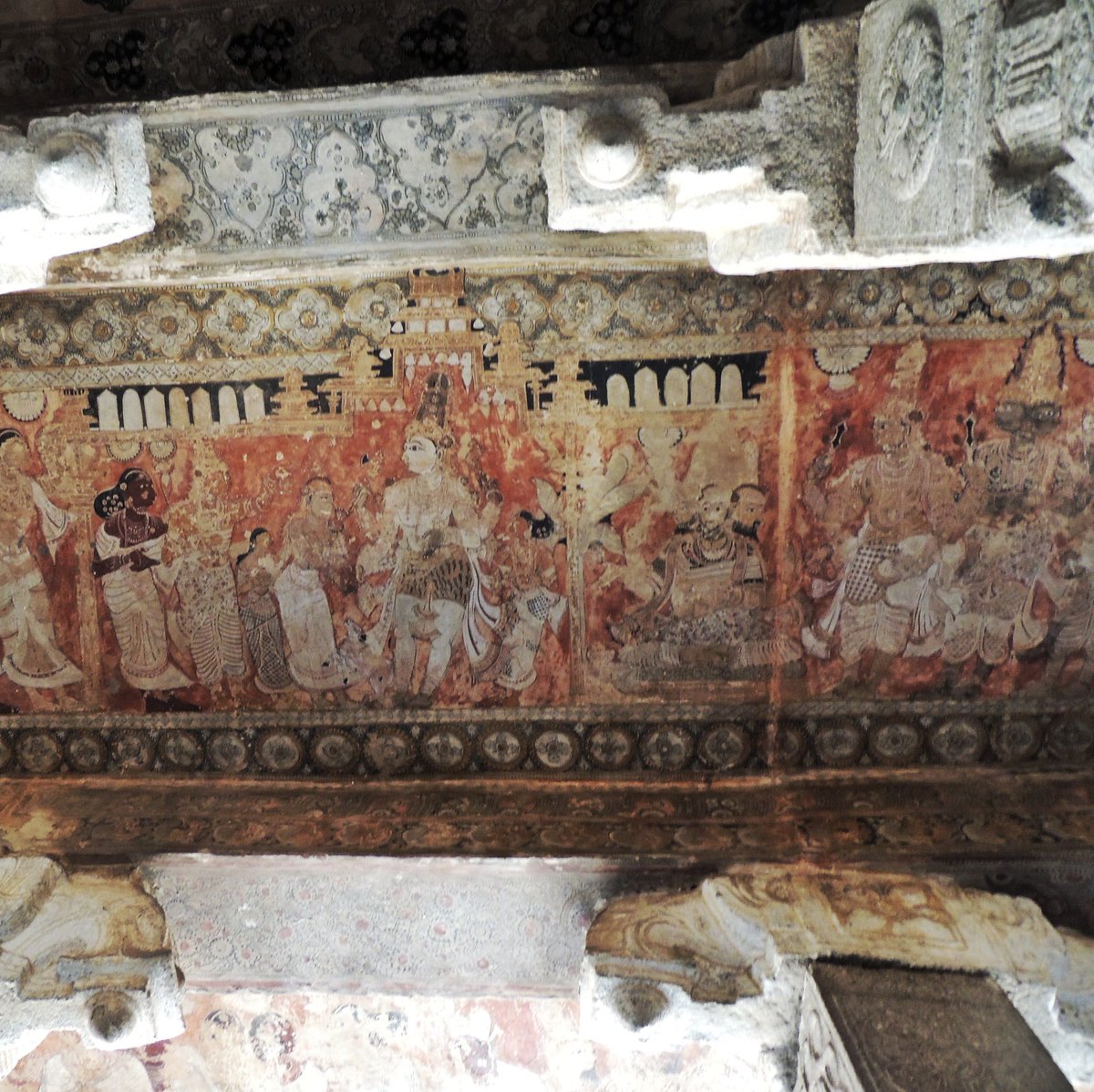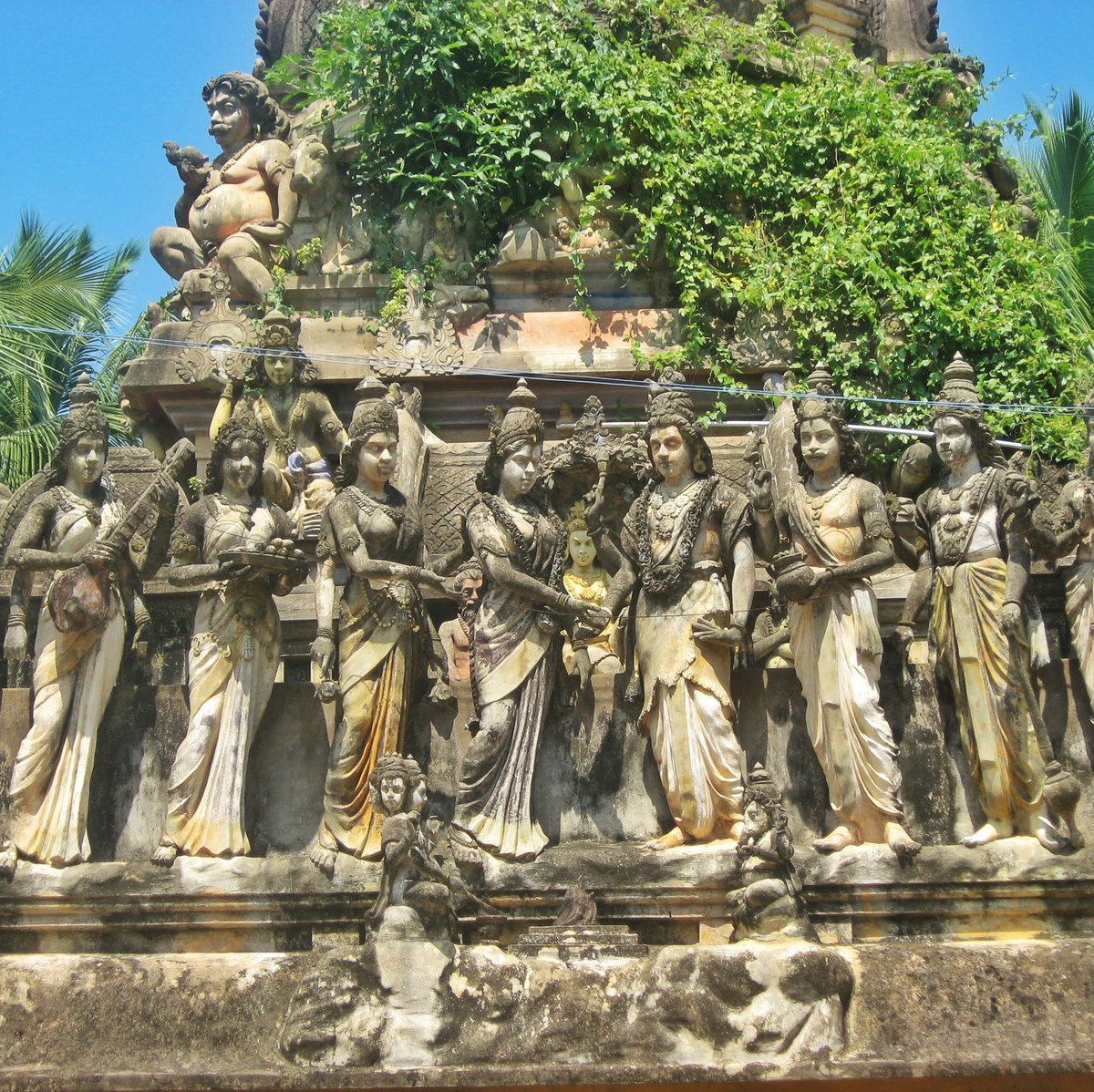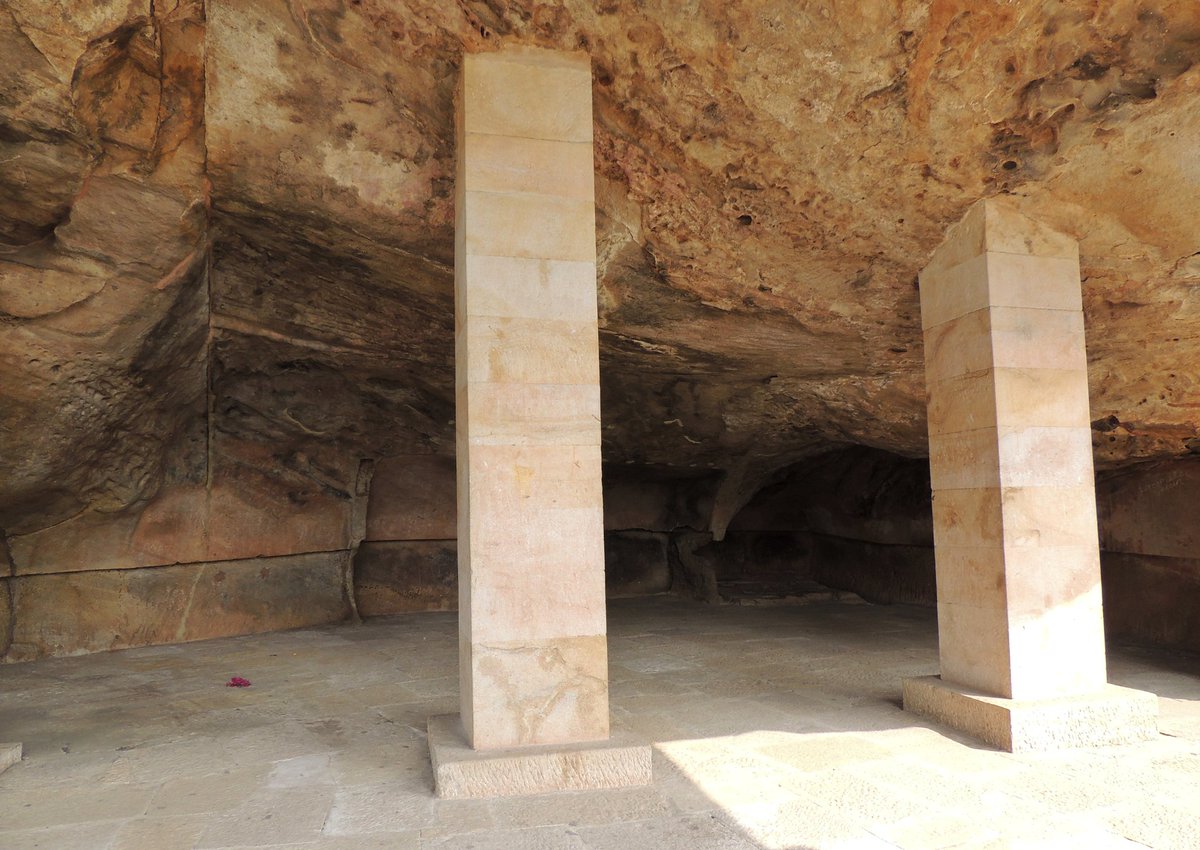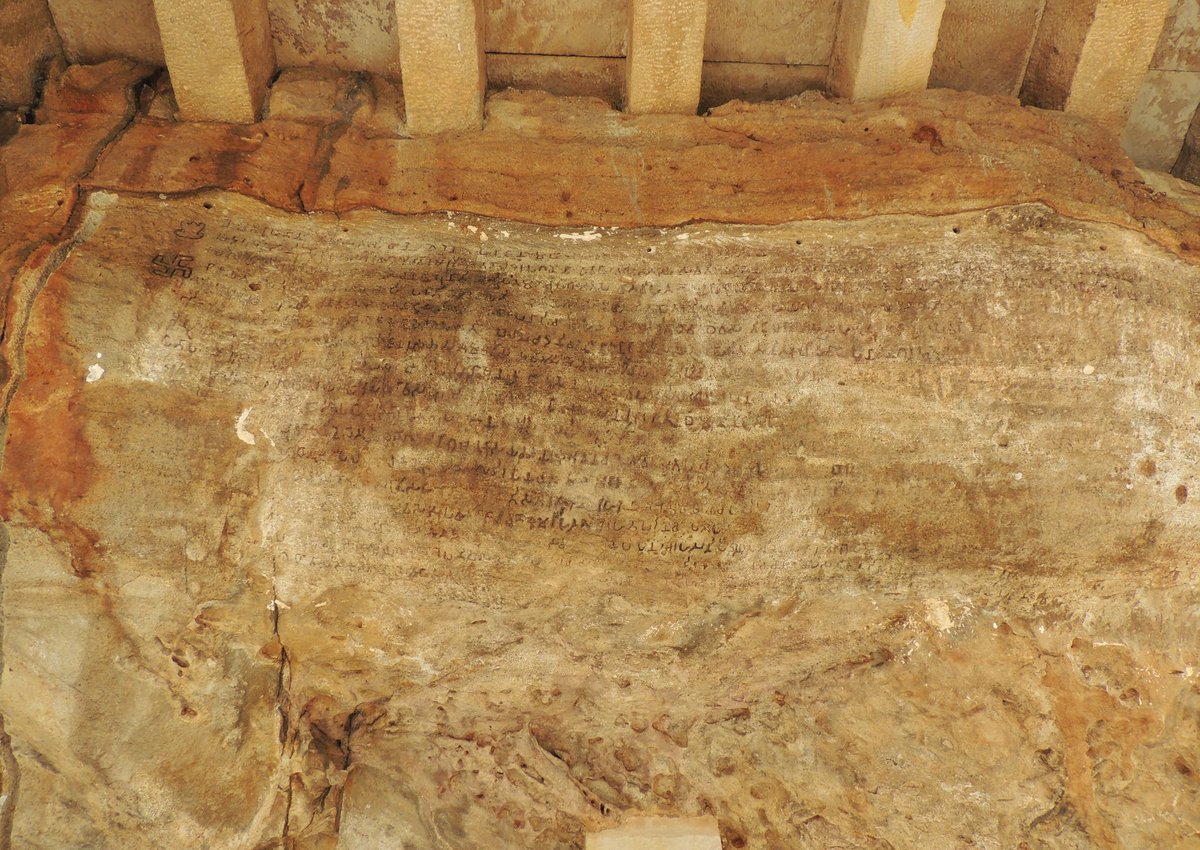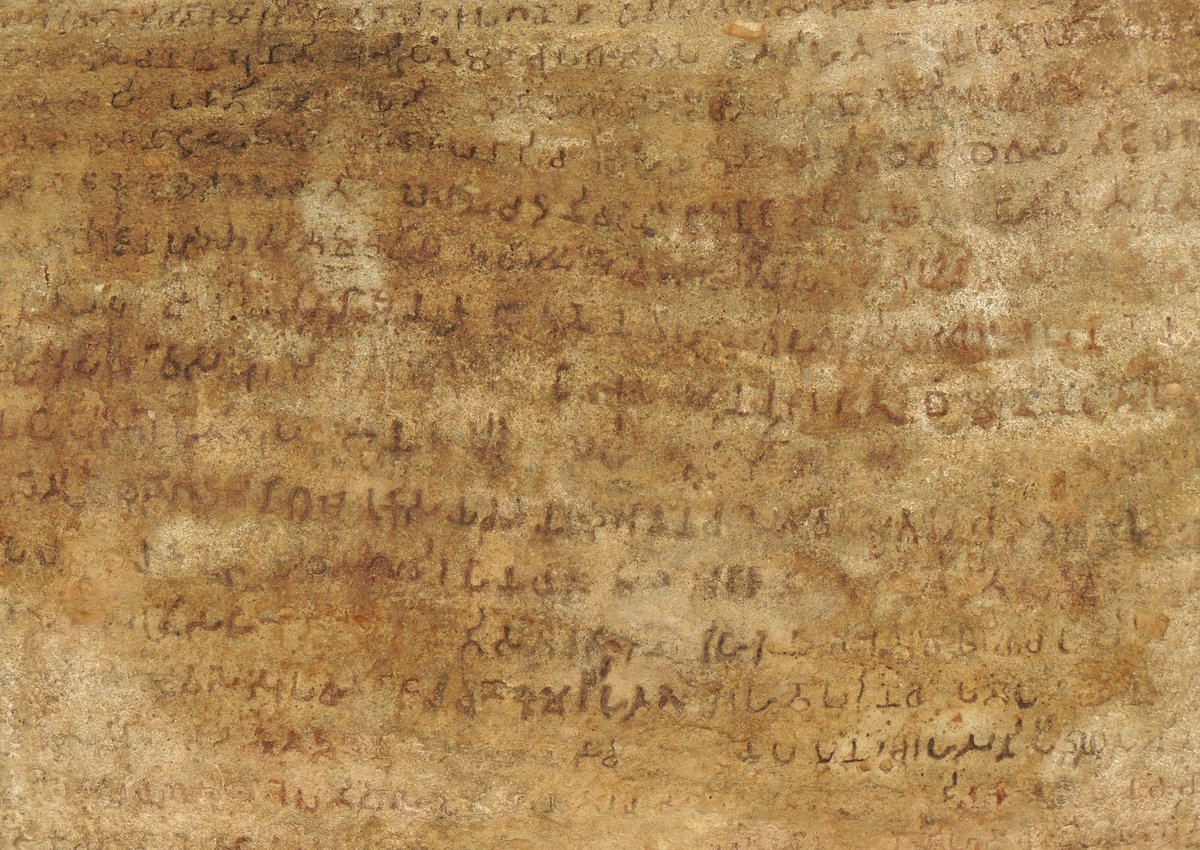अ is for Avalokiteshwara
Avalokiteshwara is a Bodhisattva, who embodies the compassion of all Buddhas. #AksharArt #ArtByTheLetter
1. 11-headed Avalokiteshwara, stone, 5th / 6th century CE, Cave 41, Kanheri , Mumbai. (1/4)
Avalokiteshwara is a Bodhisattva, who embodies the compassion of all Buddhas. #AksharArt #ArtByTheLetter
1. 11-headed Avalokiteshwara, stone, 5th / 6th century CE, Cave 41, Kanheri , Mumbai. (1/4)
2. 11-headed, thousand eyed, thousand armed Avalokiteshwara, stucco , ~1655, Shey Monastery, Ladakh. #AksharArt #ArtByTheLetter (2/4)
3. 11-headed , thousand eyed , thousand armed Avalokiteshwara, 15th century CE painting from Saspol Caves, Ladakh. #AksharArt #ArtByTheLetter (3/4)
4. Avalokiteshwara, Bronze, 12th century CE, Nagapattinam, Tamilnadu, presently at the Chennai Government Museum. #AksharArt #ArtByTheLetter (4/4)
Follow the series by clicking on #AksharArt or #ArtByTheLetter and also go see what @sudhagee has posted today !
The second letter in the varnamala is आ and आ is for आग्नेयी. A very special Agneyi from Kiradu in Rajasthan, identified only by the flames around her head, and the fire she carries in her hand. Notice the 3rd leg... #AksharArt #ArtByTheLetter in collaboration with @sudhagee
इ is for इतिहास. In the Indian tradition, the epics, Ramayana and Mahabharata are itihasas. Pic 1. Ramayana panel, Kailas cave, Ellora. Pic 2. Close up - Surpanaka episode. #AksharArt #ArtByTheLetter
Pic 3. Mahabharata panel, Kailasa Cave, Ellora.
Pic 4. Close up, showing Bhima killing Duryodhana, while Krishna and the other Pandava brothers look on.
Pic 5. Vali and Sugreeva fighting, Hampi
Pic 6. Bhishma lying on the bed of arrows, Pattadakkal
#AksharArt #ArtByTheLetter
Pic 4. Close up, showing Bhima killing Duryodhana, while Krishna and the other Pandava brothers look on.
Pic 5. Vali and Sugreeva fighting, Hampi
Pic 6. Bhishma lying on the bed of arrows, Pattadakkal
#AksharArt #ArtByTheLetter
Itihas is also seen in the ancient art of epigraphy, of inscriptions recording donations. Pic 7. Rock with Junagadh inscription, of three kings, Ashoka, Rudradaman I and Skandagupta, spread over half a millenium ! Pic 8. Close up of inscription. #AksharArt #ArtByTheLetter
Itihas is all this and more... It also includes the rich oral tradition, passed down from guru to shishya, from grandmother to grandchildren, the stories narrated in temples, and the folk songs performed by bards. #AksharArt #ArtByTheLetter in collaboration with @sudhagee
इ is for ईशाना. Ishana is one of the five aspects of Sadashiva.
Pic 1. Pancha Mukha Linga, with the face on top representing Ishana, from the Bhagsu Nag temple near Dharamsala.
#AksharArt #ArtByTheLetter in collaboration with @sudhagee
Pic 1. Pancha Mukha Linga, with the face on top representing Ishana, from the Bhagsu Nag temple near Dharamsala.
#AksharArt #ArtByTheLetter in collaboration with @sudhagee
Ishana, however, like other deities from the Vedic Period, underwent a transformation during the Puranic period, and became a Dikpala - the guardian of the North-East direction.
Pic 2. Ishana from the Lakshmana temple, Khajuraho,MP, 10th century CE. #AksharArt #ArtByTheLetter
Pic 2. Ishana from the Lakshmana temple, Khajuraho,MP, 10th century CE. #AksharArt #ArtByTheLetter
He is still a form of Shiva, and holds a Trishul and a snake in two of his hands, and is accompanied by the Bull, Nandi , as his vahana.
Pic 3. Ishana from Kiradu, near Barmer, Rajasthan, 11th/12th century CE #AksharArt #ArtByTheLetter
Pic 3. Ishana from Kiradu, near Barmer, Rajasthan, 11th/12th century CE #AksharArt #ArtByTheLetter
There are a few other depictions with small differences.
Pic 4 Ishana from Ambernath Temple, near Mumbai. Instead of the Trishul, he holds a Khatvanga - a club with a skull on top #AksharArt #ArtByTheLetter
Pic 4 Ishana from Ambernath Temple, near Mumbai. Instead of the Trishul, he holds a Khatvanga - a club with a skull on top #AksharArt #ArtByTheLetter
However, in all these images, he is indistinguishable from Shiva. The only way to identify him as Ishana is from his placement - facing the North-East , the direction he guards.
#AksharArt #ArtByTheLetter
#AksharArt #ArtByTheLetter
उ is for उमा-महेश्वरा. Uma Maheshwara-murtis are images of Shiva and Parvati seated, or standing together in an embrace. Pic 1- The casual manner in which Parvati sits, is particularly endearing. Parasurameshwara temple, Bhubaneshwar, 7th century CE #AksharArt #ArtByTheLetter
उ is for उमा-महेश्वरा. Shiva usually faces front, while Parvati looks at him adoringly. Some images show them looking at each other. Pic 2. Shiva in a heroic pose, one foot on Nandi, adding a touch of dynamism. Pattadakkal, 7th/8th century CE #AksharArt #ArtByTheLetter
उ is for उमा-महेश्वरा. Pic 3 is a particularly beautiful image where both Shiva and Parvati wear blissful smiles and very little adornment (Kailasa Cave at Ellora, 8th century CE). #AksharArt #ArtByTheLetter
उ is for उमा-महेश्वरा. Pic 4 is a small sculpture, on the vimana of the main shrine, carved within a gavaksha. Both Parvati and Shiva face the front, and only Nandi is seen at their feet (Bhoganandeeshwara temple near Bangalore, 9th/10th century CE) #AksharArt #ArtByTheLetter
उ is for उमा-महेश्वरा. Pic 5. The pair are seated, their Vahanas by their feet. Both, the lion and Nandi seem to be enjoying the proximity to their masters (Padavali near Gwalior, 10th century CE) #AksharArt #ArtByTheLetter
उ is for उमा-महेश्वरा. Pic 6. Shiva and Parvati are accompanied by attendants and devotees. Parvati holds a mirror in her hand. (Khajuraho, 10th century CE)
उ is for उमा-महेश्वरा. The Vahanas and the gana running behind them add a touch of playfulness to this sculpture, and also a sense of family. Aundha Naganatha temple, 11th/12th century CE. #AksharArt #ArtByTheLetter
Pic 8. Shiva and Parvati have almost identical facial features. Shiva holds a fruit in his hand and Parvati holds a mirror. Raipur Museum. #AksharArt #ArtByTheLetter
#AksharArt #ArtByTheLetter is an ongoing series of #IndianArt based on the letters of the Devanagari script, in collaboration with @sudhagee
ऊ is for ऊंंट or Camel. Pic 1. a very early depiction of a camel - the two humped , or Bactrian camel, of Central Asia- from Kanheri Caves, dating to the 2nd century CE (photo courtesy @AIISIndia ) #AksharArt #ArtByTheLetter – bei Kanheri Caves
ऊ is for ऊंंट. Pic 2 from Nurpur in Himachal Pradesh (10th century CE), shows a man with three camels, including a young one. #AksharArt #ArtByTheLetter
ऊ is for ऊंंट. Pic 3 is from Hampi, where a row of camels are seen on the plinth of the Mahanavami Dibba. They are seen alongside elephants and horses, and appear to be a part of a procession. #AksharArt #ArtByTheLetter
ऊ is for ऊंंट. Pic 4 is from the Bhandasar Jain temple in Bikaner, showing camels as part of an army procession. #AksharArt #ArtByTheLetter
ऊ is for ऊंंट. Pic 5 from Bhangarh near Jaipur is the only image of a camel I have seen on the lintel of a shrine. #AksharArt #ArtByTheLettee
ऊ is for ऊंंट. Pic 6 is from one of the grand Havelis of Jaisalmer (19th century) where the camel is part of a procession painted on the wall. #AksharArt #ArtByTheLetter
ऊ is for ऊंंट. Pic 7. Is a painting from the National Research Centre on Camels, Bikaner, depicting the only form of the camel seen in religious imagery - as the vahana of goddess Ushtravahini #AksharArt #ArtByTheLetter
#AksharArt #ArtByTheLetter is an ongoing series on Indian art based on the Devanagari alphabet, in collaboration with @sudhagee follow this thread to see the earlier posts...
ए is for एकमुुख लिंग. The Ekamukha linga is a type of linga with a face carved in front. The Linga represents the formless supreme, and the face carved on it symbolises the formless beginning to assume form. #AksharArt #ArtByTheLetter in collaboration with @sudhagee (1/6)
ए for एकमुुख लिंग. Pic 1. Ekamukha Linga, Khoh,Madhya Pradesh,(Gupta period, 5th century CE) currently at the National Museum, New Delhi.
Pic 2. close-up of the face.
#AksharArt #ArtByTheLetter (2/6)
Pic 2. close-up of the face.
#AksharArt #ArtByTheLetter (2/6)
ए for एकमुुख लिंग. Pic 3. Ekamukha Linga, also from Madhya Pradesh, from the same period, and also currently at the National Museum. #ArtByTheLetter #AksharArt (3/6)
ए for एकमुुख लिंग. Ekamukha Linga , 5th century CE, Madhya Pradesh, now at the Gujari Mahal Museum, Gwalior #AksharArt #ArtByTheLetter (4/6)
ए for एकमुख लिंग. Another form of the Ekamukha Linga is the kavach, with one or more faces carved on it, used to cover a linga after worship in some temples. When this kavach is placed on a plain linga, it becomes a mukha linga. #AksharArt #ArtByTheLetter (5/6)
ए for एकमुख लिंग. Kavach from Bhoganandeeshwara temple near Bangalore. A single face is carved on it, with jata, moon and ganga. The eyes are painted on. When placed on the plain linga in the sanctum, it becomes an Ekamukha Linga. #AksharArt #ArtByTheLetter (6/6)
ऐ is for ऐन्द्री. Andri , also called Indrani or Shachi, is the wife/ consort/ shakti of Indra. She is also one of the Saptamatrikas and is depicted with all of Indra's attributes. She rides an elephant, has a thousand eyes, and holds a vajra. #AksharArt #ArtByTheLetter (1/11)
ऐ is for ऐन्द्री. Pic 1. Aindri from a Saptamatrika panel, Parasurameshwara temple, Bhubaneshwar, 7th century CE. #AksharArt #ArtByTheLetter (2/11)
ऐ is for ऐन्द्री. Pic 2. Saptamatrikas, Cave 14, Ellora, 8th/9th century CE. Aindri can be identified by the elephant below her. #AksharArt #ArtByTheLetter (3/11)
ऐ is for ऐन्द्री. Pic 3. Aindri as part of the 64 yoginis, Hirapur, near Bhubaneshwar, 9th century CE. She is identified by the elephant below her. #AksharArt #ArtByTheLetter (4/11)
ऐ is for ऐन्द्री. Pic 4. Aindri, Kandariya Mahadev temple, Khajuraho, 10th century CE, where the Saptamatrikas are visualised dancing around the Lord in the sanctum. #AksharArt #ArtByTheLetter (5/11)
ऐ is for ऐन्द्री. Pic 5. Aindri, Narthamalai, 10th century CE, presently at the Pudukkottai Museum, Tamilnadu. #ArtByTheLetter #AksharArt (6/11)
ऐ is for ऐन्द्री. Pic 6. Aindri , 10th century CE, Site museum, Modhera, Gujarat. #AksharArt #ArtByTheLetter (7/11)
ऐ is for ऐन्द्री. Pic 7. Aindri , 11th/12th century CE, Kiradu temple, Barmer, Rajasthan. #AksharArt #ArtByTheLetter (8/11)
ऐ is for ऐन्द्री. Around the 9th/10th century CE, the Saptamatrikas enter the Jain pantheon as Shasana Devis, guardians of the Tirthankars. While they are known by different names , the Iconography remains similar to the matrikas. #AksharArt #ArtByTheLetter (9/11)
ऐ is for ऐन्द्री. Khandgiri caves near Bhubaneshwar has 11th century CE carvings of Tirthankars and their Shasana Devis. Pic 8 shows the counterpart of Aindri, holding vajra and elephant vahana. #AksharArt #ArtByTheLetter (10/11)
ऐ is for ऐन्द्री. Pic 9 is a more modern example of the same, from the Hutheesing Jain temple, Ahmedabad, built in 1848. #AksharArt #ArtByTheLetter (11/11)
ओ is for ओरछा. Orchha is a small town in Madhya Pradesh, on the banks of the Betwa river, the seat of the Bundela Rajputs in the 16th and 17th centuries CE. The picturesque Chhatris , or tombs of the rulers are a big attraction. #AksharArt #ArtByTheLetter (1/6)
ओ is for ओरछा. The chhatris are a combination of Hindu and Islamic architectural styles, a characteristic of all the monuments of Orccha. #AksharArt #ArtByTheLetter (2/6)
ओ is for ओरछा. View of the town from the Lakshmi Narayan temple, where all the major monuments of Orccha are visible. From left, Jehangir Mahal, Raja Mahal, Chaturbhuj Temple , and in the foreground the Ram Raja Temple. #AksharArt #ArtByTheLetter (3/6)
ओ is for ओरछा. Jehangir Mahal, built in the 17th century by Vir Singh Deo, for the Emperor Jehangir's visit to the city. #AksharArt #ArtByTheLetter (4/6)
ओ for ओरछा. Raja Mahal is the ancestral palace of the Bundelas of Orccha, built in the 16th century CE. The palace is known for its stunning murals, like this one of the Dashavatar. #AksharArt #ArtByTheLetter (5/6)
ओ for ओरछा. The Lakshmi Narayan temple, built in 1622 and renovated in 1793 also has its ceilings painted in the Bundelkhand style. 1. Krishna and Gopis, 2. Ramayana panel, 3. Fort scene. #AksharArt #ArtByTheLetter (6/6)
#AksharArt #ArtByTheLetter is a series on Indian Art based on the Devanagari script in collaboration with @sudhagee follow the thread for the complete series.
औ is for औंढा नागनाथ. Aundha Nagnath is one of the 12 Jyotirlings. As per the sthala mahatmya, Shiva manifested himself to save his devotee from a demon who had a boon from Parvati. Parvati was angry & he pacified her, as shown in a sculpture here #AksharArt #ArtByTheLetter (1/6)
औ is for औंढा नागनाथ. View of the Aundha Nagnath temple, built in the 12th /13th century CE, during the reign of the Yadavas of Devgiri (now Daulatabad). The shikara is more recent , built by Ahilyabai Holkar in the 18th century #AksharArt #ArtByTheLetter (2/6)
औ is for औंढा नागनाथ. Detail of one side of the temple, showing the variety of sculptures - different deities, dikpalas, sages celestial women and devotees. #AksharArt #ArtByTheLetter (3/6)
औ is for औंढा नागनाथ. Shiva as Mahayogi, with two hands in a gesture of prayer, seen in the three main outer niches of the temple. One of the most intriguing aspects of this temple. #AksharArt #ArtByTheLetter (4/6)
औ is for औंढा नागनाथ. The temple seems to have a strong connection with Yogis, probably from the Natha sect, as is seen from the large number of yogis depicted all over the temple. #AksharArt #ArtByTheLetter (5/6)
औ is for औंढा नागनाथ. Apart from this religious imagery, the temple also has a remarkable sculpture of a woman riding a horse. Scholars have speculated that the sculpture may refer to an actual, local, female warrior of the period. #AksharArt #ArtByTheLetter (6/6)
#AksharArt #ArtByTheLetter is an ongoing series on Indian art, based on the Devanagari alphabet in collaboration with @sudhagee
अं is for अंबरनाथ शिवालय / Ambernath Shiva Temple, located in the suburb of Ambernath, built by the Shilaharas in the 11th century CE. #AksharArt #ArtbyTheLetter (1/10)
अं is for अंबरनाथ शिवालय / Ambernath Shiva Temple. Dr. Kumud Kanitkar has done extensive work on the temple, ane her book is a fount of information. Sharing some of my favourite sculptures from the temple for #AksharArt #ArtByTheLetter (2/10)
अं is for अंबरनाथ शिवालय / Ambernath Shiva Temple. Gajasamharamurti. He tears open the skin of the elephant as he dances, and his torso is twisted around a 180 degrees! My eyes are drawn to him, always , at every visit. #AksharArt #ArtByTheLetter (3/10)
अं for अंबरनाथ शिवालय Ambernath Shiva Temple. Yamantaka - Shiva protecting young Markandeya from Yama. Yama is mutilated, but his vahana, the water buffalo is visible. Note young Markandeya peeping behind the lingam from which Shiva has emerged. #AksharArt #ArtByTheLetter (4/10)
अं for अंबरनाथ शिवालय/ Ambernath Shiva Temple. Nrittamurti or Natesa. This multiple armed Shiva holds his Trishul over his head, and other weapons in his arms as he dances, with a blissful smile on his face. #AksharArt #ArtByTheLetter (5/10)
अं for अंबरनाथ शिवालय/ Ambernath Shiva Temple. Narasimha, holding Hiranyakashipu by his hair, one leg around him. Hiranyakashipu is twisted around, and his gesture is one of supplication. Note Prahalada peeping out from behind. #AksharArt #ArtByTheLetter (6/10)
अं for अंबरनाथ शिवालय / Ambernath Shiva Temple. Harihara. Note the jata on one side, kirita on the other, the trishul, shanka and chakra in the hands, the different types of earrings, uniting Shiva and Vishnu in one sculpture. #AksharArt #ArtByTheLetter (7/10)
अं for अंबरनाथ शिवालय/ Ambernath Shiva Temple. Mahishasuramardini. This gorgeous image of the goddess slaying the buffalo demon mirrors the stance of Gajasamharamurti, her body twisted a 180 degrees. #AksharArt #ArtByTheLetter (8/10)
अंfor अंबरनाथ शिवालय,/ Ambernath Shiva Temple. Mahakali or Chamunda, emaciated , yet beautiful. Holding a skull, and weapons of all gods, wearing a garland of skulls. #AksharArt #ArtByTheLetter (9/10)
अंबरनाथ शिवालय/Ambernath Shiva Temple. A secular sculpture of Arab shearing sheep. Refers to presence of Arabs in the region. #AksharArt #ArtByTheLetter (10/10)
क for Kalyanasundaramurthi, depicting the marriage ceremony of Shiva and Parvati. Pic 1. Khajuraho. Pic 2. Ellora. Both show the bridal couple, Parvati's right hand in Shiva's . A seated figure of Brahma is seen between them, performing the ceremony. #AksharArt #ArtByTheLetter
Some Kalyanasundaramurthi images show Vishnu, giving Parvati away by pouring water from a pot on their joined hands. Pic 3. Meenakshi temple, Madurai, Pic 4. Kerala Folklore Museum, Cochin. Pic 5. Chola bronze from Thiruvengadu, Thanjavur Museum #AksharArt #ArtByTheLetter
Some Kalyanasundaramurthi images show the marriage ceremony in great detail. Pic 6. Parasurameshwara temple, Bhubaneshwar. Pic 7, from Ratanpur, Chhatisgarh (10th century) now at the Raipur museum. #AksharArt #ArtByTheLetter
Pic 8. Marriage panel, Bhoganandeeshwara temple, near Bangalore. Pic 9. painting, Lepakshi temple, Andhra Pradesh
Pic 10. Stucco, Thirukorukkai temple, Tamilnadu.
#AksharArt #ArtByTheLetter
Pic 10. Stucco, Thirukorukkai temple, Tamilnadu.
#AksharArt #ArtByTheLetter
ख is for खारवेल / Kharavela, a king of Kalinga (present day Odisha) of the Mahameghavahana dynasty, in the 2nd/ 1st century BCE. Most of the information known about Kharavela comes from the Hathigumpha inscription, in the Udaygiri caves near Bhubaneshwar. (1/4) #AksharArt
The inscription is a prashasti, or eulogy, written in the Brahmi script, and the language is a form of Prakrit. It is believed to be one of the earliest biographical sketches of a king in india. (2/4) Pic. Hathigumpha cave #AksharArt #ArtByTheLetter
It starts with a short background of his training as heir-apparent, and goes on to describe his achievements in 13 years of his reign. (3/4). Pic. Hathigumpha inscription #AksharArt #ArtByTheLetter
The inscription begins with an invocation to the Arhats (Jain monks), suggesting that he was a Jain. But it also mentions him repairing temples and being a devotee of all religions. (4/4) close up of inscription #AksharArt #ArtByTheLetter

 Read on Twitter
Read on Twitter